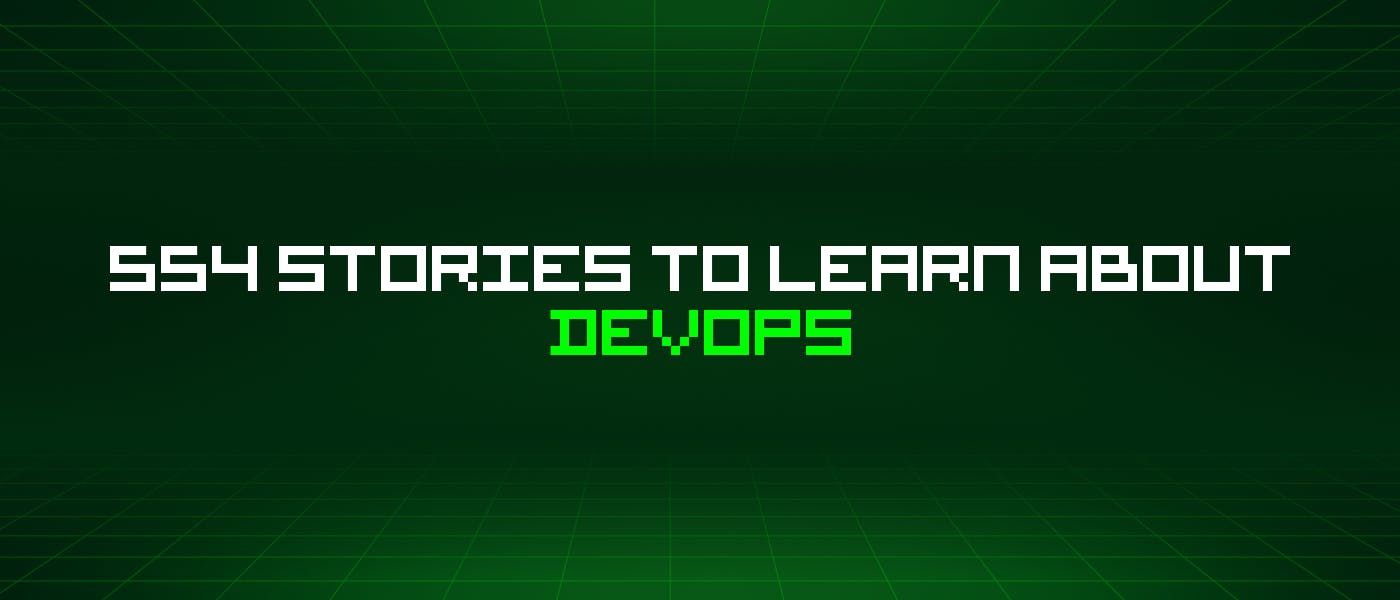Let's learn about Devops via these 554 free stories. They are ordered by most time reading created on HackerNoon. Visit the /Learn Repo to find the most read stories about any technology.
How Devs from Venus and Ops from Mars get along for fast and furious software development? Is DevOps with CI/CD the nitromethane to your SDLC?
1. 10 FREE Docker, Jenkins, and Maven Courses for Programmers and DevOps Engineers
 Docker, Maven, and Jenkins are some of the most popular tools in the DevOps and Java world. Maven helps to organize your project and provide support to build and deploy Java projects while Jenkins can provide continuous integration and delivery by completely automating build and deploy projects.
Docker, Maven, and Jenkins are some of the most popular tools in the DevOps and Java world. Maven helps to organize your project and provide support to build and deploy Java projects while Jenkins can provide continuous integration and delivery by completely automating build and deploy projects.
2. How To Debug PHP Container With Xdebug And PhpStorm
 I will setup a very simple php page and debug it using xdebug and PhpStorm.
I will setup a very simple php page and debug it using xdebug and PhpStorm.
3. Kubernetes vs. OpenShift: A Thorough Comparison
 Gartner predicts that by 2022, more than 75% of global organizations will be running containerized applications in production, which is a significant increase from fewer than 30% today
Gartner predicts that by 2022, more than 75% of global organizations will be running containerized applications in production, which is a significant increase from fewer than 30% today
4. How To Run Docker Linux Containers Natively on Windows
 With Docker Desktop running on WSL 2, users can leverage Linux workspaces and avoid having to maintain both Linux and Windows build scripts.
With Docker Desktop running on WSL 2, users can leverage Linux workspaces and avoid having to maintain both Linux and Windows build scripts.
How is it different?
5. How to Fix Security Bugs Faster with curl Validation
 Learn how to leverage the Validate Finding feature of StackHawk to find and fix security bugs faster.
Learn how to leverage the Validate Finding feature of StackHawk to find and fix security bugs faster.
6. Why the Fuss About Serverless?
 To explain this, I’m going to have to recap on some old work with a particular focus on co-evolution.
To explain this, I’m going to have to recap on some old work with a particular focus on co-evolution.
7. Why is DevOps for Machine Learning so Different?
 The term ‘MLOps’ is appearing more and more. Many from a traditional DevOps background might wonder why this isn’t just called ‘DevOps’. In this article we’ll explain why MLOps is so different from mainstream DevOps and see why it poses new challenges for the industry.
The term ‘MLOps’ is appearing more and more. Many from a traditional DevOps background might wonder why this isn’t just called ‘DevOps’. In this article we’ll explain why MLOps is so different from mainstream DevOps and see why it poses new challenges for the industry.
8. Here's How I Got Started With Kubernetes: Part I
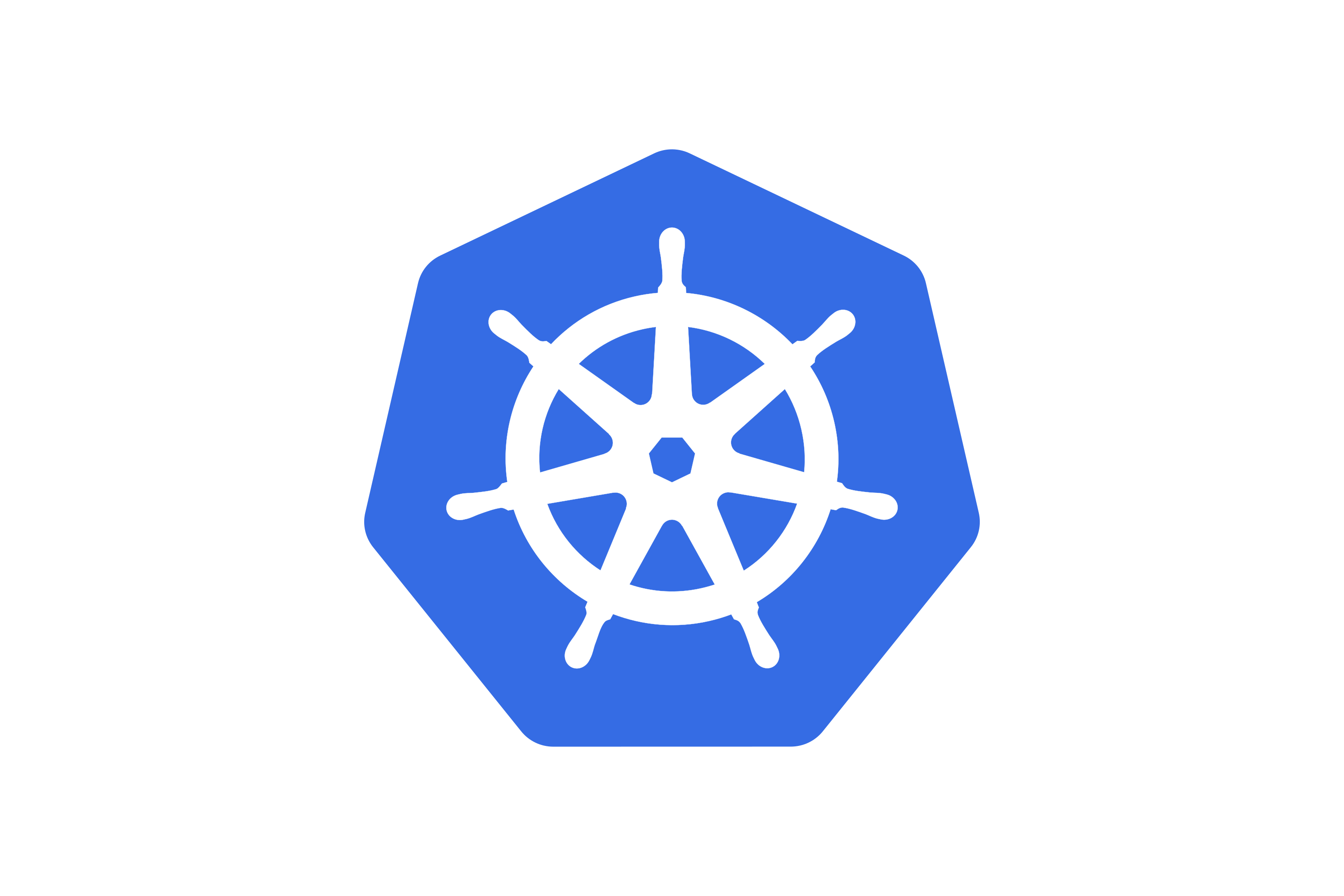 While scheduling classes for my final semester of college, I was very eager to do something different. Like many of my computer science peers, I had grown tired of the typical class where we have to reinvent the wheel when learning new concepts.
While scheduling classes for my final semester of college, I was very eager to do something different. Like many of my computer science peers, I had grown tired of the typical class where we have to reinvent the wheel when learning new concepts.
9. Strategies for Using Config as Code
 This post explains some good practices for using Config as Code and how to adjust your strategy in different situations.
This post explains some good practices for using Config as Code and how to adjust your strategy in different situations.
10. Increasing Developer Productivity with skaffold
 Primary focus of Developer is to write code. Build, Test and Deploy of the application are better left to be managed by tools. skaffold can help in automating some of mundane tasks that comes with using kubernetes.
Primary focus of Developer is to write code. Build, Test and Deploy of the application are better left to be managed by tools. skaffold can help in automating some of mundane tasks that comes with using kubernetes.
11. How to troubleshoot potential DOS attacks
 I've had a few scares in my career as a developer, but none come close to the pure horror of unsuccessfully trying to ssh into your VM. Normal people tend to be scared of spiders, snakes or saws.
I've had a few scares in my career as a developer, but none come close to the pure horror of unsuccessfully trying to ssh into your VM. Normal people tend to be scared of spiders, snakes or saws.
12. 10+ Best Resources to learn DevOps in Depth [Online Courses]

13. Why We Love Docker and Best Practices for DevOps
 Every company is becoming a software company these days, and there is so much happening around making software development occur at record speeds.
Every company is becoming a software company these days, and there is so much happening around making software development occur at record speeds.
14. How CI/CD and Microservices Led to Kubernetes: Kube Explained Part 1
 Engineering teams have always had constant pressure to deliver software faster, cheaper, and more reliably. As a result, many of the recent trends in backend infrastructure have been driven by these factors.
Engineering teams have always had constant pressure to deliver software faster, cheaper, and more reliably. As a result, many of the recent trends in backend infrastructure have been driven by these factors.
15. Technology in the Oil and Gas Industry: An MLOps Perspective
 The Oil and gas industry generates an annual revenue that was approximately $3.3 trillion in 2019 and is one of the largest enterprises in the world. Oil and natural gas upstream, midstream and downstream processes constantly generate large amounts of data and is immensely dependent on sophisticated technologies to reveal new insights in the business i.e prevent equipment malfunctioning and improve operational efficiency…
The Oil and gas industry generates an annual revenue that was approximately $3.3 trillion in 2019 and is one of the largest enterprises in the world. Oil and natural gas upstream, midstream and downstream processes constantly generate large amounts of data and is immensely dependent on sophisticated technologies to reveal new insights in the business i.e prevent equipment malfunctioning and improve operational efficiency…
16. How to Clear the 301/302 Redirection Cache
 I think many web developers and server administrators had been facing the 301 redirection cache. I had facing it very often until I learn the lesson…
I hope it helps you and you learn something from me, not from your mistakes 💥
I think many web developers and server administrators had been facing the 301 redirection cache. I had facing it very often until I learn the lesson…
I hope it helps you and you learn something from me, not from your mistakes 💥
17. Logging Everything in JSON Format
 Logging and monitoring are like Tony Stark and his Iron Man suit, the two will go together. Similarly, logging and monitoring work best together because they complement each other well.
Logging and monitoring are like Tony Stark and his Iron Man suit, the two will go together. Similarly, logging and monitoring work best together because they complement each other well.
18. How To Store Secrets Like API Keys
 Secrets in version control systems (VCS) like git is the current state of the world despite widely being recognized as a bad practice. Once source code enters a git repository, it can organically spread into multiple locations. This includes any secrets that may be included within. But why then are secrets in git repositories so common.
Secrets in version control systems (VCS) like git is the current state of the world despite widely being recognized as a bad practice. Once source code enters a git repository, it can organically spread into multiple locations. This includes any secrets that may be included within. But why then are secrets in git repositories so common.
19. Distroless Containers: Hype or True Value?
 The goal
The goal
20. My Journey to Achieving DevOps Bliss, Without Useless AWS certifications
 The story of how I transformed from a naive full-stack engineer struggling with AWS and PaaS providers to loving my life and achieving DevOps bliss.
The story of how I transformed from a naive full-stack engineer struggling with AWS and PaaS providers to loving my life and achieving DevOps bliss.
21. Netflix Tech Stack Has No Chill: How To Account for 15% of the World's Bandwidth
 Disclaimer: This is NOT a press release by Netflix. Just my honest review of tech that helps us binge great content without hassle.
Disclaimer: This is NOT a press release by Netflix. Just my honest review of tech that helps us binge great content without hassle.
22. How To Create a CD pipeline with Kubernetes, Ansible, and Jenkins
 What does CI/CD try to solve?
What does CI/CD try to solve?
23. Introducing the InfoSec colour wheel — blending developers with red and blue security teams.

24. What Future Holds for DevOps in 2020: A Complete Guide
 Software is eating the world, in all sectors. Marc Andreessen, the founder of Netscape, said it long back about how software is eating the world. He also summarised that every company is a software company these days, and software companies are poised to take over broad swathes of the economy. You’ll see DevOps clearly in 2020, where continuous updates transform the way software is delivered to a nearly-limitless marketplace. DevOps has become a must to thrive in this highly competitive technological world.
Software is eating the world, in all sectors. Marc Andreessen, the founder of Netscape, said it long back about how software is eating the world. He also summarised that every company is a software company these days, and software companies are poised to take over broad swathes of the economy. You’ll see DevOps clearly in 2020, where continuous updates transform the way software is delivered to a nearly-limitless marketplace. DevOps has become a must to thrive in this highly competitive technological world.
25. The #1 Reason Jenkins Fails
 Jenkins down? Pipelines broken? Hackers making off with your data? It often stems from one fatal flaw. While Jenkins has been both loved and hated for being DevOps duct tape, every user knows there are plenty of issues to deal with. Over the past three years, as part of my work at Codefresh I’ve been helping teams migrate from Jenkins and I’ve seen all of these issues over and over again. The biggest issue may surprise you because it creates a cascade effect.
Jenkins down? Pipelines broken? Hackers making off with your data? It often stems from one fatal flaw. While Jenkins has been both loved and hated for being DevOps duct tape, every user knows there are plenty of issues to deal with. Over the past three years, as part of my work at Codefresh I’ve been helping teams migrate from Jenkins and I’ve seen all of these issues over and over again. The biggest issue may surprise you because it creates a cascade effect.
26. How to 10x Software Engineering Productivity with Better Dev Tools
 Low-Code: Achieving 10x Software Engineering Productivity Through Better Dev Tools
Low-Code: Achieving 10x Software Engineering Productivity Through Better Dev Tools
27. DevOps Pipeline: The Ultimate Cheat Sheet
 We are here to help you create your first DevOps pipeline with a step-by-step process.
We are here to help you create your first DevOps pipeline with a step-by-step process.
28. An Intro to Dynamic CDK Dashboards
 How to create a construct based on other constructs in the same stack without forcing the developer to call a method for each? That's exactly what aspects do!
How to create a construct based on other constructs in the same stack without forcing the developer to call a method for each? That's exactly what aspects do!
29. Repeating Nodes With YAML Aliases Like A Pro
 Have you ever had to copy and paste duplicate content in a YAML file and wondered if it is possible to DRY that up?
Have you ever had to copy and paste duplicate content in a YAML file and wondered if it is possible to DRY that up?
30. Automatically Scan Your Project Dependencies for Vulnerabilities Using Docker, Jenkins (Part 1/2)
 Find out how to automatically check your software projects for potential vulnerabilities caused by 3rd party code.
Find out how to automatically check your software projects for potential vulnerabilities caused by 3rd party code.
31. The One Config to Rule Them All
 Goplicate - An epic tale about a developer trying to maintain dozens of project config files and finding the one config to bind them and rule them all.
Goplicate - An epic tale about a developer trying to maintain dozens of project config files and finding the one config to bind them and rule them all.
32. AWS RDS from a Serverless Perspective
 In this article, we'll deep dive into all the basics to help you hit the ground running when it comes to AWS RDS.
In this article, we'll deep dive into all the basics to help you hit the ground running when it comes to AWS RDS.
33. Automatically Scan Your Project Dependencies for Vulnerabilities Using Docker, Jenkins (Part 2/2)
 The OWASP Dependency-Check tool is a popular tool to check dependencies. We will discuss how we can run it standalone or integrate it into CI/CD Pipeline.
The OWASP Dependency-Check tool is a popular tool to check dependencies. We will discuss how we can run it standalone or integrate it into CI/CD Pipeline.
34. Two Friendly Tools Of a "10X Engineer"
 Hi Everyone, Hope you all Programming geeks are doing well. In today's modern Software Industry, there are two types of engineers:
Hi Everyone, Hope you all Programming geeks are doing well. In today's modern Software Industry, there are two types of engineers:
35. 7 Steps to a Winning Cloud Migration Strategy
 Cloud computing has revolutionized IT since the 2000’s, and this revolution is far from over. Formerly, organizations would host their data on-premise as that was the only option available, but with the advancement in technology, and fast-changing business demands, cloud-based solutions started turning out to be a more flexible and powerful option for organizations. There is a mass migration underway to adopt cloud infrastructure and avoid the hassles and operational costs of managing infrastructure in-house.
Cloud computing has revolutionized IT since the 2000’s, and this revolution is far from over. Formerly, organizations would host their data on-premise as that was the only option available, but with the advancement in technology, and fast-changing business demands, cloud-based solutions started turning out to be a more flexible and powerful option for organizations. There is a mass migration underway to adopt cloud infrastructure and avoid the hassles and operational costs of managing infrastructure in-house.
36. Docker is dead. Long live the Unikernel.
 As the cloud-native ecosystem evolves, it is beginning to appear as if a challenger to containerization has emerged. In this blog post, I'm going to dive into what unikernels are, and why I think they will be the most likely candidate to replace container-based infrastructure.
As the cloud-native ecosystem evolves, it is beginning to appear as if a challenger to containerization has emerged. In this blog post, I'm going to dive into what unikernels are, and why I think they will be the most likely candidate to replace container-based infrastructure.
37. 300 Scholarships Up For Grabs at The School of Cloud Computing Courtesy Udacity and SUSE
 Apply today for Udacity’s SUSE Cloud Native Foundations Scholarship program and learn the skills you need to become a cloud native developer.
Apply today for Udacity’s SUSE Cloud Native Foundations Scholarship program and learn the skills you need to become a cloud native developer.
38. Deploy a LAMP stack as a Helm Chart
 Kubernetes deployments are becoming even more complex but Helm is a good solution to bridge this deployment complexity and package Kubernetes applications
Kubernetes deployments are becoming even more complex but Helm is a good solution to bridge this deployment complexity and package Kubernetes applications
39. We Need Some SPACE: What Is Missing From DORA?
 The SPACE framework offers a holistic approach which takes into account wellbeing, collaboration and satisfaction alongside the usual performance metrics.
The SPACE framework offers a holistic approach which takes into account wellbeing, collaboration and satisfaction alongside the usual performance metrics.
40. Scan Kubernetes RBAC with Kubescape and Kubiscan
 Exploring Kubernetes ecosystem tools like Kubiscan and Kubescape to scan and evaluate RBAC model of GKE cluster.
Exploring Kubernetes ecosystem tools like Kubiscan and Kubescape to scan and evaluate RBAC model of GKE cluster.
41. API-as-a-Service is the Next Step in the Software World's Evolution
 APIs are the foundational building blocks on which the software world is being built. What will the next wave of API-as-a-service winners look like?
APIs are the foundational building blocks on which the software world is being built. What will the next wave of API-as-a-service winners look like?
42. A Better Way to Monitor Your Laravel Services
 Kubernetes or auto scaling can create a bit of mess in your monitoring data. Learn how to monitor your Laravel application by services instead of hostnames.
Kubernetes or auto scaling can create a bit of mess in your monitoring data. Learn how to monitor your Laravel application by services instead of hostnames.
43. Container Security Tools to Try in 2023
 7 Strategies and associated tools for your container security workflows.
7 Strategies and associated tools for your container security workflows.
44. AWS Lightsail: The Why, Hows, and Whats
 Lightsail is an easy-to-use alternative to EC2, offering everything you need to build websites and simple web applications.
Lightsail is an easy-to-use alternative to EC2, offering everything you need to build websites and simple web applications.
45. The Challenges of Modern Observability
 It’s tough, impossible, to get a holistic view of your entire application when it’s running on 200 pods deployed to 12 nodes distributed across the world.
It’s tough, impossible, to get a holistic view of your entire application when it’s running on 200 pods deployed to 12 nodes distributed across the world.
46. How to Build a Decoupled Microservice Using Materialize
 One way to handle data in microservice architectures is to use decoupled microservices architecture. This form of architecture can bring many benefits.
One way to handle data in microservice architectures is to use decoupled microservices architecture. This form of architecture can bring many benefits.
47. Revealed: The Most Important DevOps Tools For Newbies
 DevOps is practice/tools to run the services and applications on Cloud infrastructure. Scripting,git,Jenkins,Ansible/Puppet/Chef,Docker,GCP,AWS,Azure
DevOps is practice/tools to run the services and applications on Cloud infrastructure. Scripting,git,Jenkins,Ansible/Puppet/Chef,Docker,GCP,AWS,Azure
48. Emergence of DevOps: Creating an Agile Culture in Product Engineering
 Before discussing the solution, let’s first understand the traditional software development cycle.
Before discussing the solution, let’s first understand the traditional software development cycle.
49. How to Publish NuGet Packages to a Private Feed Using Azure Artifacts
 We can publish NuGet packages to internal feeds hosted in Azure Artifacts easily via pipelines defined in YAML files.
We can publish NuGet packages to internal feeds hosted in Azure Artifacts easily via pipelines defined in YAML files.
50. Security Considerations in Golang

51. How DevOps Evolved Into DevSecOps
 The rise in cybercrime and the sophistication of attacks has made security a crucial part of the development process and not just an afterthought.
The rise in cybercrime and the sophistication of attacks has made security a crucial part of the development process and not just an afterthought.
52. GitOps Tutorial: How to Provision an EC2 Instance with Crossplane and Flux
 In this article, we are going to learn how to automate the provisioning of cloud resources via Crossplane and combine it with GitOps practices.
In this article, we are going to learn how to automate the provisioning of cloud resources via Crossplane and combine it with GitOps practices.
You will most b
53. How To Setup Continuous Integration Pipeline By Using Terraform And GitLab CI
 Terraform is a fantastic tool for managing your cloud infrastructure, especially if your assets are hosted on multiple cloud providers.
Terraform is a fantastic tool for managing your cloud infrastructure, especially if your assets are hosted on multiple cloud providers.
54. Reveal Go Module Vulnerabilities With Xray
 Golang developers care a lot about security and as Go modules become more widely used, they need more ways to assure these publicly shared files are safe.
Golang developers care a lot about security and as Go modules become more widely used, they need more ways to assure these publicly shared files are safe.
55. What Really Propelled The Cloud Revolution: A Developer's Perspective
 An overview of the main trends that have pushed the Cloud industry — and the world — forward, in the past decade and a half.
An overview of the main trends that have pushed the Cloud industry — and the world — forward, in the past decade and a half.
[56. How to Become a Great
Developer in 2022](https://hackernoon.com/how-to-become-a-great-developer-in-2022)
 Google Cloud’s DevOps Research and Assessment team (DORA) have released the State of DevOps report 2021. It’s of no surprise that the most successful teams are
Google Cloud’s DevOps Research and Assessment team (DORA) have released the State of DevOps report 2021. It’s of no surprise that the most successful teams are
57. How To Use Cloud Native Buildpacks
 It never fails that the CNCF seem to always be cooking up something interesting in their ecosystem. In my free time, I always seem to find myself in a habit of playing in the Sandbox to see what new cutting edge tools I can add to my collection. It is my goal today to introduce you to a project at the Sandbox stage known as "Buildpacks".
It never fails that the CNCF seem to always be cooking up something interesting in their ecosystem. In my free time, I always seem to find myself in a habit of playing in the Sandbox to see what new cutting edge tools I can add to my collection. It is my goal today to introduce you to a project at the Sandbox stage known as "Buildpacks".
58. Introduction to Bash Scripting: My Open Source E-Book
 I have just released an open-source introduction to Bash scripting ebook/guide that will help you learn the basics of Bash scripting and start writing awesome Bash scripts that will help you automate your daily SysOps, DevOps, and Dev tasks.
I have just released an open-source introduction to Bash scripting ebook/guide that will help you learn the basics of Bash scripting and start writing awesome Bash scripts that will help you automate your daily SysOps, DevOps, and Dev tasks.
59. Why Your Project's 1st Commit Should Have a Working App & CI/CD Pipeline
 Automating The Automation Behind DevOps
Automating The Automation Behind DevOps
60. K3d for Local Kubernetes Development
 k3d is wrapper around k3s - Lightweight Kubernetes, which helps to run k3d in docker containers. The blog is all about local Kubernetes development using k3d.
k3d is wrapper around k3s - Lightweight Kubernetes, which helps to run k3d in docker containers. The blog is all about local Kubernetes development using k3d.
61. Post Mortem: Kubernetes Node OOM
 Production issues are never fun. They always seem to happen when you’re not at work, and the cause always seems to be silly. We recently had issues in our production Kubernetes cluster with nodes running out of memory, but the node recovered very quickly without any noticeable interruptions. In this story we will go over the specific issue that happened in our cluster, what the impact was, and how we will avoid this issue in the future.
Production issues are never fun. They always seem to happen when you’re not at work, and the cause always seems to be silly. We recently had issues in our production Kubernetes cluster with nodes running out of memory, but the node recovered very quickly without any noticeable interruptions. In this story we will go over the specific issue that happened in our cluster, what the impact was, and how we will avoid this issue in the future.
62. Hacking Your Way Through Microservice Architecture
 With an emerging pattern of organizations embracing the DevOps framework, adopting Microservice Architecture is steadily gaining the respect it deserves.
With an emerging pattern of organizations embracing the DevOps framework, adopting Microservice Architecture is steadily gaining the respect it deserves.
63. Amazon Elastic Kubernetes Service (EKS) vs. Azure Kubernetes Service (AKS), A Comparison
 Managed Kubernetes is experiencing massive growth in adoption and many organizations are moving their self-managed Kubernetes clusters.
Managed Kubernetes is experiencing massive growth in adoption and many organizations are moving their self-managed Kubernetes clusters.
64. How to Integrate GitHub Actions and CI/CD With Your Next Python Project
 We're going to create a CI/CD pipeline for a typical Python package. The text focuses on practical aspects and should be enough to get you started!
We're going to create a CI/CD pipeline for a typical Python package. The text focuses on practical aspects and should be enough to get you started!
65. When NOT to Use AWS Elastic Beanstalk [Deep Dive]
 First off, this is not a critique of Amazon’s Elastic Beanstalk — it’s a great service that allows you to deploy web applications without having a lot of in-house DevOps expertise. If you’re a young startup looking to deploy your web app on a tight schedule — it’s naturally a tempting choice, but sometimes it’s the wrong choice.
First off, this is not a critique of Amazon’s Elastic Beanstalk — it’s a great service that allows you to deploy web applications without having a lot of in-house DevOps expertise. If you’re a young startup looking to deploy your web app on a tight schedule — it’s naturally a tempting choice, but sometimes it’s the wrong choice.
66. How to Handle Configuration for Multiple Environments in Console App Service?
 How I automated the process of service deployment for a console application after issues caused due to multiple configuration environments.
How I automated the process of service deployment for a console application after issues caused due to multiple configuration environments.
67. Purpose-Driven Microservice Design
 Creating purpose-driven microservices should always be a goal. Find out how Render Blueprints can offer a reproducible microservices strategy.
Creating purpose-driven microservices should always be a goal. Find out how Render Blueprints can offer a reproducible microservices strategy.
68. How to Cultivate a Collaborative DevOps Culture
 Learn about key roles involved in DevOps, their skills and responsibilities, and ways DevOps automation can reduce the communication gap.
Learn about key roles involved in DevOps, their skills and responsibilities, and ways DevOps automation can reduce the communication gap.
69. The DevOps Mindset: A Step-by-Step Plan to Implement DevOps
 Discover what DevOps exactly is, five DevOps best practices, essential DevOps benefits like faster software releases, and nine key steps to implement DevOps.
Discover what DevOps exactly is, five DevOps best practices, essential DevOps benefits like faster software releases, and nine key steps to implement DevOps.
70. Site Reliability Engineering with Azure
 Tools for SRE: Azure Monitor, Azure Traffic Manager, Azure Resource Manager, Azure Policy, Azure Automation, Azure Advisor, Azure Automanage, Azure Blueprint
Tools for SRE: Azure Monitor, Azure Traffic Manager, Azure Resource Manager, Azure Policy, Azure Automation, Azure Advisor, Azure Automanage, Azure Blueprint
71. Don't Hesitate to Raise an Incident
 Declaring your first incident can be intimidating. Let’s look at some common fears, and work out how to address them.
Declaring your first incident can be intimidating. Let’s look at some common fears, and work out how to address them.
72. Why Dockerizing Applications is the Key to Building Scalable Software
 Container technologies have a profound impact on the entire IT industry. Learn the basic principles behind containers and the 10 reasons why you should use them
Container technologies have a profound impact on the entire IT industry. Learn the basic principles behind containers and the 10 reasons why you should use them
73. Containers vs. Serverless from a DevOps Standpoint
 Two buzzwords walk into a bar… No? Yeah, let’s not go there. If you feel like this, you’re in the right place. Both containers and serverless have been the cool new kid on the block for the last few years, and the popularity simply isn’t dying down.
Two buzzwords walk into a bar… No? Yeah, let’s not go there. If you feel like this, you’re in the right place. Both containers and serverless have been the cool new kid on the block for the last few years, and the popularity simply isn’t dying down.
74. How To Use Environment Variables In Docker Compose File
 If I want to use different credentials on different servers, environment variables work great with docker compose.
If I want to use different credentials on different servers, environment variables work great with docker compose.
75. 5 Tips to Be More Productive With Kubernetes
 I like to read about and see how people set up their environments and any tools, tips, and tricks they use to be more productive when working with Kubernetes and Istio. What follows is a collection of 5 tips and tools that I use daily, and I think it makes me more productive with Kubernetes and Istio.
I like to read about and see how people set up their environments and any tools, tips, and tricks they use to be more productive when working with Kubernetes and Istio. What follows is a collection of 5 tips and tools that I use daily, and I think it makes me more productive with Kubernetes and Istio.
76. Full Production Django Docker Configuration
 The current software development ecosystem moves fast and it seems older frameworks like Django or Rails becoming absolute, but it is a huge underestimation! Django is one of the unique frameworks that I like to use - first of all because it contains everything in it, with just a few simple configurations.
The current software development ecosystem moves fast and it seems older frameworks like Django or Rails becoming absolute, but it is a huge underestimation! Django is one of the unique frameworks that I like to use - first of all because it contains everything in it, with just a few simple configurations.
77. Advanced CI/CD for Android projects using Bitbucket and Bitrise

78. The Dark Side of Microservices, Explained
 There is an endless supply of blog posts, white papers, and slide decks, evangelizing the virtues of microservices. They talk about how microservices “increase agility,” are “more scalable,” and promise that when you make the switch, engineers will be pounding at your office door looking for a job.
There is an endless supply of blog posts, white papers, and slide decks, evangelizing the virtues of microservices. They talk about how microservices “increase agility,” are “more scalable,” and promise that when you make the switch, engineers will be pounding at your office door looking for a job.
79. GitHub Actions: How To Deploy To Google Kubernetes Engine
 GitHub actions and workflows are great. We use them to deploy a web app to different cluster environments and I want to show you how we did it. Hopefully, this helps to simplify your deployment process as well. I’ve also written a companion article that describes our GitHub workflows for continuous integration.
GitHub actions and workflows are great. We use them to deploy a web app to different cluster environments and I want to show you how we did it. Hopefully, this helps to simplify your deployment process as well. I’ve also written a companion article that describes our GitHub workflows for continuous integration.
80. Delays in app delivery to Kubernetes
 Enterprises around the world are waking up to the containers and Kubernetes trend. There are numerous benefits of delivering an application as container packages to Kubernetes but at the same time, the process of app containerization and the subsequent app deployment to Kubernetes can hit many roadblocks. Since the idea of using Kubernetes and containers for app delivery is fairly recent, the transition from traditional delivery systems to these modern delivery systems is a bumpy ride.
Enterprises around the world are waking up to the containers and Kubernetes trend. There are numerous benefits of delivering an application as container packages to Kubernetes but at the same time, the process of app containerization and the subsequent app deployment to Kubernetes can hit many roadblocks. Since the idea of using Kubernetes and containers for app delivery is fairly recent, the transition from traditional delivery systems to these modern delivery systems is a bumpy ride.
81. Debugging Rust Cargo Issues in Gitlab
 Straightforward moral of the story: always first check environment variables in CI settings. They can overwrite your configs and cause unexpected issues.
Straightforward moral of the story: always first check environment variables in CI settings. They can overwrite your configs and cause unexpected issues.
82. Microservices and Frameworks, All You Need to Know
 We will look at the benefits of developing in microservices, the concept of frameworks and why you should consider them, and more.
We will look at the benefits of developing in microservices, the concept of frameworks and why you should consider them, and more.
83. 9 Best DevOps Practices for a successful DevOps Journey
 The success of DevOps lies in the right way of implementation. Here, are some best DevOps practices for successful DevOps transformation in 2022 and beyond.
The success of DevOps lies in the right way of implementation. Here, are some best DevOps practices for successful DevOps transformation in 2022 and beyond.
84. There is No Continuous Delivery Without Continuous Testing
 Three Ways Automated Testing Closes the Gap Between Development and Delivery
Three Ways Automated Testing Closes the Gap Between Development and Delivery
85. How to Create Release Pipelines in Azure Devops in 7 Simple Steps
 This article will explain how to create release pipelines in Azure Devops in seven simple steps.
This article will explain how to create release pipelines in Azure Devops in seven simple steps.
86. Containers vs. Serverless: Which is Better for DevOps?
 Managing your own containers versus letting serverless do it for you - when to choose what? Let's go over the pros and cons.
Managing your own containers versus letting serverless do it for you - when to choose what? Let's go over the pros and cons.
87. Are You Telling The Story of Your Software?
 This is Minard's analysis of the fall of Napoleon's Grand Army at the French invasion of Russia in 1812, considered a masterpiece of analytic design:
This is Minard's analysis of the fall of Napoleon's Grand Army at the French invasion of Russia in 1812, considered a masterpiece of analytic design:
88. How to Run A Cronjob That Stops an EC2 Instance When SSH or Session Manager Connections are Closed
 How to use the AWS CDK to provision an EC2 instance that is automatically stopped when there are no open SSH or Session Manager connections to it.
How to use the AWS CDK to provision an EC2 instance that is automatically stopped when there are no open SSH or Session Manager connections to it.
89. Treating DevOps Like Skynet with ChatGPT
 One area that really has the tech industry taken by storm is ChatGPT's capability of writing code.
One area that really has the tech industry taken by storm is ChatGPT's capability of writing code.
90. How Developers Will Work in 2022
 The job of developers has never been more difficult. There is constant pressure to keep up with the trends. Here are a few to keep in mind for 2022.
The job of developers has never been more difficult. There is constant pressure to keep up with the trends. Here are a few to keep in mind for 2022.
91. Top DevOps Myths Debunked - [DevOops Part 1]
 Today, we are debunking some of the most popular myths about DevOps.
Today, we are debunking some of the most popular myths about DevOps.
92. Building Elixir Applications as systemd Services
 Build your projects with Nspawn
Build your projects with Nspawn
93. Road To Front- End Developer in 2023
 To become a good frontend developer, you must be aware of the importance of frontend development and its role in creating websites and web applications.
To become a good frontend developer, you must be aware of the importance of frontend development and its role in creating websites and web applications.
94. It's Free to Learn Docker. Do it Now!

95. Setting Up AWS SecurityHub With Terraform in a Minute
 A simple example of setting up SecurityHub at the Organization level with Terraform.
A simple example of setting up SecurityHub at the Organization level with Terraform.
96. How To Run Deno.js in Docker
 What is Deno? Deno is a simple, modern and secure runtime for JavaScript and TypeScript that uses V8 and is built in Rust.
What is Deno? Deno is a simple, modern and secure runtime for JavaScript and TypeScript that uses V8 and is built in Rust.
97. Comparing Optimistic and Pessimistic Locking With GO and PostgreSQL
 Comparison between Optimistic and Pessimistic locking with Golang and PostgreSQL
Comparison between Optimistic and Pessimistic locking with Golang and PostgreSQL
98. 10 Best Practices from the Industry and Community in Kubernetes Security
 One of the best ways to tighten your Kubernetes security is by implementing ten tactics that have become industry-standard.
One of the best ways to tighten your Kubernetes security is by implementing ten tactics that have become industry-standard.
99. Serverless Functions with C#, Azure and AWS
 This article will explain how to build serverless functions on the primary cloud providers services: Azure and AWS.
This article will explain how to build serverless functions on the primary cloud providers services: Azure and AWS.
100. Getting Distribution Right: DevOps Digital Transformation in 90 Days
 You’re digitally transforming yourself and your company in 90 days whether you like it or not.
You’re digitally transforming yourself and your company in 90 days whether you like it or not.
101. An Introduction to DevOps
 In this post, we take a surface-level look at the parts that make up DevOps. We explore the concepts, tools, and unique roles that make it work as it does.
In this post, we take a surface-level look at the parts that make up DevOps. We explore the concepts, tools, and unique roles that make it work as it does.
102. Fixing The ClickHouse Node Failure On Distributed Systems - A How-To Guide
 Part One: ClickHouse Failures, by Marcel Birkner
Part One: ClickHouse Failures, by Marcel Birkner
103. Creating and Deploying a Simple Helm Chart
 Learn how to create a simple Helm chart to package and deploy individual Kubernetes applications.
Learn how to create a simple Helm chart to package and deploy individual Kubernetes applications.
104. Top 35 Linux Console Tips and Tricks From Practical Experience
 This article will be beginner friendly, only this time in the Linux console. The material is presented, from my experience.
This article will be beginner friendly, only this time in the Linux console. The material is presented, from my experience.
105. How To Extend Docker Compose File
 How to use different/multiple docker compose files on different servers
?
How to use different/multiple docker compose files on different servers
?
106. Software Development Trends To Watch in 2022: From AI to EDA
 Software development trends have always been evolving. Here in this post, we have covered essential software development trends to watch in 2022.
Software development trends have always been evolving. Here in this post, we have covered essential software development trends to watch in 2022.
107. How To Extend AWS EBS Volumes With No Downtime
 This can be applied whenever you need to extend your EBS volume size avoiding to stop the instance and detach the volume.
This can be applied whenever you need to extend your EBS volume size avoiding to stop the instance and detach the volume.
108. Key Questions to Ask your DevOps Teams About Containers and Kubernetes
 DevOps teams are responsible for balancing two important forces
in their organizations’ software development efforts: shorter delivery cycle
times for applications that continue to increase in size and diversity.
DevOps teams are responsible for balancing two important forces
in their organizations’ software development efforts: shorter delivery cycle
times for applications that continue to increase in size and diversity.
109. How Infrastructure as Code Is Forcing a Revolution in Cost Management
 You might have read our beta launch blog post, which describes how Infrastructure as Code (IaC) is driving the third datacenter revolution (the first two being virtualization and the move to public clouds). In this post, I want to go deeper into looking at how IaC is driving a new need and approach to cost visibility and management.
You might have read our beta launch blog post, which describes how Infrastructure as Code (IaC) is driving the third datacenter revolution (the first two being virtualization and the move to public clouds). In this post, I want to go deeper into looking at how IaC is driving a new need and approach to cost visibility and management.
110. A Quick Guide to Writing YAML for Kubernettes
 YAML is a human-friendly, data serialization standard. It also has various applications in Kubernetes.
YAML is a human-friendly, data serialization standard. It also has various applications in Kubernetes.
111. 7 Best Docker Alternatives in 2022
 A list of decent Docker alternatives that might fit your needs.
A list of decent Docker alternatives that might fit your needs.
112. AWS vs Google Cloud: We Asked the Devs
 Spoiler alert: It's AWS for the win.
Spoiler alert: It's AWS for the win.
113. How To Improve Your Software Documentation by Connecting Gitlab with Mkdocs
 Producing documentation may be painful and need a lot of time to write and operate. In this story, i will share with you, my way of generating docs using the devops approach. To make life easier, we will explore the art of automation 😃.
Producing documentation may be painful and need a lot of time to write and operate. In this story, i will share with you, my way of generating docs using the devops approach. To make life easier, we will explore the art of automation 😃.
114. Understanding Pods in Kubernetes
 Pods are Kubernetes Objects that are the basic unit for running our containers inside our Kubernetes cluster.
Pods are Kubernetes Objects that are the basic unit for running our containers inside our Kubernetes cluster.
115. Best CI/CD Tools to Consider in 2022
 CI/CD is an integral part of any successful DevOps team. This list includes the finest CI/CD tools currently available in the market.
CI/CD is an integral part of any successful DevOps team. This list includes the finest CI/CD tools currently available in the market.
116. Github Actions auto split of slow RSpec test file in parallel jobs for Ruby on Rails project
 How to run slow RSpec test files on Github Actions with parallel jobs by doing an auto split of the spec file by test examples
How to run slow RSpec test files on Github Actions with parallel jobs by doing an auto split of the spec file by test examples
117. CI/CD Best Practices for Salesforce DX
 With digital transformation and the move to online operations, companies are increasingly relying on Salesforce to manage many of their operations. New business needs and opportunities constantly increase the workload of Salesforce teams. In this context, teams are turning to Salesforce CI/CD to automate manual workflows, which help them handle these growing workloads and quickly deliver quality work to their end-users. This article gives you a short overview of how to implement CI-CD in Salesforce DX.
With digital transformation and the move to online operations, companies are increasingly relying on Salesforce to manage many of their operations. New business needs and opportunities constantly increase the workload of Salesforce teams. In this context, teams are turning to Salesforce CI/CD to automate manual workflows, which help them handle these growing workloads and quickly deliver quality work to their end-users. This article gives you a short overview of how to implement CI-CD in Salesforce DX.
118. Tips and Tricks to Pass Certified Kubernetes Application (CKA) Exam
 Certified Kubernetes Administrator: What you need to know to pass the CKA exam? Useful tips to pass the Certified Kubernetes Administrator exam.
Certified Kubernetes Administrator: What you need to know to pass the CKA exam? Useful tips to pass the Certified Kubernetes Administrator exam.
119. A Real Life Example of CI/CD Pipelines in Action
 CI/CD Pipeline – Case Study
CI/CD Pipeline – Case Study
120. Tail logs from multiple Kubernetes pods the simple way
 Kubernetes (a.k.a K8s) is the de-facto standard of container orchestration software backed by Google and one of the most active open source projects. If you are using Docker it is very likely that you are using Kubernetes or at least have heard about it.
Kubernetes (a.k.a K8s) is the de-facto standard of container orchestration software backed by Google and one of the most active open source projects. If you are using Docker it is very likely that you are using Kubernetes or at least have heard about it.
121. Kubernetes Explained Simply: Data Extraction With JSON Path [Part 8]
 kubectl can pull a lot of data about our deployments and pod. Most of the time, we humans are the recipients of that information, and kubectl obliges by nicely formatting things in pretty tables.
kubectl can pull a lot of data about our deployments and pod. Most of the time, we humans are the recipients of that information, and kubectl obliges by nicely formatting things in pretty tables.
122. 8 Must-Have Security Tools for Developers
 Today, the network perimeter is dead, and attackers have direct access to applications - only a click away from an organization’s sensitive data.
Today, the network perimeter is dead, and attackers have direct access to applications - only a click away from an organization’s sensitive data.
123. Building a Web Vulnerability Scanner
 In May this year I was part of a team that launched SecAlerts, a free security product that sends subscribers a customised weekly report of vulnerabilities and security news relevant to their software stack. The service was deliberately made a low-barrier of entry way to keep users informed and, as it nears 1,000 subscribers, the decision to 'keep it simple' appears to have merit.
In May this year I was part of a team that launched SecAlerts, a free security product that sends subscribers a customised weekly report of vulnerabilities and security news relevant to their software stack. The service was deliberately made a low-barrier of entry way to keep users informed and, as it nears 1,000 subscribers, the decision to 'keep it simple' appears to have merit.
124. Monitor Your Kubernetes Cluster Events With EventRouter, Golang, and Kafka
 In this article, I will show you how to build such a pipeline for processing and storing Kubernetes cluster events.
In this article, I will show you how to build such a pipeline for processing and storing Kubernetes cluster events.
125. AWS Re:Invent 2021: The Most Important Updates
 Find out what were the 22 most important serverless updates from re:Invent 2021. Announcements, updates and more - serverless edition >>
Find out what were the 22 most important serverless updates from re:Invent 2021. Announcements, updates and more - serverless edition >>
126. 6 Use Cases to Drive Down Cost Using AWS Lambda
 AWS Lambda is an event-driven computing cloud with many uses. Here are some of the best AWS Lambda use cases >>
AWS Lambda is an event-driven computing cloud with many uses. Here are some of the best AWS Lambda use cases >>
127. Sentiment Analysis using AWS Comprehend
 Sentiment analysis uses AI to identify the core emotion behind a piece of text. In this article, we will look at how to build a sentiment analyzer using AWS Comprehend.
Sentiment analysis uses AI to identify the core emotion behind a piece of text. In this article, we will look at how to build a sentiment analyzer using AWS Comprehend.
128. Automatic TLS/SSL/HTTPS for Jenkins X Previews
 Sanely Enabling TLS using CertManager/LetsEncrypt with Jenkins X's ExposeController on every Preview build
Sanely Enabling TLS using CertManager/LetsEncrypt with Jenkins X's ExposeController on every Preview build
129. How to Build a DevOps Culture Within Engineering Teams

130. Designing Compensation for On-call Engineers and Staff
 In this guide, we'll cover the various options for paying folks who are on-call, along with some advice, trade-offs and pitfalls to avoid.
In this guide, we'll cover the various options for paying folks who are on-call, along with some advice, trade-offs and pitfalls to avoid.
131. DevOps + Data: DevOps for Data Management
 Fresh Approaches to Effective Data Management.
What if we applied the existing DevOps techniques and patterns to the management ?
Fresh Approaches to Effective Data Management.
What if we applied the existing DevOps techniques and patterns to the management ?
132. GitLab Runners in EKS with AWS IAM
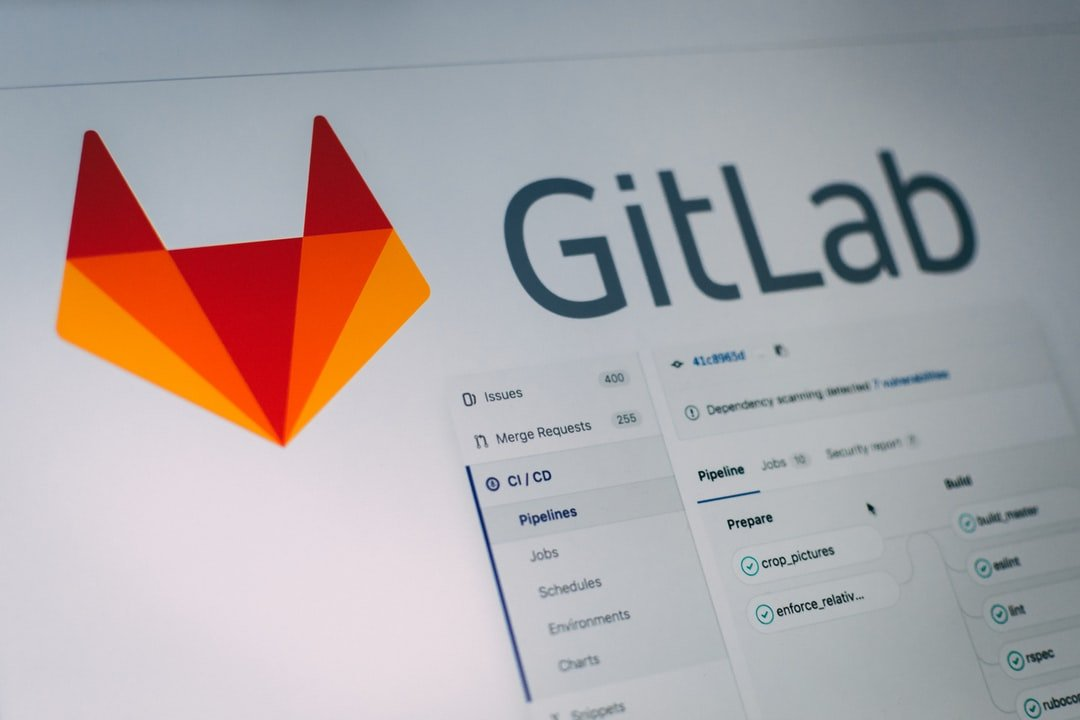 When we started with Kubernetes, around June 2018, the most popular choice on AWS was kops. But later down the road we migrated to the managed solution provided by AWS: EKS. I think it happened around the time when AWS announced PCI and ISO compliance and it also helped that meanwhile the managed platform was becoming available in more and more regions (because in the summer of 2018 you could use it only in very few locations).
When we started with Kubernetes, around June 2018, the most popular choice on AWS was kops. But later down the road we migrated to the managed solution provided by AWS: EKS. I think it happened around the time when AWS announced PCI and ISO compliance and it also helped that meanwhile the managed platform was becoming available in more and more regions (because in the summer of 2018 you could use it only in very few locations).
133. Computer Vision Is Solving Problems That Weren't Even On Our List
 Replicating human interaction and behavior is what artificial intelligence has always been about. In recent times, the peak of technology has well and truly surpassed what was initially thought possible, with countless examples of the prolific nature of AI and other technologies solving problems around the world.
Replicating human interaction and behavior is what artificial intelligence has always been about. In recent times, the peak of technology has well and truly surpassed what was initially thought possible, with countless examples of the prolific nature of AI and other technologies solving problems around the world.
134. Spend Zero Time on DevOps with Render PaaS
 Check out how efficient it is to create a new API using Go, and then deploy it to the Render PaaS, both for the first time with zero DevOps.
Check out how efficient it is to create a new API using Go, and then deploy it to the Render PaaS, both for the first time with zero DevOps.
135. An Introduction to Docker and How It is Important for Sysadmins
 Ever since Docker went live in early 2013 it’s had a love-hate relationship with programmers and sysadmins. While some ‘experienced’ developers that I’ve talked to have a strong dislike for containerization in general (more on that later), there’s a reason why a lot of major companies including eBay, Twitter, Spotify and Lyft have reportedly adopted Docker in their production environments.
Ever since Docker went live in early 2013 it’s had a love-hate relationship with programmers and sysadmins. While some ‘experienced’ developers that I’ve talked to have a strong dislike for containerization in general (more on that later), there’s a reason why a lot of major companies including eBay, Twitter, Spotify and Lyft have reportedly adopted Docker in their production environments.
136. How to Block Traffic to Your Website from Russia and Belarus
 I want to invite you all to block your website traffic from Russia and Belarus to show support for the Ukrainian people. Let me show you how to do just that.
I want to invite you all to block your website traffic from Russia and Belarus to show support for the Ukrainian people. Let me show you how to do just that.
137. DevOps: I Measure The Metrics A Bit Differently. Here's Why
 The four key DevOps metrics are an exciting set of measurements. They’re getting more and more relevant since the book Accelerate has been published. I firmly believe they’re essential for engineering teams seeking effectiveness and efficiency.
The four key DevOps metrics are an exciting set of measurements. They’re getting more and more relevant since the book Accelerate has been published. I firmly believe they’re essential for engineering teams seeking effectiveness and efficiency.
138. Debugging: Using PDB in Dockerized Environment
 Docker, along with Docker Compose are the most used tools under the DevOps category, according to The State of Developer Ecosystem 2019 survey by JetBrains. Chances are if you're using Docker/Docker Compose for deployment, you'll most likely be using them for local development as well. If you only use Docker for deployment but a virtual environment for local development, you may want to look into using Docker for development to reduce the parity between dev/prod environments, as suggested in the Twelve-Factor Methodology.
Docker, along with Docker Compose are the most used tools under the DevOps category, according to The State of Developer Ecosystem 2019 survey by JetBrains. Chances are if you're using Docker/Docker Compose for deployment, you'll most likely be using them for local development as well. If you only use Docker for deployment but a virtual environment for local development, you may want to look into using Docker for development to reduce the parity between dev/prod environments, as suggested in the Twelve-Factor Methodology.
139. Using GitHub Protected Branches to Make SOC 2 Audits Suck Less
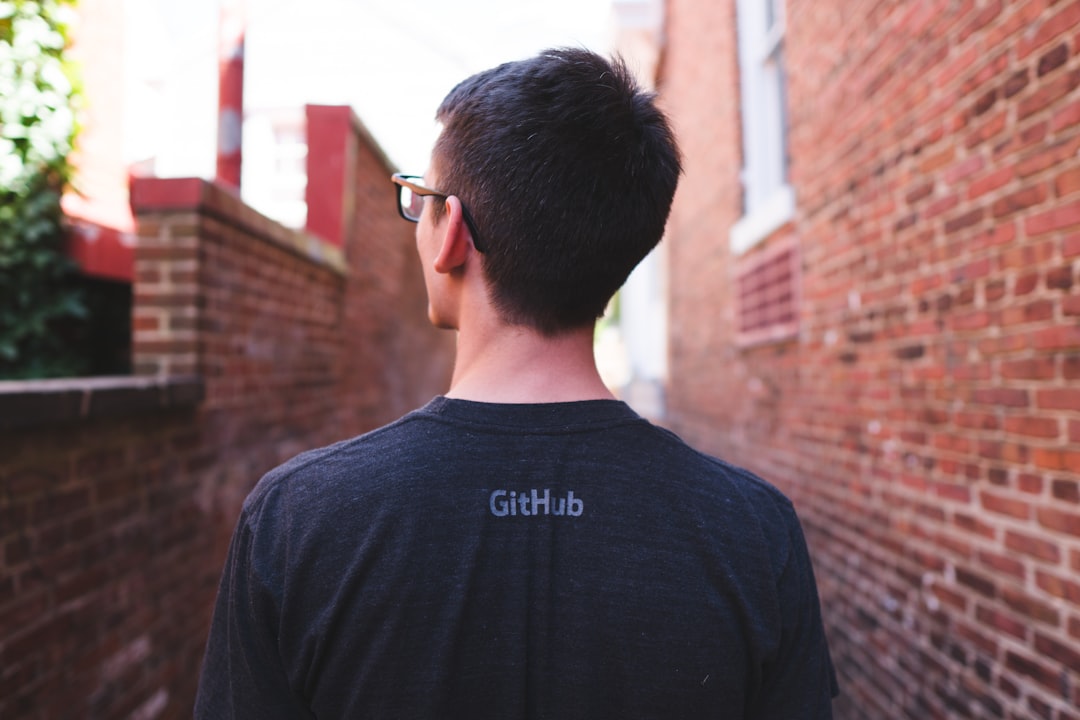
140. Can we apply DevOps principles to Project Management?
 It is always worth remembering that good ideas are contagious. Other minds have wrestled with problems similar to yours before and effective solutions tend to bubble up and can be re-applied to new initiatives in ways that can often appear obvious in hindsight.
It is always worth remembering that good ideas are contagious. Other minds have wrestled with problems similar to yours before and effective solutions tend to bubble up and can be re-applied to new initiatives in ways that can often appear obvious in hindsight.
141. How to Pass the Certified Kubernetes Administrator Exam in 7 Days
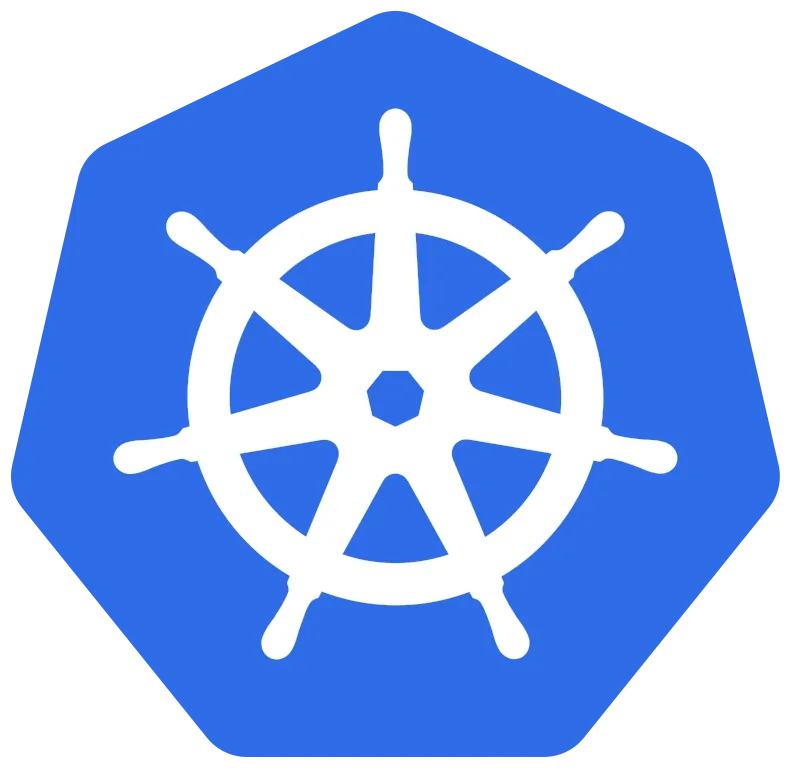 A couple of weeks ago I passed the Certified Kubernetes Administrator (CKA) exam with 7 days of prep. Here’s how I did it.
A couple of weeks ago I passed the Certified Kubernetes Administrator (CKA) exam with 7 days of prep. Here’s how I did it.
142. The Role of Continuous Monitoring in DevOps Pipeline
 Continuous monitoring gives organizations near-instantaneous feedback and insights into performance, environments, and interactions across the DevOps pipeline.
Continuous monitoring gives organizations near-instantaneous feedback and insights into performance, environments, and interactions across the DevOps pipeline.
143. Creating Tables and Querying data with AWS DynamoDB
 In this article, we will look at the NoSQL database service offered by AWS called DynamoDB and how to perform basic database operations with it
In this article, we will look at the NoSQL database service offered by AWS called DynamoDB and how to perform basic database operations with it
144. How To Create a Foolproof Shell Script
 I am a lazy DevOps Engineer. So whenever I came across the same task more than 2 times I automate that. Although now we have many automation tools, still the first thing that hit into our mind for automation is bash or shell script.
I am a lazy DevOps Engineer. So whenever I came across the same task more than 2 times I automate that. Although now we have many automation tools, still the first thing that hit into our mind for automation is bash or shell script.
145. Taking Your First Steps Towards Guix Home
 A step by step guide on installing and configuring software for use with Guix Home.
A step by step guide on installing and configuring software for use with Guix Home.
[146. How Did Kubernetes Win the
Container Orchestration War?](https://hackernoon.com/how-did-kubernetes-win-the-container-orchestration-war-lp1l3x01)
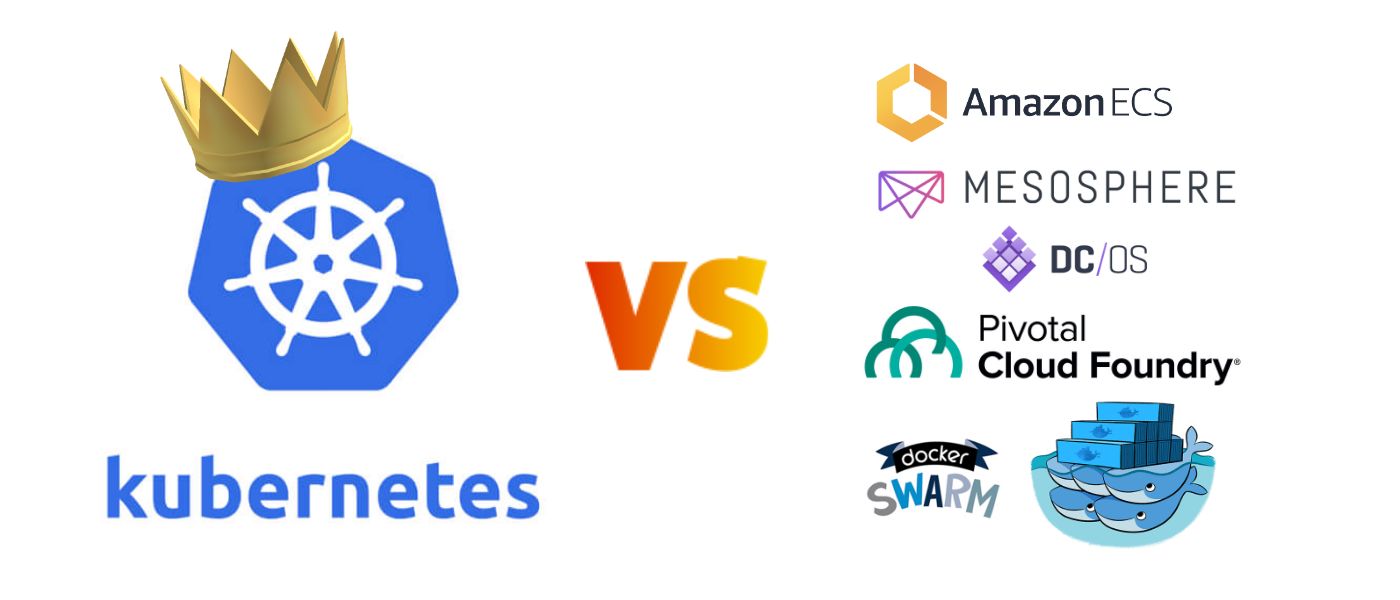 Kubernetes is now almost synonymous with container orchestration. A CNCF survey found that it is used in production by 78% of respondents. But it wasn't always like this. There used to be several big players in the field and there was talk in the industry of 'container orchestration wars.'
Kubernetes is now almost synonymous with container orchestration. A CNCF survey found that it is used in production by 78% of respondents. But it wasn't always like this. There used to be several big players in the field and there was talk in the industry of 'container orchestration wars.'
147. Must-have Soft Skills for a DevOps Engineer
 Essential skills for DevOps Engineer to boost your career with no stress
Essential skills for DevOps Engineer to boost your career with no stress
148. A Cool New Career in Data Science: Crowd Solutions Architect (CSA)
 With the tech industry expanding at an ever accelerated pace, one of the best examples of one such position is a Crowd Solutions Architect (CSA).
With the tech industry expanding at an ever accelerated pace, one of the best examples of one such position is a Crowd Solutions Architect (CSA).
[149. Cloud & DevOps Market in China:
A Brief Overview](https://hackernoon.com/cloud-and-devops-market-in-china-a-brief-overview-wcu30p8)
 China is a massive internet and mobile-based internet market. China's cloud needs are growing at high speed. Still, the government’s long-standing protectionist policies, foreign cloud service providers face significant challenges competing with Chinese tech giants such as Alibaba Cloud and others. China acts differently when it comes to cloud and DevOps practices. While the whole world embraces AWS, Microsoft, Google for their cloud-related needs, that is not the case when it comes to China, Alibaba seems a clear winner of the most market share followed by Tencent Cloud, Baidu Cloud, and others. Today we will see a brief about China’s cloud and DevOps market.
China is a massive internet and mobile-based internet market. China's cloud needs are growing at high speed. Still, the government’s long-standing protectionist policies, foreign cloud service providers face significant challenges competing with Chinese tech giants such as Alibaba Cloud and others. China acts differently when it comes to cloud and DevOps practices. While the whole world embraces AWS, Microsoft, Google for their cloud-related needs, that is not the case when it comes to China, Alibaba seems a clear winner of the most market share followed by Tencent Cloud, Baidu Cloud, and others. Today we will see a brief about China’s cloud and DevOps market.
150. Why DevOps Engineers are so Obsessed with Kubernetes
 When we look at Kubernetes adoption, we can see that it has grown exponentially and this is evident from Airbnb’s Kubernetes adoption
When we look at Kubernetes adoption, we can see that it has grown exponentially and this is evident from Airbnb’s Kubernetes adoption
151. Understanding Event Driven Architecture
 Event-driven architecture is a software architecture paradigm promoting the production, detection, consumption of, and reaction to events.
Event-driven architecture is a software architecture paradigm promoting the production, detection, consumption of, and reaction to events.
152. How To Deploy Code Faster Using Kubernetes
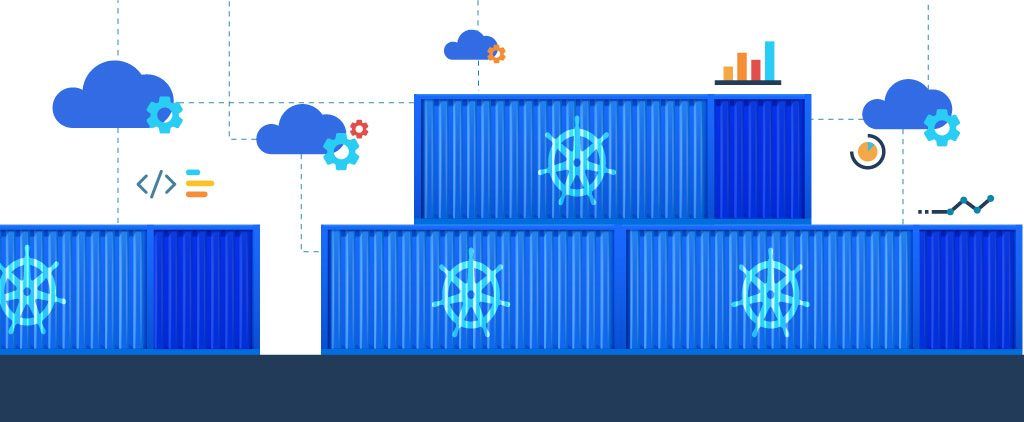 First, let us address the underlying question:
First, let us address the underlying question:
153. How to Solve the Problem of Cold Starts in 'Serverless' Systems
 Learn about serverless cold starts. What they are, what influences serverless startup latency, and how to mitigate its impact.
Learn about serverless cold starts. What they are, what influences serverless startup latency, and how to mitigate its impact.
154. Monitor Nginx Metrics with GrafanaDR: A Step-by-Step Guide
 Monitor Key Nginx Metrics with Grafana
Monitor Key Nginx Metrics with Grafana
155. Job Cycle and on Demand Tools of Devops Programming Engineer
 What are the roles and responsibilities of DevOps engineer.
What are the roles and responsibilities of DevOps engineer.
156. Top 25 Nginx Tips and Tricks From Practical Experience
 I will try to talk about how Nginx works and some tips and tricks from practical experience.
I will try to talk about how Nginx works and some tips and tricks from practical experience.
157. 9 Useful Interactive CLI Tools for Linux
 9 text-based interactive CLI tools for Linux that you must know.
9 text-based interactive CLI tools for Linux that you must know.
158. dksnap Introduction: Docker Snapshots for Development and Test Data
 TL;DR
TL;DR
159. How to install Devtron Over MiniKube Cluster
 The blog includes steps to install & setup minikube and devtron - an opensource software delivery workflow for kubernetes in minikube cluster.
The blog includes steps to install & setup minikube and devtron - an opensource software delivery workflow for kubernetes in minikube cluster.
160. Top 7 Kubernetes Security Practices Everyone Should Follow

161. 10 DevOps Conferences You Should Be Attending in 2020
 DevOps being the center stage of the software development life cycle today, has gained enough momentum and has a massive community around the world.
DevOps being the center stage of the software development life cycle today, has gained enough momentum and has a massive community around the world.
162. Why You Should Automate Your Code Review

163. Using Kubernetes and Containers for Infinite Scaling
 A landscape view of how to rightsize Kubernetes workloads, from single containers in a pod to hyperscaled serverless deployments, examining tools and techniques
A landscape view of how to rightsize Kubernetes workloads, from single containers in a pod to hyperscaled serverless deployments, examining tools and techniques
164. Say Goodbye to Kubernetes and Hello to Nomad!
 Why we chose Nomad as an alternative to Kubernetes for container orchestration
Why we chose Nomad as an alternative to Kubernetes for container orchestration
165. Running Linux Applications as Unikernels with K8S
 If you've read some of my prior articles you might've thought I'd never write this one huh? :) Well here goes.
If you've read some of my prior articles you might've thought I'd never write this one huh? :) Well here goes.
166. 4 Tips for AWS Lambda Cost & Speed Optimization
 In this article, we're covering 4 tips for AWS Lambda optimization for production. Covering error handling, memory provisioning, performance and more.
In this article, we're covering 4 tips for AWS Lambda optimization for production. Covering error handling, memory provisioning, performance and more.
167. Moving from CircleCI to Buildkite: Everything You Need to Know
 Buildkite is gaining momentum as an excellent CI tool, and I recently was involved in such a migration from CircleCI and wanted to share my experience.
Buildkite is gaining momentum as an excellent CI tool, and I recently was involved in such a migration from CircleCI and wanted to share my experience.
168. Why Smart Contracts Aren’t Smart Enough for Mainstream Adoption
 For many people, smart contracts are the most revolutionary innovation to come from blockchain technology.
For many people, smart contracts are the most revolutionary innovation to come from blockchain technology.
169. How to Handle Kubernetes Secrets with ArgoCD and Sops
 In this article, we will look into common ways to secure secrets in a Kubernetes application and how to manage them in a GitOps workflow based on ArgoCD with the help of Sops.
In this article, we will look into common ways to secure secrets in a Kubernetes application and how to manage them in a GitOps workflow based on ArgoCD with the help of Sops.
170. Single-Tenant Cloud vs Multi-Tenant: Understanding the difference between SaaS Architecture
 We sometimes hear the word "tenancy" when it comes to cloud software applications, but if you had googled the tenancy concept, it would mean the ownership of land or area by another person for a given time. The question, then, is how does SaaS apply to a tenancy?
We sometimes hear the word "tenancy" when it comes to cloud software applications, but if you had googled the tenancy concept, it would mean the ownership of land or area by another person for a given time. The question, then, is how does SaaS apply to a tenancy?
171. The State of Containers in 2020
 Containerization has come a long way and containers have completely revolutionized the way companies build, test, package and deliver software today. Containers are good for packaging any software. Big or small. Microservices are great candidates to be packaged and delivered with container images. With Microservices architecture, the large monolith is decoupled into several mini services that work independently.
Containerization has come a long way and containers have completely revolutionized the way companies build, test, package and deliver software today. Containers are good for packaging any software. Big or small. Microservices are great candidates to be packaged and delivered with container images. With Microservices architecture, the large monolith is decoupled into several mini services that work independently.
172. DevOps and Technical Debt: A Guide for Businesses
 Let’s see how organizations should entwine some essential practices into various phases of the DevOps lifecycle to address the technical debt challenges.
Let’s see how organizations should entwine some essential practices into various phases of the DevOps lifecycle to address the technical debt challenges.
173. I Hacked My Coffee Shop and Accessed My Data: Hacking Your Application May Be Easier Than You Think
 I noticed a suspicious behavior on the weekly email from my coffee shop's subscription; it was offering I edit my preferences directly through a dedicated link.
I noticed a suspicious behavior on the weekly email from my coffee shop's subscription; it was offering I edit my preferences directly through a dedicated link.
174. Turns out those years mastering Jenkins weren't in waste
 Over 200 ex-Jenkins engineers shared their experience of migration to cloud CI. We look into their happiness, productivity and more.
Over 200 ex-Jenkins engineers shared their experience of migration to cloud CI. We look into their happiness, productivity and more.
175. Serverless Development: Addressing AWS Lambda-related Python Errors
 In this article, you'll get an overview of the need-to-knows for error handling Python in AWS Lambda.
In this article, you'll get an overview of the need-to-knows for error handling Python in AWS Lambda.
176. GKE vs. EKS: Comparing Google Kubernetes Engine and Amazon Elastic Kubernetes Service
 There are key differences between GKE and EKS. While EKS is a market leader, read more to find out why GKE can give EKS a run for its money.
There are key differences between GKE and EKS. While EKS is a market leader, read more to find out why GKE can give EKS a run for its money.
177. Triggering AWS Lambda Events with DynamoDB Integration
 Learn everything about AWS Lambda triggers in this guide, including Amazon DynamoDB integration and 3 common ways to trigger AWS Lambda.
Learn everything about AWS Lambda triggers in this guide, including Amazon DynamoDB integration and 3 common ways to trigger AWS Lambda.
178. What We Learned By Dockerizing Our Applications
 A universal truth we’ve experienced as both an IT software vendor and as an application delivery team is that application owners are constantly trying to deliver better software faster.
A universal truth we’ve experienced as both an IT software vendor and as an application delivery team is that application owners are constantly trying to deliver better software faster.
179. How To Setup Docker Using Ansible on Ubuntu 18.04 [Part 2]
 In the last guide, you learned how to set up, install, and configure Ansible on Ubuntu 18.04. Now, you will use the Ansible to install and set Docker on a remote machine. To begin this guide, you need the following:
In the last guide, you learned how to set up, install, and configure Ansible on Ubuntu 18.04. Now, you will use the Ansible to install and set Docker on a remote machine. To begin this guide, you need the following:
180. An Introduction to Infrastructures for WEB projects in AWS
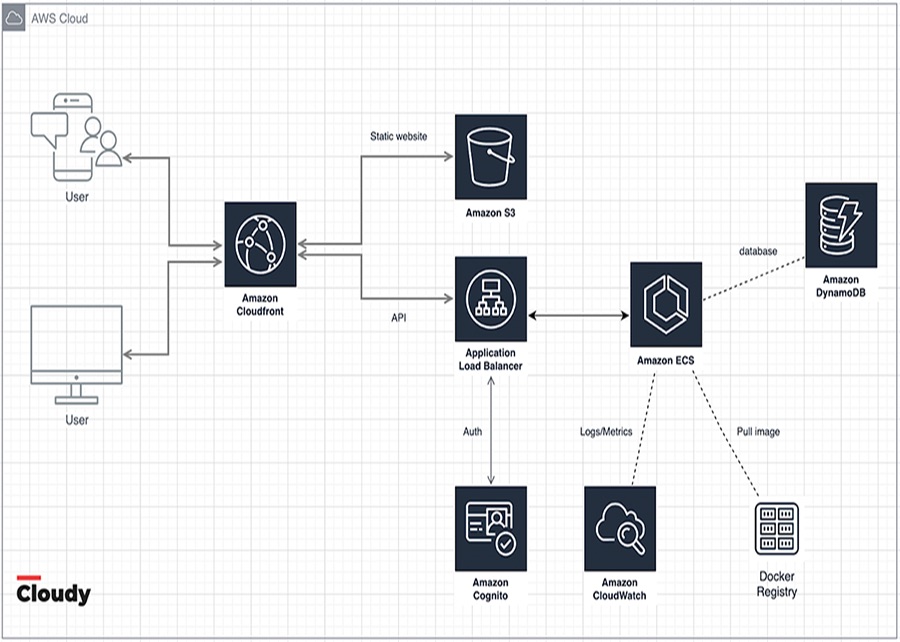 Let's review a particular project in detail and the cost of infrastructure maintenance. And so, we have an internal WEB application that consists of a static website on React, a backend on Go, and a database DynamoDB. All code is stored on Github and for CI/CD we use Github Actions. The infrastructure code is defined in Terraform.
Let's review a particular project in detail and the cost of infrastructure maintenance. And so, we have an internal WEB application that consists of a static website on React, a backend on Go, and a database DynamoDB. All code is stored on Github and for CI/CD we use Github Actions. The infrastructure code is defined in Terraform.
181. DevOps 101: CI/CD [Explained]

182. Is React leading the Infrastructure As Code Movement?
 What is "Infrastructure as Code"? If someone checks a bunch of YAML files into a Git repository, do they suddenly become code? That seems more like "Infrastructure as Files" to me. I suppose that's better than infrastructure as a gaggle of shell scripts and some commands run by hand in the middle of the night in a coffee-fueled haze, but it is a far cry from code. How about a system to define infrastructure that really is like code?
What is "Infrastructure as Code"? If someone checks a bunch of YAML files into a Git repository, do they suddenly become code? That seems more like "Infrastructure as Files" to me. I suppose that's better than infrastructure as a gaggle of shell scripts and some commands run by hand in the middle of the night in a coffee-fueled haze, but it is a far cry from code. How about a system to define infrastructure that really is like code?
183. How To Create Deployment Objects in Kubernetes and Deploy Using kubectl
 Learn what Deployments are in Kubernetes and how to use them. Deployments are a high-level abstraction that controls how we deploy and maintain a set of Pods.
Learn what Deployments are in Kubernetes and how to use them. Deployments are a high-level abstraction that controls how we deploy and maintain a set of Pods.
184. DevOps as-a-Service OR Do you Really Need a DevOps Team
 DevOps as a service is a rising philosophy in purpose development. DevOps as a method moves customary teamwork to development and process team to the make unclear, where lots of the method can be robotic using stackable virtual expansion tools.
DevOps as a service is a rising philosophy in purpose development. DevOps as a method moves customary teamwork to development and process team to the make unclear, where lots of the method can be robotic using stackable virtual expansion tools.
185. How to Test Terraform the Right Way
 In this blog post, you'll learn about why you should be testing IaC and the best platforms to get started with.
In this blog post, you'll learn about why you should be testing IaC and the best platforms to get started with.
186. Logging Vs. Monitoring: An Introduction [Part 1]
 Logging and Monitoring… this I tell you, brother. You can't have one without the other.
Logging and Monitoring… this I tell you, brother. You can't have one without the other.
187. 10 Things in Engineering We Don't Spend Enough Time On
 In this article, we’ll look at ten underrated activities in engineering for which allocating more time can be beneficial.
In this article, we’ll look at ten underrated activities in engineering for which allocating more time can be beneficial.
188. Creating GitOps Workflow with ArgoCD, Kustomize and GitHub Actions
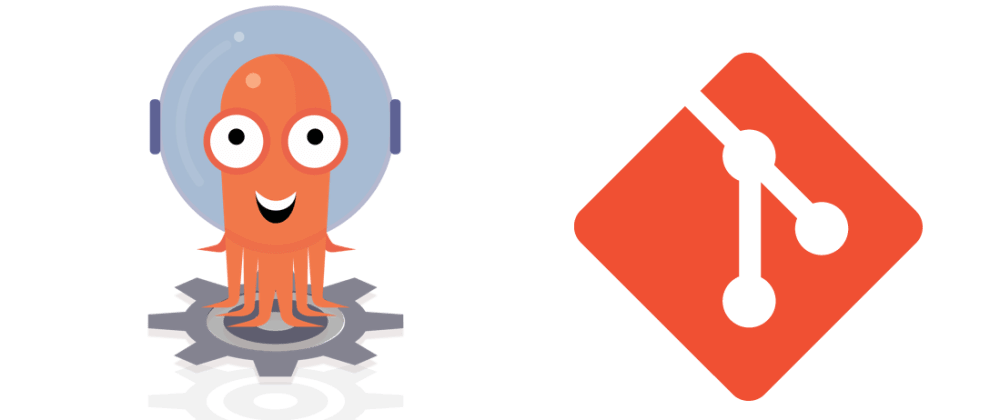 The term GitOps was first coined by Weaveworks in a popular article from August 2017. The problem it intends to solve was how to efficiently and safely deploy a Kubernetes application.
The term GitOps was first coined by Weaveworks in a popular article from August 2017. The problem it intends to solve was how to efficiently and safely deploy a Kubernetes application.
189. How We Scaled To Microservices Architecture With A Data Flow-driven Approach
 Microservices architecture: It was proposed to develop a data flow-driven mechanism for microservices — oriented decomposition. Data work separately with the site
Microservices architecture: It was proposed to develop a data flow-driven mechanism for microservices — oriented decomposition. Data work separately with the site
190. Automating Security in DevOps: Top 15 Tools
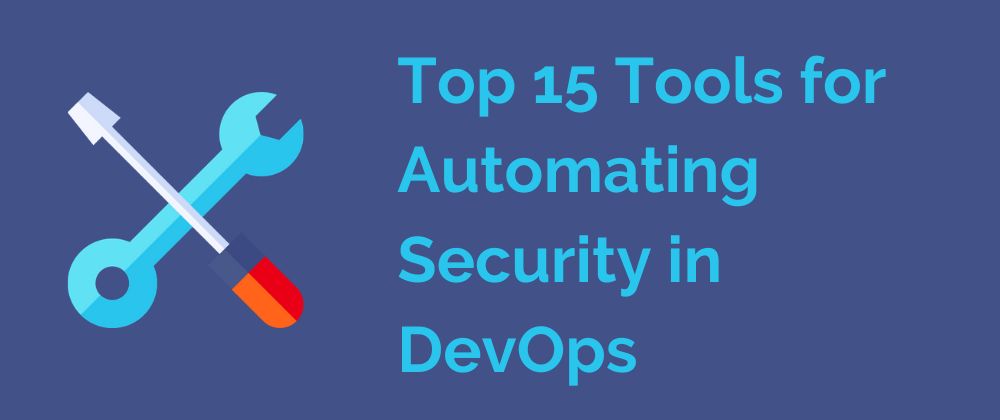 Cybersecurity is a big concern for many companies. With data breaches happening more and more as attacks increase in sophistication, teams are looking at all of the options they have to prevent them.
Cybersecurity is a big concern for many companies. With data breaches happening more and more as attacks increase in sophistication, teams are looking at all of the options they have to prevent them.
191. Optimize Your Webserver by Installing a Single NGINX Module
 While Google does publish scripts to help with the installation, it requires a non-trivial depth of knowledge to do right.
While Google does publish scripts to help with the installation, it requires a non-trivial depth of knowledge to do right.
192. How Containers Affect DevOps
 Today, we no longer talk about development and operations in isolation. DevOps actively combines these two, which is an essential factor in the modern software lifecycle. Along the way, Docker containers have also become popular due to the benefits they offer for DevOps. Containers affect DevOps mainly in two ways.
Today, we no longer talk about development and operations in isolation. DevOps actively combines these two, which is an essential factor in the modern software lifecycle. Along the way, Docker containers have also become popular due to the benefits they offer for DevOps. Containers affect DevOps mainly in two ways.
193. End to End API Testing with Docker
 Testing is a pain in general. Some don't see the point. Some see it but think of it as an extra step slowing them down. Sometimes tests are there but very long to run or unstable. In this article you'll see how you can engineer tests for yourself with Docker.
Testing is a pain in general. Some don't see the point. Some see it but think of it as an extra step slowing them down. Sometimes tests are there but very long to run or unstable. In this article you'll see how you can engineer tests for yourself with Docker.
194. Making Command-Line Interface (CLI) for Fun and Profit

195. 5 DevOps Security Challenges in 2020
 In the beginning, a single developer worked on 100% of the code base that lived on their machine. Inevitably, at some point, they wanted to share their code, or back it up, or even create a simulated testing environment. On that day, they began the process of moving from Dev to DevOps. Since then, the world has changed drastically.
In the beginning, a single developer worked on 100% of the code base that lived on their machine. Inevitably, at some point, they wanted to share their code, or back it up, or even create a simulated testing environment. On that day, they began the process of moving from Dev to DevOps. Since then, the world has changed drastically.
196. How To NOT pass the Certified Kubernetes Administrator Exam
 The best of bad advices about CKA
The best of bad advices about CKA
197. Future of Manual Testing: Is Manual Testing dying?
 The recent decade has witnessed an enormous shift in the Software Engineering and Software testing practices from manual to automated in most of the areas. With the advent of AI, machine learning and the rise of different automation tools, some people think, manual testing will get completely wiped-off by automation. Let’s unveil some myths surrounding the future of manual testing and debunk them with facts.
The recent decade has witnessed an enormous shift in the Software Engineering and Software testing practices from manual to automated in most of the areas. With the advent of AI, machine learning and the rise of different automation tools, some people think, manual testing will get completely wiped-off by automation. Let’s unveil some myths surrounding the future of manual testing and debunk them with facts.
198. How to Deploy Vlocity Components with Vlocity Build Tool
 A guide on how to deploy Salesforce Vlocity components using Vlocity Build tool and integrate it with your CI/CD pipeline.
A guide on how to deploy Salesforce Vlocity components using Vlocity Build tool and integrate it with your CI/CD pipeline.
199. How to Select Software Engineering Metrics and Set KPIs that Matter
 Software Engineering KPIs (Key Performance Indicators) are measurable values that indicate the progress of engineering teams’ performance towards business objectives. Therefore, they need to be consistent, broad enough to consider everyone’s effort, and, most importantly, measurable.
Software Engineering KPIs (Key Performance Indicators) are measurable values that indicate the progress of engineering teams’ performance towards business objectives. Therefore, they need to be consistent, broad enough to consider everyone’s effort, and, most importantly, measurable.
200. How to Apply Security at the Source Using GitOps
 Discover how GitOps can improve your current methodology. Also, how to add an extra security layer to it and the tools available.
Discover how GitOps can improve your current methodology. Also, how to add an extra security layer to it and the tools available.
201. Building an AWS EKS Fargate Cluster with Terraform
 How to build an AWS EKS Fargate cluster using terraform.
How to build an AWS EKS Fargate cluster using terraform.
202. A Look at the Trends in Developer Jobs: A Meta Analysis of Stack Overflow Surveys
 I'm really interested in the trends we see in the software engineering job market.
I'm really interested in the trends we see in the software engineering job market.
203. What's the Difference Between MLOps and AIOps
 An overview of the MLOps and AIOps worlds to understand what they mean, how they relate to DevOps, and how they compare in terms of benefits.
An overview of the MLOps and AIOps worlds to understand what they mean, how they relate to DevOps, and how they compare in terms of benefits.
204. DevOps Shouldn't Be Hard!

205. DevOps and Telco Sofwarisation - Part 1
 In this series of articles, we will explore the convergence happening between the IT and Telecom industries, which is referred to as “Telco Softwarisation”.
In this series of articles, we will explore the convergence happening between the IT and Telecom industries, which is referred to as “Telco Softwarisation”.
206. How to Build a ChatOps-Bot with Slack and Kubernetes

207. How to Become a Kubernetes Application Developer
 When it comes to certification, there are two main Kubernetes certifications available in the market.
When it comes to certification, there are two main Kubernetes certifications available in the market.
208. The Beginner’s Guide to Serverless Computing
 Serverless is a modern computing model that employs Function-as-a-service architecture and manages the backend and scaling automatically with low cost and high concurrency.
Serverless is a modern computing model that employs Function-as-a-service architecture and manages the backend and scaling automatically with low cost and high concurrency.
209. Kubernetes Explained Simply: Waiting For Kubernetes [Part 5]
 When you deploy stuff for a living, you find yourself waiting around, a lot. Wait for Terraform to spin up the AWS VPCs. Wait for the Kubernetes cluster node VMs to boot. Wait for the Kubernetes cluster to coalesce. Wait for the CNI pods, DNS pods, and kube-proxy bits to be happy. Wait, wait, wait.
When you deploy stuff for a living, you find yourself waiting around, a lot. Wait for Terraform to spin up the AWS VPCs. Wait for the Kubernetes cluster node VMs to boot. Wait for the Kubernetes cluster to coalesce. Wait for the CNI pods, DNS pods, and kube-proxy bits to be happy. Wait, wait, wait.
210. Introduction to API Gateway
 What's a gateway? It is an entry point. Things go in. People, traffic, requests. If you've spent any time with microservices, you may have come across the term "API gateway".
What's a gateway? It is an entry point. Things go in. People, traffic, requests. If you've spent any time with microservices, you may have come across the term "API gateway".
211. How the Domain Name System Works

212. Apache Web Server Hardening: How To Protect Your Server From Attacks
 he web server has a crucial role in web-based applications. Since most of us leave it to the default configuration, it can leak sensitive data regarding the web server.
he web server has a crucial role in web-based applications. Since most of us leave it to the default configuration, it can leak sensitive data regarding the web server.
213. The Rise of MLOps: What We Can All Learn from DevOps
 The MLOps Conference took place earlier this week at Hudson Mercantile in New York City. Experts from the New York Times, Twitter, Netflix and Iguazio, the host company, spoke about best practices and machine learning implementation throughout a variety of different organizations.
The MLOps Conference took place earlier this week at Hudson Mercantile in New York City. Experts from the New York Times, Twitter, Netflix and Iguazio, the host company, spoke about best practices and machine learning implementation throughout a variety of different organizations.
214. 8 Cloud Computing Trends to Watch in 2021
 Cloud computing has grown exponentially in the past decade and is not about to stop. As predicted by Forrester’s research, the global public cloud infrastructure will grow 35% in 2021, many thanks to the pandemic. Due to the lingering effects of covid-19 in 2021, the cloud will be the key focus for organizations looking for increased scalability, business continuity, and cost-efficiency.
Cloud computing has grown exponentially in the past decade and is not about to stop. As predicted by Forrester’s research, the global public cloud infrastructure will grow 35% in 2021, many thanks to the pandemic. Due to the lingering effects of covid-19 in 2021, the cloud will be the key focus for organizations looking for increased scalability, business continuity, and cost-efficiency.
215. Kubernetes and Helm: A Deadly Combo to Help You Deploy with Ease
 If Kubernetes is the pilot that steers the ship, then Helm Charts are the navigational maps that guide the journey correctly. We have seen this happening over the years in the world of software development, one tool comes with an idea, serves the purpose, and becomes obsolete in some years, and then one more tool gets introduced that replaces the old approach, and this journey continues. Similarly, today is the era where Kubernetes is looked upon as the king of container orchestration. Backed by Google, Kubernetes has grown leaps and bounds by increasing its reach and community to every part of the world.
If Kubernetes is the pilot that steers the ship, then Helm Charts are the navigational maps that guide the journey correctly. We have seen this happening over the years in the world of software development, one tool comes with an idea, serves the purpose, and becomes obsolete in some years, and then one more tool gets introduced that replaces the old approach, and this journey continues. Similarly, today is the era where Kubernetes is looked upon as the king of container orchestration. Backed by Google, Kubernetes has grown leaps and bounds by increasing its reach and community to every part of the world.
216. Site Reliability Engineering with Amazon Web Services
 The top AWS tools for SRE Adoption: CloudWatch, CloudTrail, Elastic Load Balancers, Health Checks, GuardDuty, and infrastructure security.
The top AWS tools for SRE Adoption: CloudWatch, CloudTrail, Elastic Load Balancers, Health Checks, GuardDuty, and infrastructure security.
217. The Growth of Internet of Things: Effective Technology Opportunities
 Objectives of IoT: understand the strategy, regulate processes, correct device management protocols, collect & analyze information, protecting it, and store.
Objectives of IoT: understand the strategy, regulate processes, correct device management protocols, collect & analyze information, protecting it, and store.
218. How to Prepare Your Site for Heavy Traffic

- Monitor your infrastructure. First of all, you should know what's happening with your website. If you're experienced with Prometheus/Grafana, you could use them, but if you’re not, it's not a problem; you can use any monitoring service, such as DataDog or any other SaaS service, and set it up really quickly. If it's still hard, use pingdom or site24x7, at least to check that your website is still available.
219. So You Took Down Production - Now What?
 You're pushing to main, something you've done 100s of times before, and by the time you go to refresh your production environment, you notice something's wrong
You're pushing to main, something you've done 100s of times before, and by the time you go to refresh your production environment, you notice something's wrong
220. How to Host a React Web App on AWS S3
 In this tutorial, we will go through the steps required to configure an S3 bucket to host a React.js web application
In this tutorial, we will go through the steps required to configure an S3 bucket to host a React.js web application
221. Workflow Automation: Jenkins Pipeline with Sonarqube and Gitlab

222. How to Implement DevOps for E-commerce Companies
 In the e-commerce industry, the key to success is instant delivery and constant updates. DevOps is a methodology for software development processes.
In the e-commerce industry, the key to success is instant delivery and constant updates. DevOps is a methodology for software development processes.
223. What I Learned About DevOps in 2019
 It was a big year for DevOps adoption. Most of the organizations than ever before are ditching their leadership philosophies, old methodologies, and legacy processes in favor of DevOps to realize speed and agility in today’s constantly evolving technology landscape.
It was a big year for DevOps adoption. Most of the organizations than ever before are ditching their leadership philosophies, old methodologies, and legacy processes in favor of DevOps to realize speed and agility in today’s constantly evolving technology landscape.
224. 3 Software Ownership Models and Joint Care for Dev Teams
 In traditional software operations, software would be "thrown over the fence" to operations teams. Technical operations teams would be aided in operating a service using Standard Operating Procedures (SOPs).
In traditional software operations, software would be "thrown over the fence" to operations teams. Technical operations teams would be aided in operating a service using Standard Operating Procedures (SOPs).
225. What "Shifting Left" in Software Really Means for Blameless DevOps
 A truly "blameless culture" in software must to evolve from incident reporting, to telemetry aimed at Proactive Observability in DevOps
A truly "blameless culture" in software must to evolve from incident reporting, to telemetry aimed at Proactive Observability in DevOps
226. Why Using Static Analysis Is Hard

227. From “Feature branches” to “Feature environments” with Terraform

228. Intro to Jupiter Notebooks
 “Notebooks” are web applications that run on the browser which basically give you, the user, an interface to a virtual machine that runs an out-of-the-box environment. They are based on the Jupyter Notebook project — an open-source project that brings machine learning development to your browser! No more virtual environment set-up hassle from now on. Which is great news since a lot of developers want to deal only with data science projects and not get derailed from that by needing to configure and set up their computers.
“Notebooks” are web applications that run on the browser which basically give you, the user, an interface to a virtual machine that runs an out-of-the-box environment. They are based on the Jupyter Notebook project — an open-source project that brings machine learning development to your browser! No more virtual environment set-up hassle from now on. Which is great news since a lot of developers want to deal only with data science projects and not get derailed from that by needing to configure and set up their computers.
229. Scanning 2.6 Million Domains for Exposed .Env Files
 A software developer scanned 2.6 million domains for exposed.env files.
A software developer scanned 2.6 million domains for exposed.env files.
230. Exploring AWS CLI v2 with AWS Single Sign-on
 Going back to the 10 of December 2017, AWS introduced AWS Single Sign-On, a service that makes it easy for you to centrally manage SSO access to multiple AWS accounts and business applications.
Going back to the 10 of December 2017, AWS introduced AWS Single Sign-On, a service that makes it easy for you to centrally manage SSO access to multiple AWS accounts and business applications.
231. Why you should take care of Infrastructure Drift
 When talking about infrastructure drift, you often get knowing glances and heated answers. Recording gaps in your infra between what you expected to be and the reality of what is, is a well known and widespread issue bothering hundreds of DevOps teams around the globe.
When talking about infrastructure drift, you often get knowing glances and heated answers. Recording gaps in your infra between what you expected to be and the reality of what is, is a well known and widespread issue bothering hundreds of DevOps teams around the globe.
232. Getting started with MongoDB Enterprise Operator for Kubernetes
 Introduction
Introduction
233. How to Radically Simplify Operations by Plugging Your API Gateway into an OpenAPI Spec
 OpenAPI Spec — The blueprint for your API
OpenAPI Spec — The blueprint for your API
234. The Difference Between Data Backups and Snapshots (and when to use them)
 Learn the difference between server snapshots and server backups with the pros and cons of each, and some examples of when to use them.
Learn the difference between server snapshots and server backups with the pros and cons of each, and some examples of when to use them.
235. Step-By-Step Tutorial To Deploy A Node.js App To Kubernetes
 The Cloud Foundry project cf-for-k8s, along with a Cloud Native Buildpacks implementation called Paketo Buildpacks, can provide a path for JavaScript applicatio
The Cloud Foundry project cf-for-k8s, along with a Cloud Native Buildpacks implementation called Paketo Buildpacks, can provide a path for JavaScript applicatio
236. Smart E-bike Kits: A Tour Inside Our Servers
 The Idea
The Idea
237. On Building A Development Pipeline With Kubernetes
 A few years ago, digital transformation led to enterprises moving away from traditional monolithic architectures to microservices.
A few years ago, digital transformation led to enterprises moving away from traditional monolithic architectures to microservices.
238. Avoid these 4 Kubernetes Anti-Patterns
 An anti-pattern is a high-risk solution to a problem that’s usually ineffective. At first glance, these types of solutions appear appropriate and effective.
An anti-pattern is a high-risk solution to a problem that’s usually ineffective. At first glance, these types of solutions appear appropriate and effective.
239. Logic Vs. Emotion: What Really Drives Decision Making
 How emotions, ego and aspirations influence technological choices. How to answer these psychological need with an objective method.
How emotions, ego and aspirations influence technological choices. How to answer these psychological need with an objective method.
240. How To Cleanup Your Local Git Repository Using BFG

241. Essential Tips To Manage Your gRPC Services With Kong Like A Pro
 What follows is a step-by-step tutorial on how to set up Kong to proxy gRPC services, demonstrating two possible scenarios.
What follows is a step-by-step tutorial on how to set up Kong to proxy gRPC services, demonstrating two possible scenarios.
242. App Metrics 101: What You Should be Measuring
 Whether you’re serving your colleagues with an internal company app or you’re dreaming of topping the charts, some would say the hard work is only just about to start. No matter how much testing and research you’ve done, nothing compares to real world usage.
Whether you’re serving your colleagues with an internal company app or you’re dreaming of topping the charts, some would say the hard work is only just about to start. No matter how much testing and research you’ve done, nothing compares to real world usage.
243. The Difference Between CI and CD in DevOps
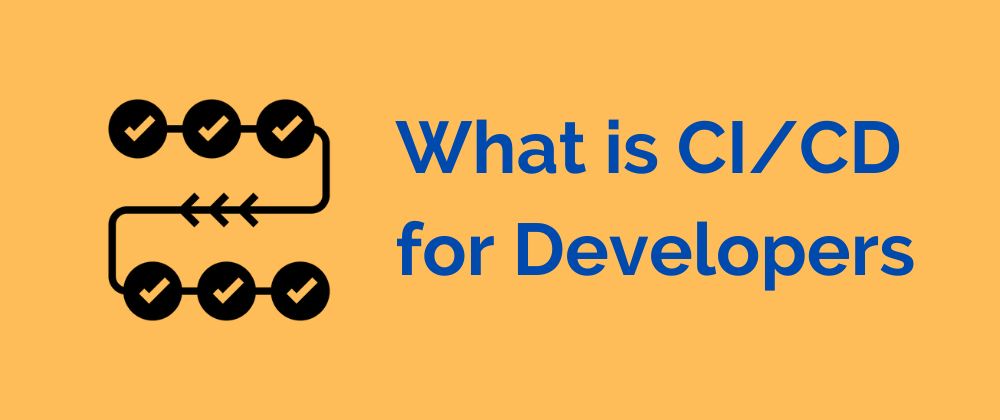 The software development life-cycle has a lot of moving parts. A huge problem many large companies have is maintaining a consistent deployment process. Written steps sometimes get skipped; manual deploys are error prone, and home-grown deploy scripts are usually only understood by the person that wrote them. Companies like Netflix, Etsy, and Amazon need to make sure that deployment cycles are smooth and errors are caught as early in the process as possible.
The software development life-cycle has a lot of moving parts. A huge problem many large companies have is maintaining a consistent deployment process. Written steps sometimes get skipped; manual deploys are error prone, and home-grown deploy scripts are usually only understood by the person that wrote them. Companies like Netflix, Etsy, and Amazon need to make sure that deployment cycles are smooth and errors are caught as early in the process as possible.
244. 5 Most Common Software Deployment Mistakes and How to Avoid Them
 There are a lot of factors that go into the software that drives the world today such as interface design, coding, testing, deployment.
There are a lot of factors that go into the software that drives the world today such as interface design, coding, testing, deployment.
245. 'Hello, World!' in Golang - How to Develop a Simple Web App in Go
 I'm going to show you how easy it is to develop a simple web application in Go, package it as a lightweight Docker image, and deploy it to Heroku.
I'm going to show you how easy it is to develop a simple web application in Go, package it as a lightweight Docker image, and deploy it to Heroku.
246. The Oracle Database Docker Image Can Supercharge Your DevOps Learning
 This is a tutorial on how to install, use, and patch the Oracle Database Docker Image. Docker is a PaaS that delivers software in packages called containers.
This is a tutorial on how to install, use, and patch the Oracle Database Docker Image. Docker is a PaaS that delivers software in packages called containers.
[247. Top DevOps Myths Debunked
[DevOops - Part 2]](https://hackernoon.com/top-devops-myths-debunked-devoops-part-2)
 This is the second part of our series related to popular DevOps misconceptions and falsehoods.
This is the second part of our series related to popular DevOps misconceptions and falsehoods.
248. We Created a Netflix Inspired Cover Generator as a NuxtJS Project for Our YT Channel
 We had a need to speed up our YouTube cover creation process. The cover must be interesting, containing the right information and in the right format.
We had a need to speed up our YouTube cover creation process. The cover must be interesting, containing the right information and in the right format.
249. Containers 101: Kube Explained Part 2
 In our previous post, Kube Explained: Part 1, I described how the introduction of the cloud resulted in CI/CD, Microservices, and a massive amount of pressure to standardize backend infrastructure tooling.
In our previous post, Kube Explained: Part 1, I described how the introduction of the cloud resulted in CI/CD, Microservices, and a massive amount of pressure to standardize backend infrastructure tooling.
250. How to Extend your DevOps Strategy For Success in the Cloud?
 DevOps and Cloud computing are joined at the hip, now that fact is well appreciated by the organizations that engaged in SaaS cloud and developed applications in the Cloud. During the COVID crisis period, most of the organizations have started using cloud computing services and implementing a cloud-first strategy to establish their remote operations. Similarly, the extended DevOps strategy will make the development process more agile with automated test cases.
DevOps and Cloud computing are joined at the hip, now that fact is well appreciated by the organizations that engaged in SaaS cloud and developed applications in the Cloud. During the COVID crisis period, most of the organizations have started using cloud computing services and implementing a cloud-first strategy to establish their remote operations. Similarly, the extended DevOps strategy will make the development process more agile with automated test cases.
251. How to Use BitBucket Pipelines and Xray Test Management to Test Automation of Jira Cloud Workflows
 In this post I show how you can use Bitbucket pipelines together with Jira Cloud. Furthermore I introduce Xray Test Management and present how to combine them.
In this post I show how you can use Bitbucket pipelines together with Jira Cloud. Furthermore I introduce Xray Test Management and present how to combine them.
252. How To Use OpenTelemetry And Jaeger To Implement Distributed Tracing And APM
 Recent open source contributions to Jaeger and OpenTelemetry pave the way for APM capabilities based on distributed tracing and CNCF stack
Recent open source contributions to Jaeger and OpenTelemetry pave the way for APM capabilities based on distributed tracing and CNCF stack
253. DevOps Fundamentals You Ever Wanted To Know
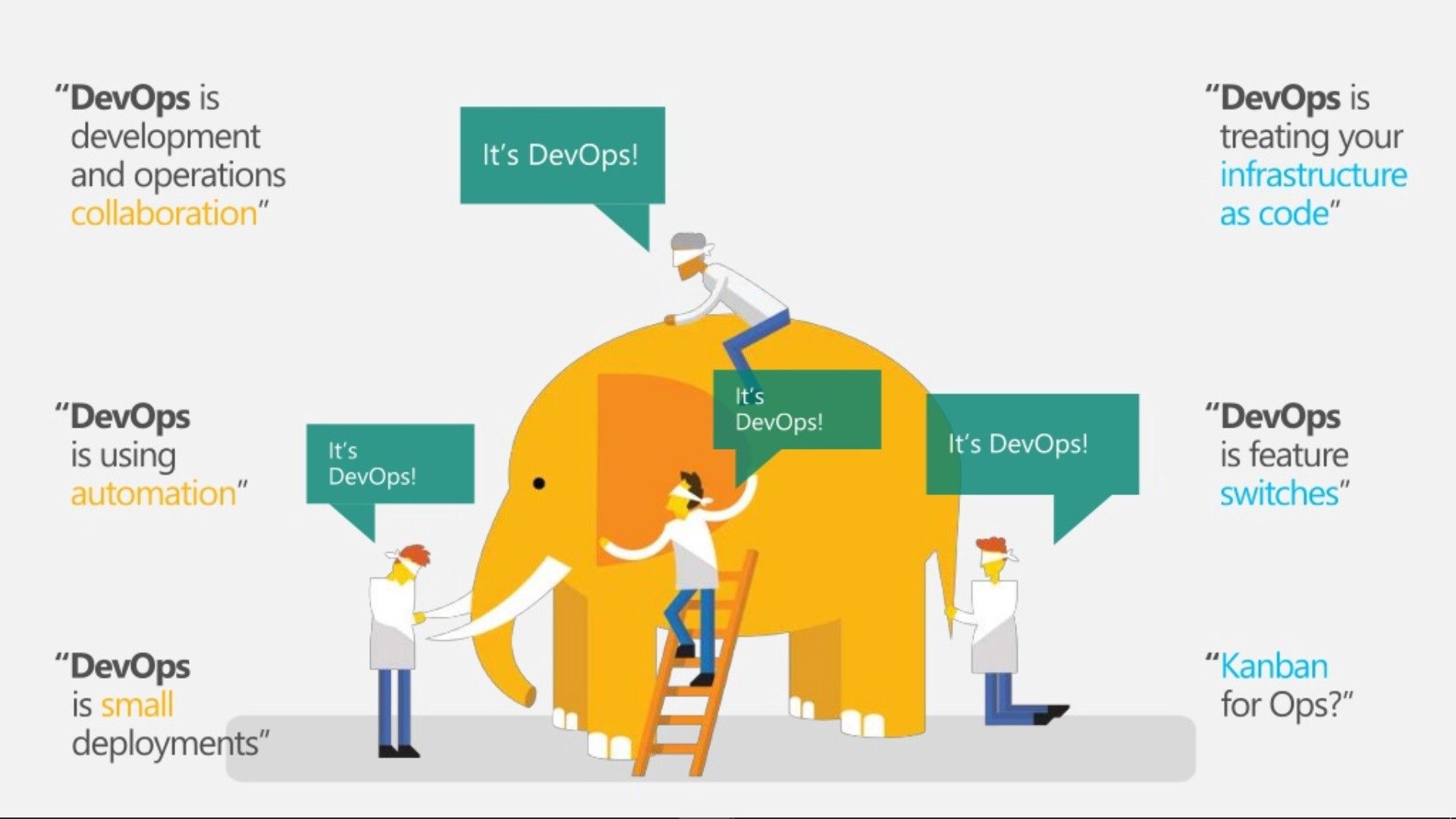 What Is DevOps & How Its Works?
What Is DevOps & How Its Works?
254. How to Create Virtual Environments with Python [Tutorial]
 a short hands-on introduction
a short hands-on introduction
255. DevSecOps: Shifting Left and Shifting Right
 Organization’s ability to cope with the complexity of delivering software at high velocity, with confidence and excellent quality, in a multi-speed IT landscape and hybrid environments has become a reality with the DevOps best practices like continuous integration, continuous delivery, and continuous deployment. But there have been shifting approaches that are confusing to Devops people, 'shift left' and 'shift right.' So, the question is, what exactly are we shifting here?
Organization’s ability to cope with the complexity of delivering software at high velocity, with confidence and excellent quality, in a multi-speed IT landscape and hybrid environments has become a reality with the DevOps best practices like continuous integration, continuous delivery, and continuous deployment. But there have been shifting approaches that are confusing to Devops people, 'shift left' and 'shift right.' So, the question is, what exactly are we shifting here?
256. The 5 Best Kubernetes Alternatives
 Kubernetes is not the only player in the market, there are different Kubernetes competitors and Kubernetes alternatives.
Kubernetes is not the only player in the market, there are different Kubernetes competitors and Kubernetes alternatives.
257. Things You Must Know About git-crypt To Successfully Protect Your Secret Data
 Many software projects use secrets - usually, keys to external APIs or credentials to access an external resource such as a database. Your application needs these keys at runtime, so you need to be able to provide them when you deploy your application, or as a step in preparing your deployment environment.
Many software projects use secrets - usually, keys to external APIs or credentials to access an external resource such as a database. Your application needs these keys at runtime, so you need to be able to provide them when you deploy your application, or as a step in preparing your deployment environment.
258. Real-time Notifications for Jenkins Jobs with CatLight
 Before deep into, I would like to say this will be useful if you are managing multiple Jenkins jobs which you think is a little bit complex 😊
Before deep into, I would like to say this will be useful if you are managing multiple Jenkins jobs which you think is a little bit complex 😊
259. DevSecOps Deep Dive: CI/CD Pipeline Security
 Best practices and Tools to master DevSecOps.
Best practices and Tools to master DevSecOps.
260. A Guide to Git with Trunk Based Development
 Learn the mindset and process behind Trunk Based Development, and how to use git effectively with this pattern.
Learn the mindset and process behind Trunk Based Development, and how to use git effectively with this pattern.
261. Hacking Unikernels Through Process Injection [A Step by Step Guide]
 A lot of people have this mistaken notion that unikernels have this 'unhackable' characteristic about them. This is untrue. They absolutely are hackable depending on what is deployed and how they are configured.
A lot of people have this mistaken notion that unikernels have this 'unhackable' characteristic about them. This is untrue. They absolutely are hackable depending on what is deployed and how they are configured.
262. Vagrant with Oracle Database: For When You Need More Than a Container Image!
 I’ve written about my love for Vagrant a few times already here, today I will show the steps to getting an Oracle Database with Vagrant.
I’ve written about my love for Vagrant a few times already here, today I will show the steps to getting an Oracle Database with Vagrant.
263. 10 Great Ways to Evaluate your Minimum Viable Product (MVP)
 Do you know the main purpose of building Minimum Viable Product or MVP? The answer is to validate the product that you will be launching in the market.
Do you know the main purpose of building Minimum Viable Product or MVP? The answer is to validate the product that you will be launching in the market.
264. The Next 11 Things You Should Do For CI/CD Pipeline Optimization
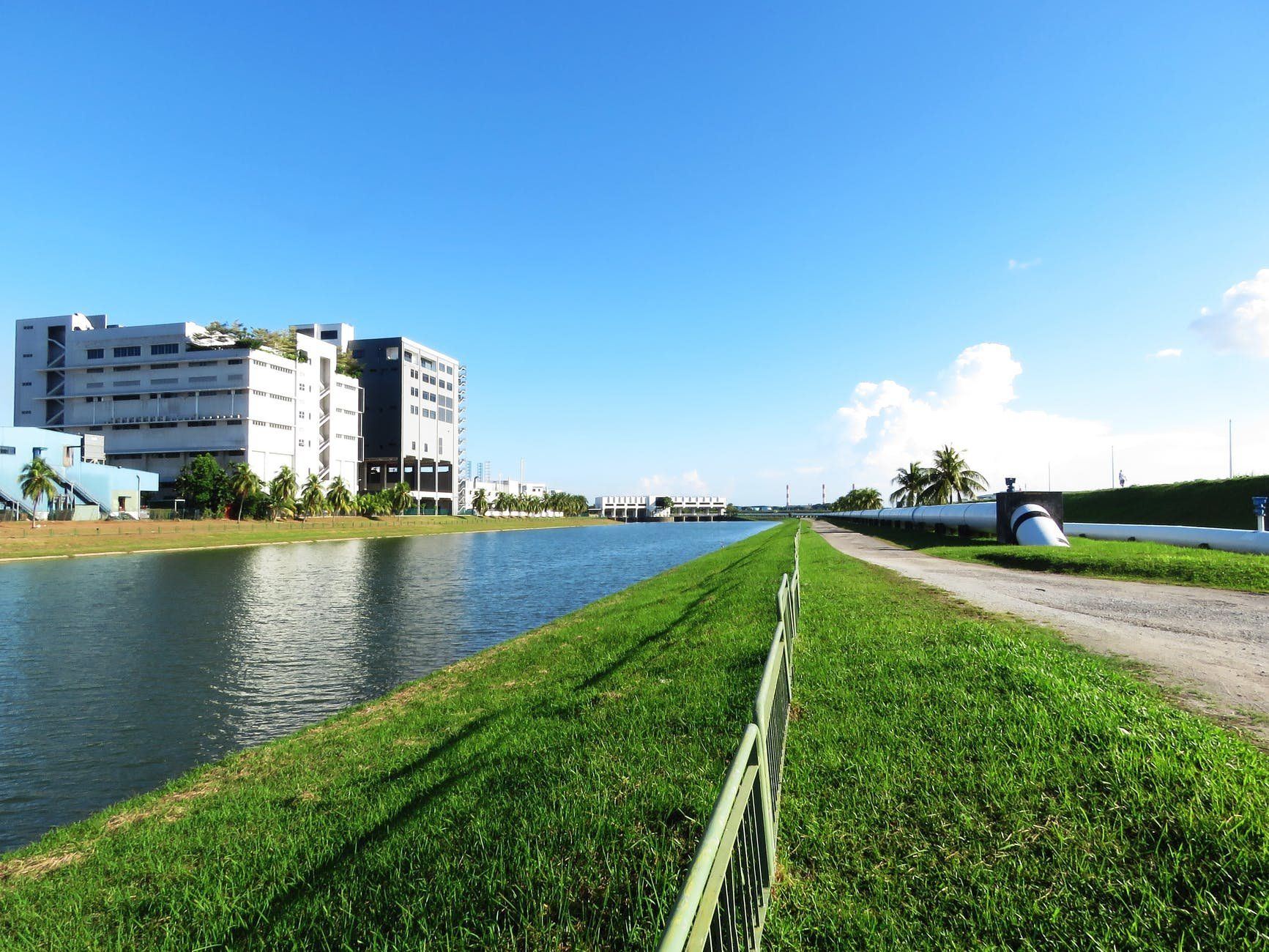 Many engineering teams are making the switch to a DevOps culture. This has a lot to do with the way the software development cycle has changed over the years. It used to take months to implement a new feature, get it through testing, fix any issues, and finally get it to production.
Many engineering teams are making the switch to a DevOps culture. This has a lot to do with the way the software development cycle has changed over the years. It used to take months to implement a new feature, get it through testing, fix any issues, and finally get it to production.
265. How To Deploy Multiple Sites to Firebase Hosting using GitHub Actions
 Welcome back! We will learn how to automate the deployment of multiple sites to Firebase hosting using GitHub Action in this tutorial. GitHub provides a freemium (free for open source) CI/CD tool that is integrated with their repository.
Welcome back! We will learn how to automate the deployment of multiple sites to Firebase hosting using GitHub Action in this tutorial. GitHub provides a freemium (free for open source) CI/CD tool that is integrated with their repository.
266. GitOps. GitOps? What is GitOps?
 In this blog we will try to answer all your pressing questions about GitOps and find out how it can help you in the software delivery process.
In this blog we will try to answer all your pressing questions about GitOps and find out how it can help you in the software delivery process.
267. What is the Impact of Remote Work on DevOps?
 The new normal of remote work is here. While the option to work from home was available at many organizations before the COVID-19 pandemic hit, this way of working has become a forced reality in certain industries. Lockdown restrictions are starting to ease up, but many companies are still enforcing or allowing their teams to work from home full- or part-time.
The new normal of remote work is here. While the option to work from home was available at many organizations before the COVID-19 pandemic hit, this way of working has become a forced reality in certain industries. Lockdown restrictions are starting to ease up, but many companies are still enforcing or allowing their teams to work from home full- or part-time.
268. What is Everything-as-Code? Examining the Explosion of "as Code" Buzzwords
 If you’re confused when you read about “[some software term] as code” or “everything as code,” all you really need to know is that we’re talking about automation: The thing we use to do tedious tasks for us, or orchestrate tasks when they become too large and complex for manual methods.
If you’re confused when you read about “[some software term] as code” or “everything as code,” all you really need to know is that we’re talking about automation: The thing we use to do tedious tasks for us, or orchestrate tasks when they become too large and complex for manual methods.
269. Issues With Setting up Azure Functions with a Service Bus Trigger
 So recently we had a problem. We’ve started building a micro-service based e-commerce platform that communicates using azure service bus. Unfortunately, we found that setting up azure functions with a service bus trigger either ended up with a lot of code to maintain or a lot of deployment pipelines. It was getting to be a pain, so we looked for an alternative which we found with logic apps and a bootstrapper function which I’ll take you through how to implement.
So recently we had a problem. We’ve started building a micro-service based e-commerce platform that communicates using azure service bus. Unfortunately, we found that setting up azure functions with a service bus trigger either ended up with a lot of code to maintain or a lot of deployment pipelines. It was getting to be a pain, so we looked for an alternative which we found with logic apps and a bootstrapper function which I’ll take you through how to implement.
270. What Does Peeling An Egg Have To Do With DevOps?
 Learn These Guiding Principles To Help You Level-Up Your DevOps Chops
Learn These Guiding Principles To Help You Level-Up Your DevOps Chops
271. How to Build a Serverless Full-stack Application Using Git, Google Drive, and Public CI/CD Runners?
 Learn to build a serverless full-stack application with backend workers and database only using git, google drive, and public CI/CD runners.
Learn to build a serverless full-stack application with backend workers and database only using git, google drive, and public CI/CD runners.
272. Getting Started with Kubernetes Persistent Volumes

273. Kubernetes Tutorial: Merge all the Kubeconfigs! [Part 7]
 Once you start managing more than one Kubernetes cluster, you'll start to demand more from your $KUBECONFIG.
Once you start managing more than one Kubernetes cluster, you'll start to demand more from your $KUBECONFIG.
274. What is AWS Key Management Service (KMS)?
 When we enable the key rotation it would reduce the chance that a compromised customer master key (CMK) could be used without your knowledge to access AWS resources.
When we enable the key rotation it would reduce the chance that a compromised customer master key (CMK) could be used without your knowledge to access AWS resources.
275. An Introduction to AWS Cognito: The Why, Hows, and Whats
 AWS Cognito is an identity management service that lets you sync all your user information in one place in a simple, secure, and scalable way.
AWS Cognito is an identity management service that lets you sync all your user information in one place in a simple, secure, and scalable way.
276. Using Lambdas in Production
 I have been using Lambda in production for about four years now personally, and three years professionally at Volta. Initially, I shipped Lambdas because it was easier than managing servers. At Volta, we now exclusively use server-less services because they are the smartest option for our workloads if we remember to support them correctly. This is a cheat sheet, a checklist of all the things you might want to remember when shipping something new to ensure it runs successfully.
I have been using Lambda in production for about four years now personally, and three years professionally at Volta. Initially, I shipped Lambdas because it was easier than managing servers. At Volta, we now exclusively use server-less services because they are the smartest option for our workloads if we remember to support them correctly. This is a cheat sheet, a checklist of all the things you might want to remember when shipping something new to ensure it runs successfully.
277. The Evolution of DevOps: Lessons for Organizations of all Sizes
 Having someone to lead the DevOps space early and instill the culture will reduce overall release cycles friction and shorten the time to market.
Having someone to lead the DevOps space early and instill the culture will reduce overall release cycles friction and shorten the time to market.
278. Top Kubernetes Consulting Service Providers: 2021 Edition
 Kubernetes opens up the potential for better application management and deployment automation.
Kubernetes opens up the potential for better application management and deployment automation.
279. Top 6 CI/CD Practices for End-to-End Development Pipelines
 Maximizing efficiency is about knowing how the data science puzzles fit together and then executing them.
Maximizing efficiency is about knowing how the data science puzzles fit together and then executing them.
280. SRE and DevOps: Jacks of all Trades, Masters in Everything
 There is a huge need for engineers in the SRE and DevOps spectrum right now.
There is a huge need for engineers in the SRE and DevOps spectrum right now.
281. Como Instalar um Servidor Apache HTTPD
 Oi pessoal!
Oi pessoal!
282. Get Better VMs, Containers and Serverless Computing Results By Following These Steps
 DEVELOP AND RUN APPLICATIONS WITHOUT THINKING ABOUT SERVERS
DEVELOP AND RUN APPLICATIONS WITHOUT THINKING ABOUT SERVERS
283. Features to Leverage While Implementing Azure DevOps in Your Organization
 Do you know what's Azure DevOps and how can your business leverage its features while implementing them in your organization? Let's take a read at this blog.
Do you know what's Azure DevOps and how can your business leverage its features while implementing them in your organization? Let's take a read at this blog.
284. Future of DevOps: DevSecOps, AIOps and something else?

285. Opinionated or Not: Choosing the Right Framework for the Job
 There’s a foundational question that every project starts with: accept the freedom to roll your own solutions along with the burdens that go with it, or take the chance to use sensible defaults that allow you to move quickly, but hide a multitude of decisions and set you on a prescriptive path.
There’s a foundational question that every project starts with: accept the freedom to roll your own solutions along with the burdens that go with it, or take the chance to use sensible defaults that allow you to move quickly, but hide a multitude of decisions and set you on a prescriptive path.
286. An Introduction to Microservices and Serverless
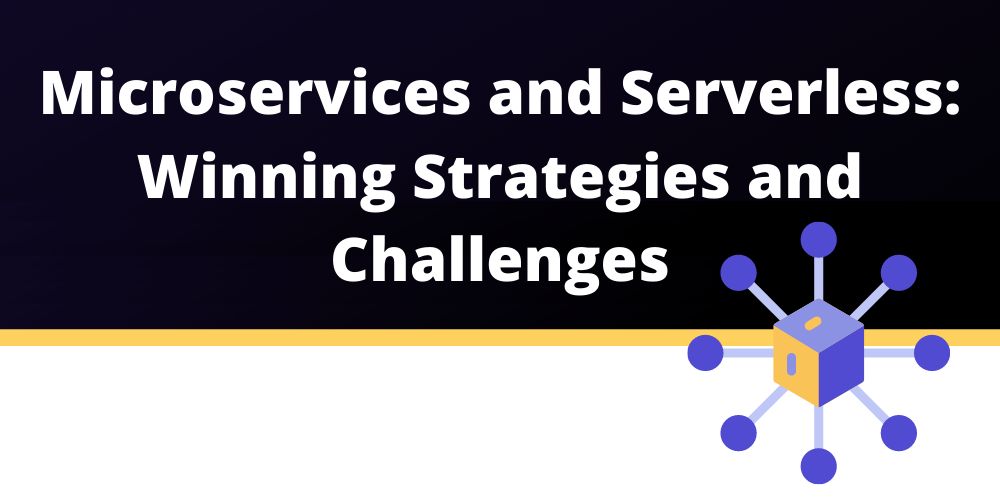 The concept of a microservice perfectly fits the structure of a serverless function, which easily enables deployment and runtime isolation for different services. On the storage side, services such as DynamoDB also make it easier to have independent databases for each microservice and scale them independently (when required or desirable).
The concept of a microservice perfectly fits the structure of a serverless function, which easily enables deployment and runtime isolation for different services. On the storage side, services such as DynamoDB also make it easier to have independent databases for each microservice and scale them independently (when required or desirable).
287. 5 Ways DevOps can make IT Infrastructure more Scalable
 DevOps, did you even hear about it in the first place? Or is it familiar? Before we go to learning the 5 Ways DevOps can make IT Infrastructure more Scalable, we must explore each term and practices around it first.
DevOps, did you even hear about it in the first place? Or is it familiar? Before we go to learning the 5 Ways DevOps can make IT Infrastructure more Scalable, we must explore each term and practices around it first.
288. Migrating from DC/OS to Kubernetes: The Challenges You May Face
 This blog will discuss DC/OS and Kubernetes and what challenges you might face when migrating between these container platforms.
This blog will discuss DC/OS and Kubernetes and what challenges you might face when migrating between these container platforms.
289. Docker: Beginner's Guide
 If you've been into software or web development for any amount of time, chances are that you at least heard of Docker. Maybe you're like me and have avoided using it because it seems complicated or difficult to set up.
If you've been into software or web development for any amount of time, chances are that you at least heard of Docker. Maybe you're like me and have avoided using it because it seems complicated or difficult to set up.
290. DevSecOps and DevOps: A Deep Dive
 In this series, I will describe what DevSecOps is, how we can implement it in AWS and how to can increase security in our operations.
In this series, I will describe what DevSecOps is, how we can implement it in AWS and how to can increase security in our operations.
291. Golang: A Beginner' Guide To Getting Started
 In this guide, you will learn everything you need to know to get started using Go to build real-world applications.
In this guide, you will learn everything you need to know to get started using Go to build real-world applications.
292. Introduction to Qoddi.com App Platform
 Qoddi is a PaaS app platform made for business, free for developers.
Qoddi is a PaaS app platform made for business, free for developers.
293. Using GitHub Actions To Publish NuGet Packages [A Step-by-Step Guide]

294. A Guide to Kubernetes Autoscaling Tools with Linode Kubernetes Engine
 Learn to use key Kubernetes autoscalers with short examples
Learn to use key Kubernetes autoscalers with short examples
295. Get a Free Week on Cloud Academy To Kickstart Your Tech Training
 Are you looking to make a jump in your technical career? Want to get trained or certified on AWS, Azure, Google Cloud Platform, DevOps, Kubernetes, Python, or another in-demand skill?
Are you looking to make a jump in your technical career? Want to get trained or certified on AWS, Azure, Google Cloud Platform, DevOps, Kubernetes, Python, or another in-demand skill?
296. The Basics of GitOps and Secure Deployment in Kubernetes
 Today I would like to discuss secrets and GitOps in the K8S world.
Today I would like to discuss secrets and GitOps in the K8S world.
297. Implement a Systemd Service on a Flask API
 Create a systemd service for Flask API(for GNU/Linux distros)
Create a systemd service for Flask API(for GNU/Linux distros)
298. Leading CISOs and DevOps Teams Are Leveraging DevSecOps
 DevSecOps is a major evolution of the cybersecurity practice. Today, companies leverage several automated tools. This creates complexities in DevSecOps.
DevSecOps is a major evolution of the cybersecurity practice. Today, companies leverage several automated tools. This creates complexities in DevSecOps.
299. How to Manage Credentials in Jenkins
 In this post, I walk you through how to install the plugin and the different ways it's used.
In this post, I walk you through how to install the plugin and the different ways it's used.
300. DevOps Automation Tools For Continuous Improvement
 DevOps, the term seems a buzz word for many from the last few years, but this buzzword is the most searched term on the internet by IT recruiters, software firms, and agencies. When it comes to DevOps, the pro enthusiasts argue saying it is never about the tools or automation, but they miss to see that, in fact, tools are the ones that take over the culture ones the DevOps culture is set in any firm. We all agree DevOps is not only about the tools, nor even an individual role, perhaps, it should be a group effort, DevOps is a trinity of people, process and tools. But to enable DevOps, in any organization, DevOps tools play a vital role.
DevOps, the term seems a buzz word for many from the last few years, but this buzzword is the most searched term on the internet by IT recruiters, software firms, and agencies. When it comes to DevOps, the pro enthusiasts argue saying it is never about the tools or automation, but they miss to see that, in fact, tools are the ones that take over the culture ones the DevOps culture is set in any firm. We all agree DevOps is not only about the tools, nor even an individual role, perhaps, it should be a group effort, DevOps is a trinity of people, process and tools. But to enable DevOps, in any organization, DevOps tools play a vital role.
301. How to Create an Azure API Management Instance using Bicep Lang via Azure DevOps
 The more I use Bicep, the more I love it. This is what ARM Templates should have been.
The more I use Bicep, the more I love it. This is what ARM Templates should have been.
302. Cloud Orchestration Vs. Cloud Automation Explained
 Nowadays, the public cloud has become the tech solution of choice for many companies, including Amazon, Netflix, and Facebook. Why? The reason is simple - due to flexible nature, public cloud solutions allow businesses to save money on unused resources. Moreover, cloud hosting is a perfect way to save time on managing and maintaining the data centers in which your data is stored since these are the responsibilities of your cloud service provider.
Nowadays, the public cloud has become the tech solution of choice for many companies, including Amazon, Netflix, and Facebook. Why? The reason is simple - due to flexible nature, public cloud solutions allow businesses to save money on unused resources. Moreover, cloud hosting is a perfect way to save time on managing and maintaining the data centers in which your data is stored since these are the responsibilities of your cloud service provider.
303. Create Your New Reality With Wirehole And Other Awesome Automation Tools
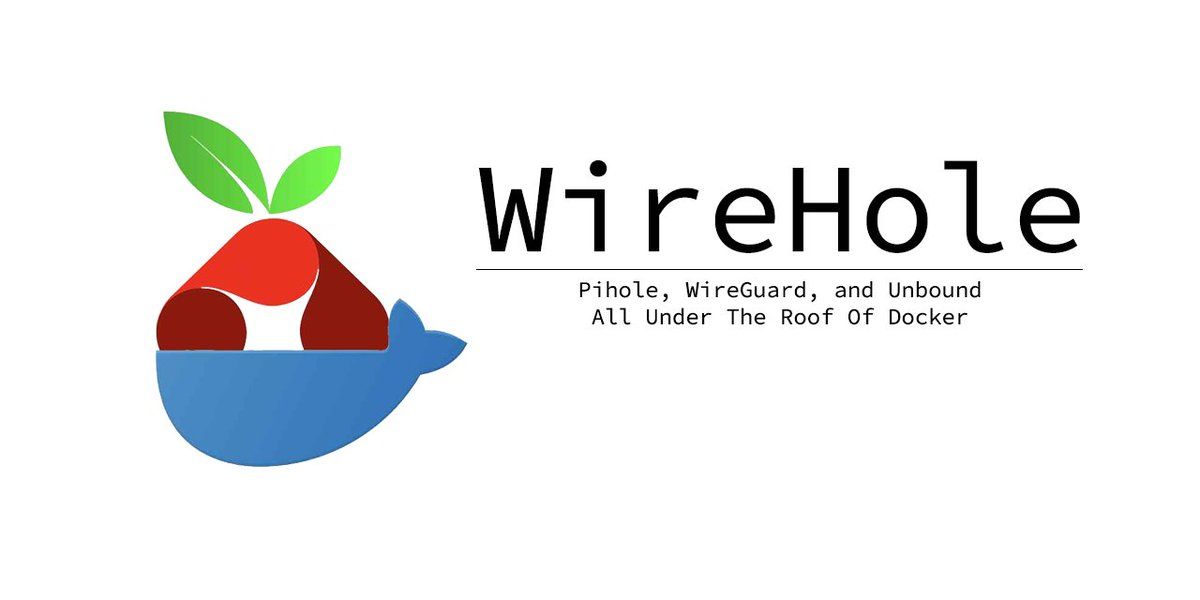 **UPDATE October 13, 2020 - The mjtechguy/terransible-wirehole Github repo now supports deploying to Digital Ocean and Hetzner Cloud as well!
**UPDATE October 13, 2020 - The mjtechguy/terransible-wirehole Github repo now supports deploying to Digital Ocean and Hetzner Cloud as well!
304. How to Deploy Apps to a Local K3d Cluster
 In this post, we will discuss how to deploy and test an application on a local Kubernetes cluster.
In this post, we will discuss how to deploy and test an application on a local Kubernetes cluster.
305. DevSecOps Introduction: Clear Instructions on How to Build a DevSecOps Pipeline in AWS [Part 2]
 Welcome to second part of the DevSecOps series. In the second part, we will turn ON/OFF the inbuilt led of ESP32 using AWS Device Shadow Service. Before starting, let's do a recap, in Part 1 we have connected the ESP32 MCU with AWS and able to publish Messages to IoT Core. The following series split into two parts (refer below) with very simple and clear instructions to provision a CI/CD pipeline adhering to DevSecOps principles in AWS. Everything covered from scratch you won't face any difficulty understanding. In case of any clarification, drop me a note on LinkedIn. Feel free to explore them with ease, skip to the one which is relevant to you.
Welcome to second part of the DevSecOps series. In the second part, we will turn ON/OFF the inbuilt led of ESP32 using AWS Device Shadow Service. Before starting, let's do a recap, in Part 1 we have connected the ESP32 MCU with AWS and able to publish Messages to IoT Core. The following series split into two parts (refer below) with very simple and clear instructions to provision a CI/CD pipeline adhering to DevSecOps principles in AWS. Everything covered from scratch you won't face any difficulty understanding. In case of any clarification, drop me a note on LinkedIn. Feel free to explore them with ease, skip to the one which is relevant to you.
306. Why GitOps is so exciting?
 Initially, we have seen DevOps, DevSecOps and many other ops but nowadays a new terminology “GitOps” is getting famous. Its fame has reached to this level that it was a trending topic at KubeCon.
Initially, we have seen DevOps, DevSecOps and many other ops but nowadays a new terminology “GitOps” is getting famous. Its fame has reached to this level that it was a trending topic at KubeCon.
307. Why Backend and DevOps Roles May Become One in the Future
 I believe that the job duties of “back-end” and “DevOps” engineers will coalesce to include almost everything that “the user doesn’t see”.
I believe that the job duties of “back-end” and “DevOps” engineers will coalesce to include almost everything that “the user doesn’t see”.
308. How to Use Kong for Full-stack Application Deployments with Kubernetes
 Kubernetes has become the name of the game when it comes to container orchestration. It allows teams to deploy and scale applications to meet changes in demand while providing a great developer experience.
Kubernetes has become the name of the game when it comes to container orchestration. It allows teams to deploy and scale applications to meet changes in demand while providing a great developer experience.
309. 3 Easy Steps to Change Main Git Branch on Heroku
 I just saw that Heroku created the ability to git push heroku from main instead of master. Since I've been wanting to change my Git repos away from master anyway, I thought I'd check it out myself. Luckily, it was extremely simple.
I just saw that Heroku created the ability to git push heroku from main instead of master. Since I've been wanting to change my Git repos away from master anyway, I thought I'd check it out myself. Luckily, it was extremely simple.
310. The State of Cloud Automation and the Promise of Infrastructure Automation
 The Cloud has become a familiar feature of the tech stacks at most organizations and is becoming much more than a place for server resources. At present, almost everything in our digital landscape is connected to a Cloud in one way or another.
The Cloud has become a familiar feature of the tech stacks at most organizations and is becoming much more than a place for server resources. At present, almost everything in our digital landscape is connected to a Cloud in one way or another.
311. Artifactory: A Great DevOps Tool That Will Help You Release At The Speed Of Light
 When it comes to DevOps, releasing fast is very important. Today, we will see how Artifactory is going to help companies release fast and efficient.
When it comes to DevOps, releasing fast is very important. Today, we will see how Artifactory is going to help companies release fast and efficient.
312. Containerization of Spark Python Using Kubernetes
 Introduction
Introduction
313. I Found A Painless Way To Manage Secrets In Google Kubernetes Engine
 When deploying complex SaaS platforms, secrets can quickly become the bane of one’s existence. I once wrote about how we ran out of space for our environment variables (in Elastic Beanstalk) because we had so many API keys and secrets. But those were the bad old days.
When deploying complex SaaS platforms, secrets can quickly become the bane of one’s existence. I once wrote about how we ran out of space for our environment variables (in Elastic Beanstalk) because we had so many API keys and secrets. But those were the bad old days.
314. How We Set Up a Production Ready CI Workflow Using GitHub Actions
 Recently, we started a new project and it decided it was a good time to try GitHub’s newish CI/CD tools which became generally available in November last year.
Recently, we started a new project and it decided it was a good time to try GitHub’s newish CI/CD tools which became generally available in November last year.
315. Mobile DevOps: Code Signing iOS Apps Automatically
 In this tutorial, you will learn how to use the Xcode Archive & Export for iOS step to manage your iOS code signing assets, archives and export an .ipa.
In this tutorial, you will learn how to use the Xcode Archive & Export for iOS step to manage your iOS code signing assets, archives and export an .ipa.
316. Are We Measuring Product Success Correctly? - Advice for PMs
 Measuring success is an integral part of any company, without which we cannot operate a product in any way or form. Without measuring success, the whole product vision would simply be based on some deluded platform of presumptions and intuitions which may or may not be correct. However, the question is what constitutes as ‘success’ and what should be measured in calculating how close or far we are to this success?
Measuring success is an integral part of any company, without which we cannot operate a product in any way or form. Without measuring success, the whole product vision would simply be based on some deluded platform of presumptions and intuitions which may or may not be correct. However, the question is what constitutes as ‘success’ and what should be measured in calculating how close or far we are to this success?
317. Azure DevOps: How to Build, Test And Deploy to Azure Kubernetes Service

318. My System Design Interview Checklist in 8 Simple Steps
 That dreaded system design interview. I remember the first system design question I was asked. “Design WhatsApp”, he said. I didn’t know where to start! I was a fresher. Data structures and algorithms were the only things I knew. I am sure you can guess how that interview went. Then after enough research, I made myself a checklist of components, of sorts, to navigate me through my next system design interviews. And I sh*t you not, it works!
That dreaded system design interview. I remember the first system design question I was asked. “Design WhatsApp”, he said. I didn’t know where to start! I was a fresher. Data structures and algorithms were the only things I knew. I am sure you can guess how that interview went. Then after enough research, I made myself a checklist of components, of sorts, to navigate me through my next system design interviews. And I sh*t you not, it works!
319. Deploy Like Vercel and Netlify with Cloud Run: Live, Preview, and Modern Workflow
 The modern workflow that unlocks your team's potential to ship faster.
The modern workflow that unlocks your team's potential to ship faster.
320. How to Migrate to Serverless and Make it Work Post-Transition
 Migrating to serverless? Learn the steps and what to bear in mind in each stage, from preparation to migration and post-transition.
Migrating to serverless? Learn the steps and what to bear in mind in each stage, from preparation to migration and post-transition.
321. Do You Really Need Staging Environment?
 A couple of months ago, our feature flagging platform suffered a 44 minute API outage.
A couple of months ago, our feature flagging platform suffered a 44 minute API outage.
322. 7 Ways AI is Transforming DevOps
 In this article, we will see how AI is transforming the DevOps universe.
In this article, we will see how AI is transforming the DevOps universe.
323. A-Z Of DevOps: Managing Multiple Environments With The Help Of These Tools
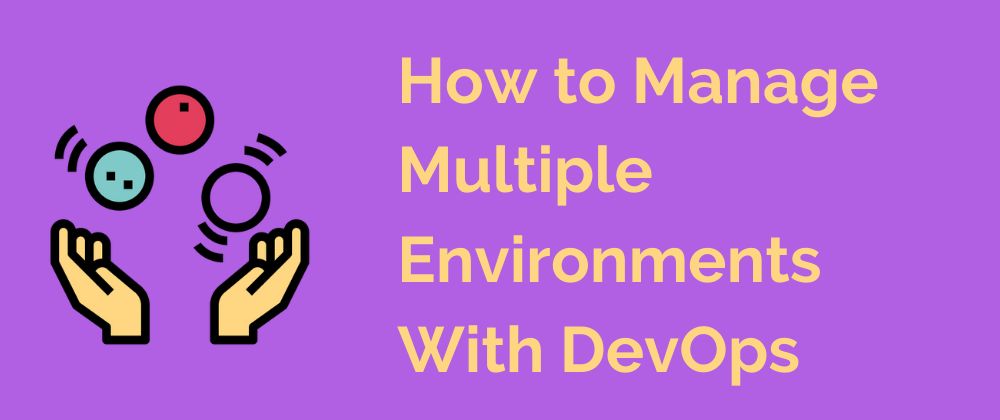 In most DevOps settings you’ll find that there are multiple environments in the pipeline. You might have conditions that change the environment based on which branch was merged or when a branch is tagged for release. There are a number of reasons you want to have more than just a production environment, the biggest reason being testing.
In most DevOps settings you’ll find that there are multiple environments in the pipeline. You might have conditions that change the environment based on which branch was merged or when a branch is tagged for release. There are a number of reasons you want to have more than just a production environment, the biggest reason being testing.
324. Observability on Heroku: How to Monitor Apps on a Managed Infrastructure
 Cloud platforms like Heroku make it easier than ever to host applications: just upload your code, and they’ll deploy it for you. But a common misconception is that, because you don’t own the infrastructure, you can’t really monitor your applications or see under the hood.
Cloud platforms like Heroku make it easier than ever to host applications: just upload your code, and they’ll deploy it for you. But a common misconception is that, because you don’t own the infrastructure, you can’t really monitor your applications or see under the hood.
325. How to Set Up a Kubernetes Cluster on Ubuntu 20.04/18.04/16.04 in 14 Steps
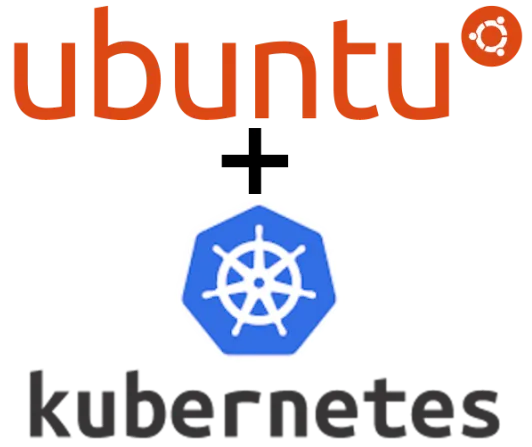 In this article on “14 Steps to Install kubernetes on Ubuntu 18.04 and 16.04” we are going to create Kubernetes cluster along with kubeadm on Ubuntu 18.04 (The same steps can be used for the Ubuntu 16.04 as well)
In this article on “14 Steps to Install kubernetes on Ubuntu 18.04 and 16.04” we are going to create Kubernetes cluster along with kubeadm on Ubuntu 18.04 (The same steps can be used for the Ubuntu 16.04 as well)
326. "Worry Later. Try First," says Product Designer Agnieszka Zimolag
 “In these unprecedented times…” The Humans of Hacker Noon design unprecedented products, and contribute to the internet in unprecedented ways. One such human is Agnieszka Zimolag from the US - interviewed here following a 2020 Noonie Nomination for contributions to the subject of Product Design.
“In these unprecedented times…” The Humans of Hacker Noon design unprecedented products, and contribute to the internet in unprecedented ways. One such human is Agnieszka Zimolag from the US - interviewed here following a 2020 Noonie Nomination for contributions to the subject of Product Design.
327. Here's What I Found on Scanning 2.6 Million Domains for Exposed Git Directories
 A scan of over 2.6 million domains revealed over 1000 publicly exposed git directories. Next to complete source code I found many credentials and api secrets.
A scan of over 2.6 million domains revealed over 1000 publicly exposed git directories. Next to complete source code I found many credentials and api secrets.
328. Canaries to the Rescue: Catching Service Issues Before the End User
 In this post, you'll learn the concept of canaries, example code, best practices, and other considerations, including both maintenance and financial costs.
In this post, you'll learn the concept of canaries, example code, best practices, and other considerations, including both maintenance and financial costs.
329. BizDevOps (DevOps 2.0) Is the New Iteration of DevOps
 BizDevOps breaks divisions between Business, Development and Operations teams to deliver business value fast. Discover the principles and benefits of BizDevOps.
BizDevOps breaks divisions between Business, Development and Operations teams to deliver business value fast. Discover the principles and benefits of BizDevOps.
330. Why Data Science is a Team Sport?
 Today, I am going to cover why I consider data science as a team sport?
Today, I am going to cover why I consider data science as a team sport?
331. You train it, you run it.
 Machine Learning has to adopt a "you build it, you run it" mentality. Here's why.
Machine Learning has to adopt a "you build it, you run it" mentality. Here's why.
332. How Internal Developer Platforms Impact Your DevOps Team Success
 This article takes a look at DevOps under the hood, with a deep dive into the use of Internal Developer Platforms to improve self-service and developer workflow
This article takes a look at DevOps under the hood, with a deep dive into the use of Internal Developer Platforms to improve self-service and developer workflow
333. How To Adjust Size Of A Kubernetes Cluster Using Cluster Autoscaler
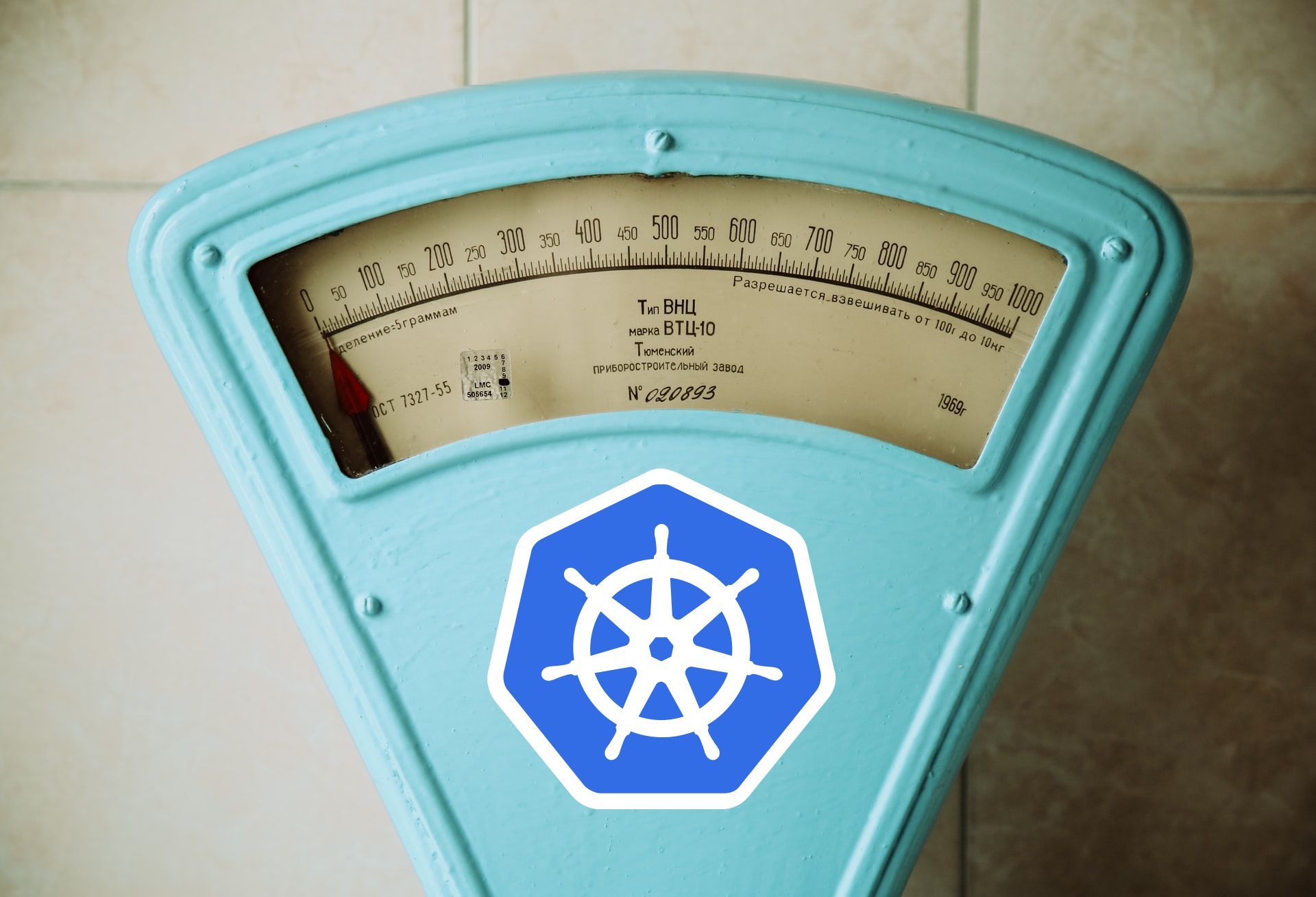 Spawning an AWS EKS cluster has never been easier and options are many: CloudFormation, Terraform or CDK. For the lazy, you can even use the great CLI utility eksctl from Weavework.
Spawning an AWS EKS cluster has never been easier and options are many: CloudFormation, Terraform or CDK. For the lazy, you can even use the great CLI utility eksctl from Weavework.
334. Everything You Need to Know About Tekton and Reusable Pipelines
 The advent of Cloud and Container technology ushered a new era in distributed computing at “planet scale” which was unheard of and unimaginable just a decade ago. Another interesting movement was brewing up a decade ago which bolstered delivering these complex solutions at high speed and accuracy, DevOps.
The advent of Cloud and Container technology ushered a new era in distributed computing at “planet scale” which was unheard of and unimaginable just a decade ago. Another interesting movement was brewing up a decade ago which bolstered delivering these complex solutions at high speed and accuracy, DevOps.
335. How to Master AWS Identity and Access Management
 From the basic to advanced concepts of AWS own service for identity and access management: users, groups, permissions for resources and much more.
From the basic to advanced concepts of AWS own service for identity and access management: users, groups, permissions for resources and much more.
336. How to Easily Deploy ML Models to Production
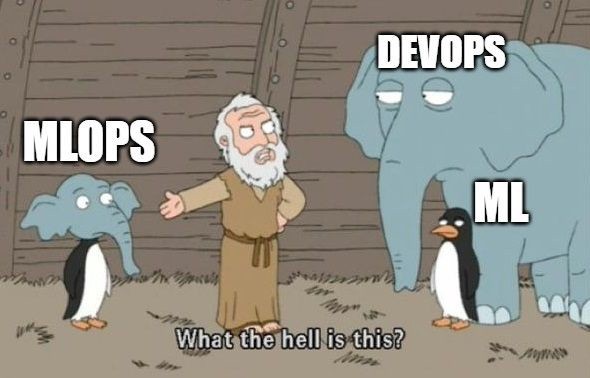 One of the known truths of the Machine Learning(ML) world is that it takes a lot longer to deploy ML models to production than to develop it.¹
One of the known truths of the Machine Learning(ML) world is that it takes a lot longer to deploy ML models to production than to develop it.¹
337. Adopt a DevOps Culture Before Looking for DevOps Engineers
 Job specs for DevOps engineer jobs often mention a vast variety of duties and responsibilities. Are they hiring for a single role or a whole team?
Job specs for DevOps engineer jobs often mention a vast variety of duties and responsibilities. Are they hiring for a single role or a whole team?
338. One Dockerfile is All it Takes: How I Fell in Love With Bake
 Using docker bake for outrageously simple monorepo docker builds.
Using docker bake for outrageously simple monorepo docker builds.
339. Introduction to Buildah: A CLI Tool For Building Images
 Buildah is a tool for building OCI-compatible images through a lower-level coreutils interface. Similar to Podman, Buildah doesn't depend on a daemon such as Docker or CRI-O, and it doesn't require root privileges. Buildah provides a command-line tool that replicates all the commands found in a Dockerfile. This allows you to issue Buildah commands from a scripting language such as Bash.
Buildah is a tool for building OCI-compatible images through a lower-level coreutils interface. Similar to Podman, Buildah doesn't depend on a daemon such as Docker or CRI-O, and it doesn't require root privileges. Buildah provides a command-line tool that replicates all the commands found in a Dockerfile. This allows you to issue Buildah commands from a scripting language such as Bash.
340. Introducing Handoff: Serverless Data Pipeline Orchestration Framework
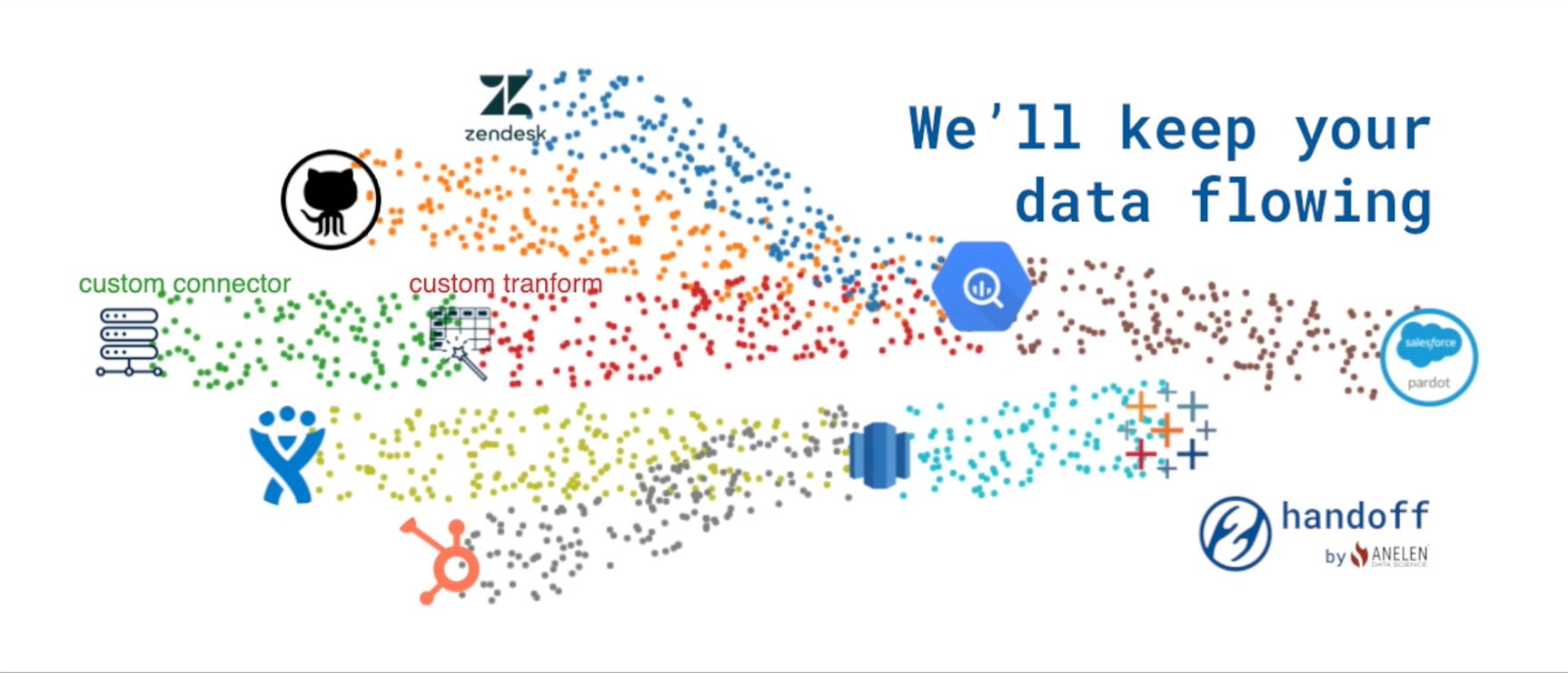 handoff is a serverless data pipeline orchestration framework simplifies the process of deploying ETL/ELT tasks to AWS Fargate.
handoff is a serverless data pipeline orchestration framework simplifies the process of deploying ETL/ELT tasks to AWS Fargate.
341. DevSecOps Introduction: Clear Instructions on How to Build a DevSecOps Pipeline in AWS [Part 1]
 DevSecOps is the new buzz and definitely a potential candidate to scare people in the ever-changing software industry. When I heard the term for the first time, my inner voice said it out loud, "When just this Happened, and why SEC is sandwich between them ?". Later on, to look cool, I started adding DevSecOps on my profile, but the dire consequence was a complete disappointment. DevSecOps isn't just restricted to understand security by heart & fit it with DevOps. A good analogy would be not to imagine your ex with someone, especially with your girlfriend/wife. It is all about "Shift left on Security" i.e. to introduce security as early as possible in the SDLC. Though I am not going to bore you with the definitions and concepts as I am a practical person. Thus, my objective here is to demonstrate how DevSecOps works in reality. The following series split into two parts (refer below) with very simple and clear instructions to provision a CI/CD pipeline adhering to DevSecOps principles in AWS. Everything covered from scratch you won't face any difficulty understanding. In case of any clarification, drop me a note on LinkedIn. Feel free to explore them with ease, skip to the one which is relevant to you.
DevSecOps is the new buzz and definitely a potential candidate to scare people in the ever-changing software industry. When I heard the term for the first time, my inner voice said it out loud, "When just this Happened, and why SEC is sandwich between them ?". Later on, to look cool, I started adding DevSecOps on my profile, but the dire consequence was a complete disappointment. DevSecOps isn't just restricted to understand security by heart & fit it with DevOps. A good analogy would be not to imagine your ex with someone, especially with your girlfriend/wife. It is all about "Shift left on Security" i.e. to introduce security as early as possible in the SDLC. Though I am not going to bore you with the definitions and concepts as I am a practical person. Thus, my objective here is to demonstrate how DevSecOps works in reality. The following series split into two parts (refer below) with very simple and clear instructions to provision a CI/CD pipeline adhering to DevSecOps principles in AWS. Everything covered from scratch you won't face any difficulty understanding. In case of any clarification, drop me a note on LinkedIn. Feel free to explore them with ease, skip to the one which is relevant to you.
342. Workflow Automation: Publishing Artifacts to Sonatype Nexus using Jenkins Pipelines

343. How Do You Manage Helm Charts?
 Whether you love it or hate it, Helm is a ubiquitous tool for managing Kubernetes applications. You can use it in many different ways which is great, but can also be overwhelming.
Whether you love it or hate it, Helm is a ubiquitous tool for managing Kubernetes applications. You can use it in many different ways which is great, but can also be overwhelming.
344. Try these 3 Alternatives to Heroku
 In this article, I will be sharing 3 awesome Heroku alternatives that are relatively new to the PaaS space.
In this article, I will be sharing 3 awesome Heroku alternatives that are relatively new to the PaaS space.
345. How parallel Github Actions jobs can run your RSpec tests faster in Ruby on Rails application
 Run efficiently parallel RSpec tests on GitHub Actions for Ruby on Rails application to save CI build time
Run efficiently parallel RSpec tests on GitHub Actions for Ruby on Rails application to save CI build time
346. How To Migrate An Existing Infrastructure into Terraform
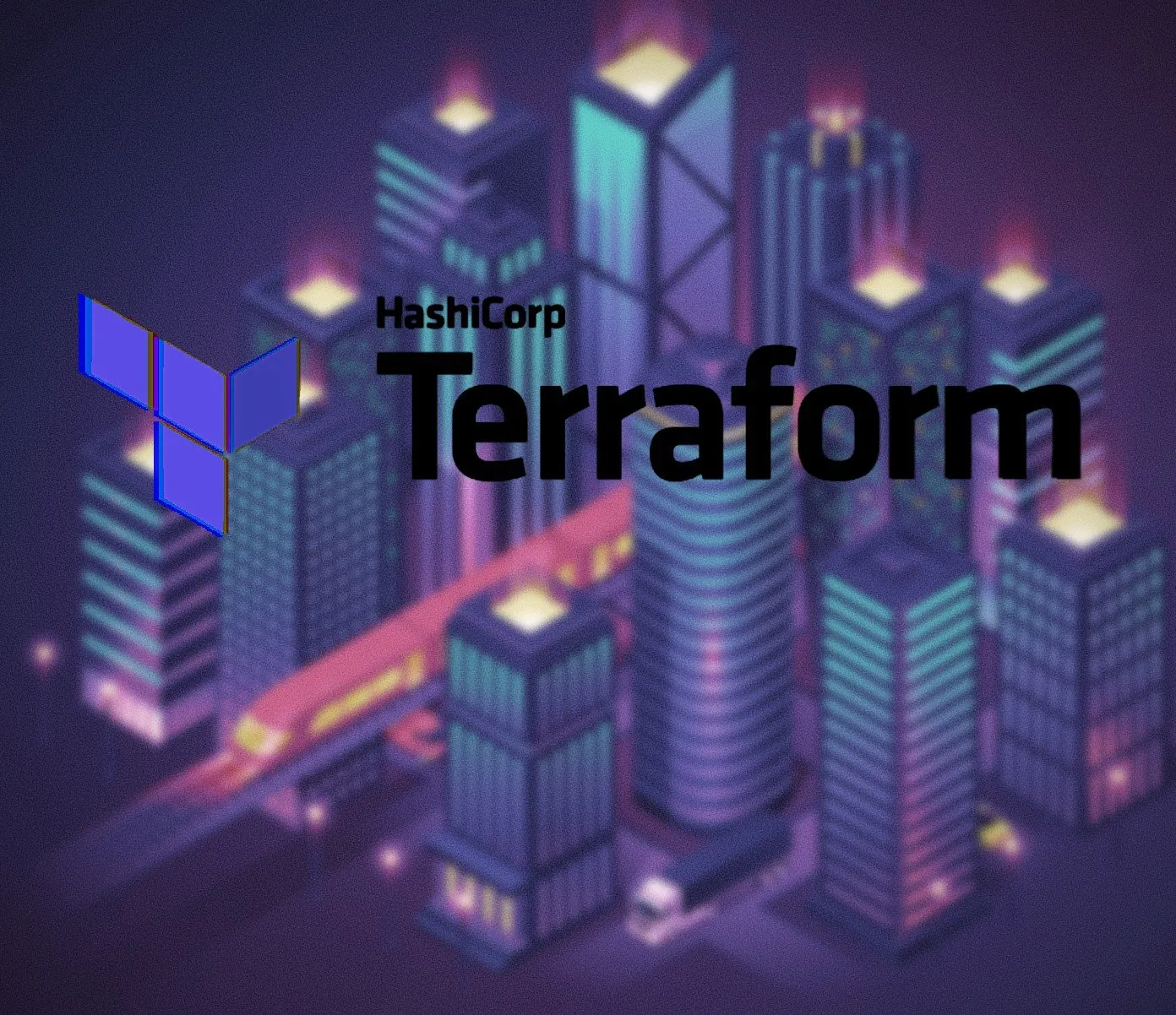 Terraform is a powerful tool to have in your toolset.
Terraform is a powerful tool to have in your toolset.
347. The Top 10 Books on DevOps You Need to Read
 I’ve been doing DevOps for a few years now, and I think I’m pretty good at it. Over these years I’ve read some books that really helped me along the way, here they are.
I’ve been doing DevOps for a few years now, and I think I’m pretty good at it. Over these years I’ve read some books that really helped me along the way, here they are.
348. The Day we Started to Protect DevOps with Blockchain
 I still remember February 2018 very well. Many people were in a really bad mood when it came to Blockchain or Distributed Ledger Technology (DLT), mainly because the price of most cryptocurrencies made a nose dive and the Disillusionment started.
I still remember February 2018 very well. Many people were in a really bad mood when it came to Blockchain or Distributed Ledger Technology (DLT), mainly because the price of most cryptocurrencies made a nose dive and the Disillusionment started.
349. How To Save On Costs With Spot Instances On Kubernetes
 This post will focus on how you can leverage spot instances of aws for cost saving in Kubernetes clusters without compromising on stability.
This post will focus on how you can leverage spot instances of aws for cost saving in Kubernetes clusters without compromising on stability.
350. 10 Cool CI/CD Tools For Your Project
 Continuous Integration, shortly called ‘CI’ in DevOps is an important process or a set of processes that are defined and carried out as a part of a pipeline called Build Pipeline or CI Pipeline.
Continuous Integration, shortly called ‘CI’ in DevOps is an important process or a set of processes that are defined and carried out as a part of a pipeline called Build Pipeline or CI Pipeline.
351. DevOps vs. SRE: Which Career Direction is Right for You?
 When it comes to computer engineering, there are plenty of titles and the wide variety makes it more confusing than it needs to be. DevOps and SRE are two roles
When it comes to computer engineering, there are plenty of titles and the wide variety makes it more confusing than it needs to be. DevOps and SRE are two roles
352. Getting Your IP From Anywhere
 There are several circumstances where you need to know the IP of your current machine.
There are several circumstances where you need to know the IP of your current machine.
353. DevOps Practices for Software Engineers to Learn
 In this world of cross-functional teams and microservice architecture, DevOps skills become increasingly important, and that starts with understanding CI/CD
In this world of cross-functional teams and microservice architecture, DevOps skills become increasingly important, and that starts with understanding CI/CD
354. Deep Dive Into DevSecOps: Heroku Flow Edition
 An Overview of DevSecOps and How to Automate It
An Overview of DevSecOps and How to Automate It
355. Microservice Observability Patterns [Part 2]
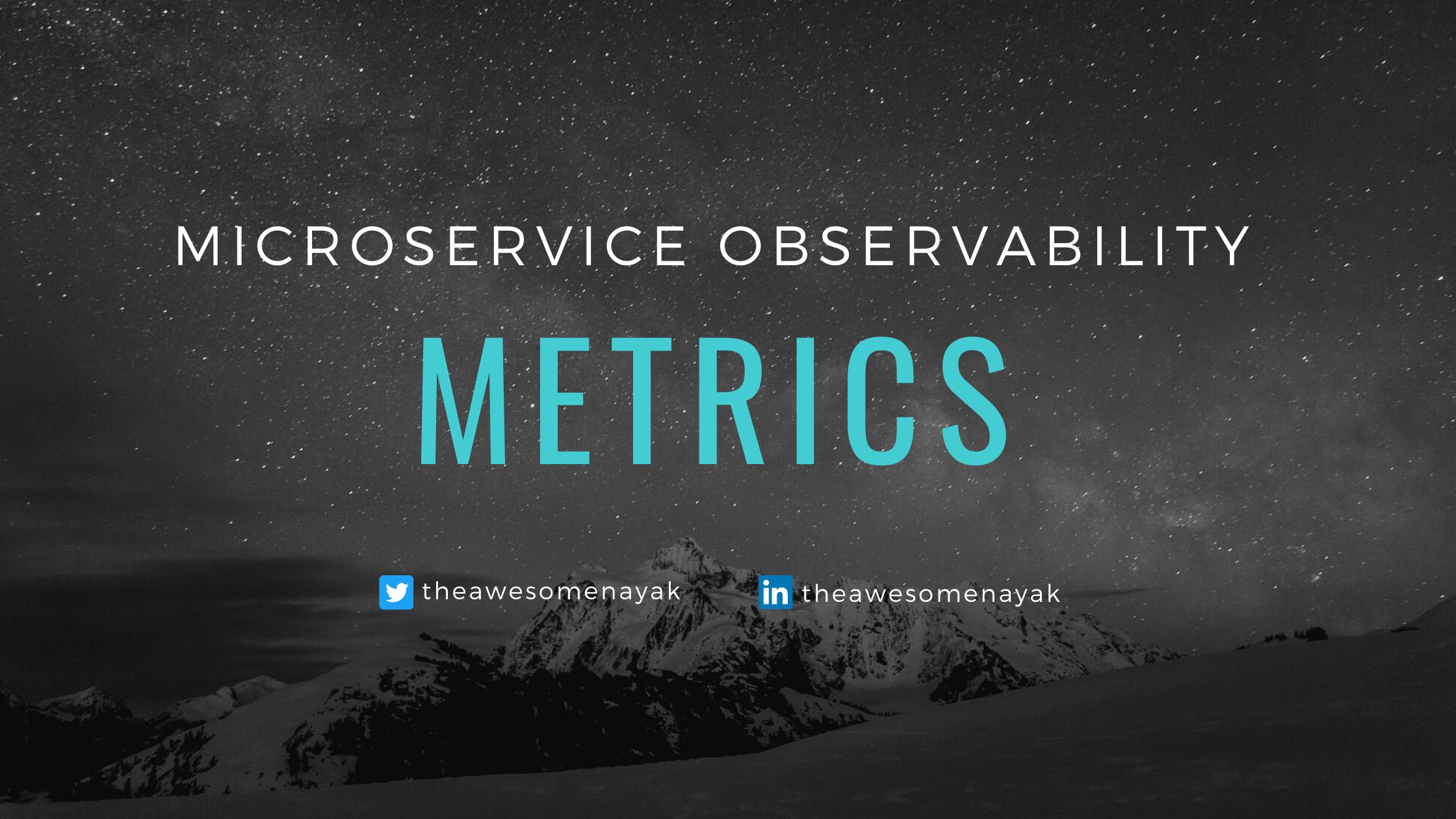 In my previous article, I talked about the importance of logs and the differences between structured and unstructured logging. Logs are easy to integrate into your application and provide the ability to represent any type of data in the form of strings.
In my previous article, I talked about the importance of logs and the differences between structured and unstructured logging. Logs are easy to integrate into your application and provide the ability to represent any type of data in the form of strings.
356. 5 Best Career Path for Experienced Java Developers
 If you are an experienced developer or a senior Java programmer, like someone with more than 5 to 8 years of experience, and wondering how to get to the next level, then you have come to the right place.
If you are an experienced developer or a senior Java programmer, like someone with more than 5 to 8 years of experience, and wondering how to get to the next level, then you have come to the right place.
357. How To Build CI/CD Pipelines Behind Your Firewall Using Codefresh Runner
 Continuous Integration/Delivery (CI/CD) is one of the most obvious candidates for moving to a Kubernetes cluster, as you automatically enjoy all the benefits of Kubernetes scalability. In traditional CI solutions, companies employ a fixed set of build nodes that teams must manually monitor and upgrade.
Continuous Integration/Delivery (CI/CD) is one of the most obvious candidates for moving to a Kubernetes cluster, as you automatically enjoy all the benefits of Kubernetes scalability. In traditional CI solutions, companies employ a fixed set of build nodes that teams must manually monitor and upgrade.
358. The Secrets of High-Performing DevOps Teams [Part 1]
 Ultra-fast innovation holds the key for conglomerates like Apple, Microsoft, and Tencent known as the pacesetters in the modern markets. However, they all faced challenges that are typical for established companies.
Ultra-fast innovation holds the key for conglomerates like Apple, Microsoft, and Tencent known as the pacesetters in the modern markets. However, they all faced challenges that are typical for established companies.
359. Custom Rego Function by Example
 Extending Open Policy Agent and creating custom rego functions
Extending Open Policy Agent and creating custom rego functions
360. I Got a New EKS Cluster Running And Terraform Code in 2 minutes
 AWS EKS + Terraform + Cloudskiff do the job
AWS EKS + Terraform + Cloudskiff do the job
361. The $5 Billion DevOps Stranglehold
 Ten years ago NewRelic, DataDog, Splunk, Dynatrace and SolarWinds built tools we loved to use. They were easy to implement and solved problems quickly and efficiently. Each company was known primarily for a single, well-conceived product. NewRelic’s APM. Splunk’s log file analyzer. DataDog’s server monitor. SolarWinds’ network performance monitor. These companies were beloved by users during the 2000s.
Ten years ago NewRelic, DataDog, Splunk, Dynatrace and SolarWinds built tools we loved to use. They were easy to implement and solved problems quickly and efficiently. Each company was known primarily for a single, well-conceived product. NewRelic’s APM. Splunk’s log file analyzer. DataDog’s server monitor. SolarWinds’ network performance monitor. These companies were beloved by users during the 2000s.
362. How to Consume and Run Gulp Tasks in Other Files from a Central Gulpfile
 Call gulptasks in multiple files from a central gulpfile.js.
Call gulptasks in multiple files from a central gulpfile.js.
363. How To Improve Your Docker Build Time in GitLab CI
 Make your containerized CI environments truly useful by accelerating your Docker builds
Make your containerized CI environments truly useful by accelerating your Docker builds
364. Kubernetes 101- Concepts, Potential, and lots of Container Orchestrations
 A 10,000 foot view of Kubernetes Concepts and Architecture. This is a part of our 101 Series. For more, check out the Magalix Blog.
A 10,000 foot view of Kubernetes Concepts and Architecture. This is a part of our 101 Series. For more, check out the Magalix Blog.
365. Modern C and C++: Important Facts To Know
 C was developed and promoted by Dennis Ritchie in the years between 1969 and 1973 at AT&T Bell Labs. C++ came into existence around 1979 by Bjarne Stroustrup. C++ was created as an enrichment to the C programming language, and initially, it was named "C with Classes."
C was developed and promoted by Dennis Ritchie in the years between 1969 and 1973 at AT&T Bell Labs. C++ came into existence around 1979 by Bjarne Stroustrup. C++ was created as an enrichment to the C programming language, and initially, it was named "C with Classes."
366. The Essential Guide to Load-Balancing Minecraft Servers with Kong Gateway
 We're going to explore port forwarding and load balancing with Kong Gateway by spinning up multiple Minecraft servers,
We're going to explore port forwarding and load balancing with Kong Gateway by spinning up multiple Minecraft servers,
367. Connecting Securely to Private AWS Resources by Using SSH Tunnels and Bastion Hosts
 The Problem with Publicly Accessible AWS Resources and how to solve it
The Problem with Publicly Accessible AWS Resources and how to solve it
368. An Introduction to Docker for Web Development
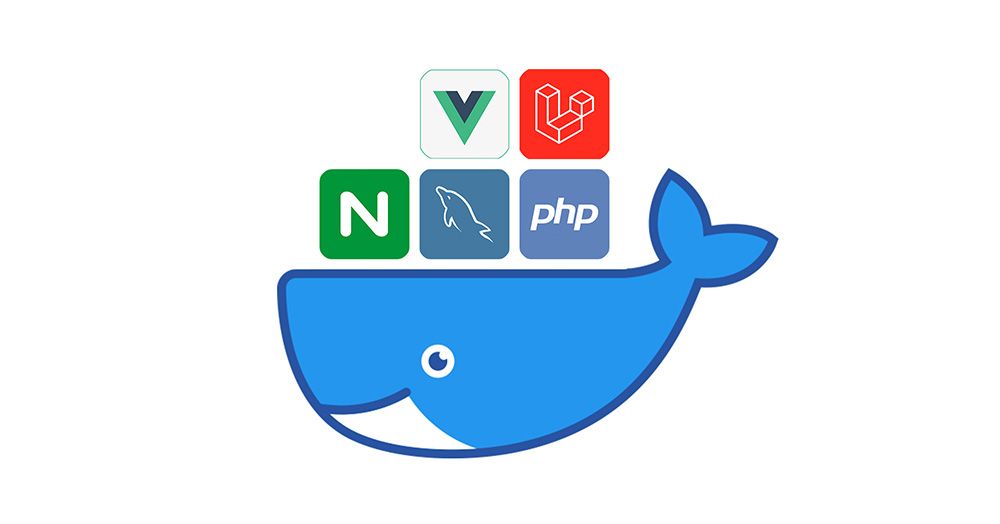 This is the introduction to a series that was originally published on tech.osteel.me. Only the introduction was brought to Hacker Noon — links to other parts will take you to that other website.
This is the introduction to a series that was originally published on tech.osteel.me. Only the introduction was brought to Hacker Noon — links to other parts will take you to that other website.
369. Managing Local Kubernetes Cluster with Lightweight Kubernetes and Traefik Proxy
 Motivation
Motivation
370. Data Persistent Prometheus-Grafana Intergration with Jenkins
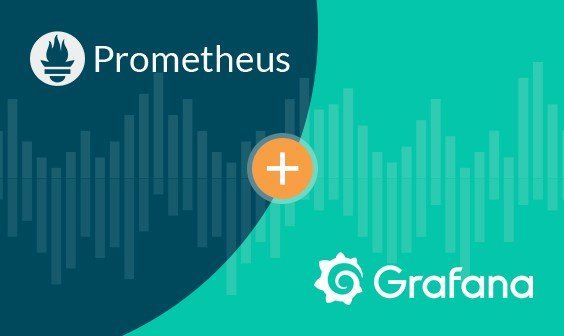 Prometheus is an open-source application monitoring and alerting software solution. It is a web application which can be deployed anywhere — in a PC, virtual machine, or even in a container. It scrapes data from the exporters (small programs convert system data to Prometheus metrics) periodically and records the real-time metrics in a time series database.
Prometheus is an open-source application monitoring and alerting software solution. It is a web application which can be deployed anywhere — in a PC, virtual machine, or even in a container. It scrapes data from the exporters (small programs convert system data to Prometheus metrics) periodically and records the real-time metrics in a time series database.
371. Learn How to Build a CI/CD Pipeline Using GitLab for your Website
 We'll run through how to build and configure a CI/CD pipeline to deploy your business's website using AWS, Terraform & Gitlab.
We'll run through how to build and configure a CI/CD pipeline to deploy your business's website using AWS, Terraform & Gitlab.
372. 6 Popular Software Testing Trends Everyone Should Follow

373. Mastering Docker: How to Attach an AWS EBS Storage Volume to Your Docker Container

374. The Importance of DevOps in Mobile App Development
 DevOps is growing vital in modern application development, operations, testing, and delivery. It is no longer a niche strategy. DevOps methodology is embraced by a quarter of leading names in the Forbes Global 2000 list. The mobile application connected with DevOps bridges the gap between development and operations. It emphasises over communication and collaboration, constant integration, QA, and delivery with automatic deployment. The developing, testing, releasing, and upgrading of mobile apps can occur swiftly and more certainly.
DevOps is growing vital in modern application development, operations, testing, and delivery. It is no longer a niche strategy. DevOps methodology is embraced by a quarter of leading names in the Forbes Global 2000 list. The mobile application connected with DevOps bridges the gap between development and operations. It emphasises over communication and collaboration, constant integration, QA, and delivery with automatic deployment. The developing, testing, releasing, and upgrading of mobile apps can occur swiftly and more certainly.
375. How To Run PostgreSQL as a Build Requirement in TeamCity Build
 We use different Continuous Integration tools in our projects. One of them is TeamCity software. A pipeline for TeamCity can be configured easily and has two steps, such as run tests and build a docker image for further deployment. However, I needed to run Postgres before running tests. I made a research, I read the documentation and this article may be useful to close a gap for team city’s documentation.
We use different Continuous Integration tools in our projects. One of them is TeamCity software. A pipeline for TeamCity can be configured easily and has two steps, such as run tests and build a docker image for further deployment. However, I needed to run Postgres before running tests. I made a research, I read the documentation and this article may be useful to close a gap for team city’s documentation.
376. How to set up Continuous Delivery using Heroku Flow
 Continuous deployment doesn’t need to be this hard to set up.
Continuous deployment doesn’t need to be this hard to set up.
377. So, You Read Accelerate. Now What?
 “Our analysis is clear: in today’s fast-moving and competitive world, the best thing you can do for your products, your company, and your people is institute a culture of experimentation and learning, and invest in the technical and management capabilities that enable it.” – Nicole Forsgren, Jez Humble, and Gene Kim, Accelerate.
“Our analysis is clear: in today’s fast-moving and competitive world, the best thing you can do for your products, your company, and your people is institute a culture of experimentation and learning, and invest in the technical and management capabilities that enable it.” – Nicole Forsgren, Jez Humble, and Gene Kim, Accelerate.
378. A Guide to Building Complex Serverless Infrastructures
 In this article you'll find out how the AWS Well-Architected Framework came to be, how it evolved and how it should be implemented in 2021.
In this article you'll find out how the AWS Well-Architected Framework came to be, how it evolved and how it should be implemented in 2021.
379. Top 15 Basic DevOps Interview Questions: 2021 Edition
 If you are looking for DevOps Interview Questions and answers, you are on the right page and below are some Real-time DevOps Interview Questions common in 2020. Go through all of them to crack your next interview.
If you are looking for DevOps Interview Questions and answers, you are on the right page and below are some Real-time DevOps Interview Questions common in 2020. Go through all of them to crack your next interview.
380. Road to Noovolari: The Journey of a Tech Startup
 Our journey from business unit to tech startup focused on building open-source software for multi-cloud environments
Our journey from business unit to tech startup focused on building open-source software for multi-cloud environments
381. Time, Space, and DACs: The Way Ahead
 While regarding how to form a DAC, people are too optimistic or ideal. It seems DAC will start from scratch by itself when connecting people (it's definitely not, remember the Guild that the Mandalorian has joined, it is a typical DAC, you can see how complicated it is), no clear path was given or discussed so far. DAC would be the mainstream value creation entity in the Value Internet Era.
While regarding how to form a DAC, people are too optimistic or ideal. It seems DAC will start from scratch by itself when connecting people (it's definitely not, remember the Guild that the Mandalorian has joined, it is a typical DAC, you can see how complicated it is), no clear path was given or discussed so far. DAC would be the mainstream value creation entity in the Value Internet Era.
382. How Adopting PaaS Will Shake Up Your Team
 If your project is considering PaaS, then you may be worried about how this change might impact your team—and rightfully so. Switching to PaaS often results in major shifts in roles and responsibilities.
If your project is considering PaaS, then you may be worried about how this change might impact your team—and rightfully so. Switching to PaaS often results in major shifts in roles and responsibilities.
383. Node.js Monitoring Made Easy

384. The Ultimate Guide to DORA Metrics
 What are DORA metrics and how can engineering teams use these metrics to identify high and low-performing dev teams?
What are DORA metrics and how can engineering teams use these metrics to identify high and low-performing dev teams?
385. Kubernetes Scheduler: Explained in Plain English with Comics
 In Kubernetes pod is the smallest deployable unit of workload. So the obvious question :
In Kubernetes pod is the smallest deployable unit of workload. So the obvious question :
386. DevOps and Telco Softwarisation - Part 3: A CI/CD setup for a 5G Telco project
 Image courtesy of Pexels: Troy Squillaci
Image courtesy of Pexels: Troy Squillaci
387. Why DevOps is Important for IT Businesses
 Know everything about the different phases of devops lifecycle. This will enable us to understand its value to IT businesses.
Know everything about the different phases of devops lifecycle. This will enable us to understand its value to IT businesses.
388. 4 Best Application-Deployment Techniques You Will Discover in 2021
 Application deployment comprises the steps, processes, and activities required to make an application or update available for its intended users. The manner in which you deploy an application matters a great deal as it impacts how quickly your product will respond to changes, and the quality of these changes. Today, most software developers deploy updates, patches, and new applications via a combination of manual, automated, and cloud-based processes, although, manual application deployment is being phased out.
Application deployment comprises the steps, processes, and activities required to make an application or update available for its intended users. The manner in which you deploy an application matters a great deal as it impacts how quickly your product will respond to changes, and the quality of these changes. Today, most software developers deploy updates, patches, and new applications via a combination of manual, automated, and cloud-based processes, although, manual application deployment is being phased out.
389. Monitoring Kubernetes Components using Prometheus
 Monitoring is a crucial aspect of any Ops pipeline and for technologies like Kubernetes which is a rage right now, a robust monitoring setup can bolster your confidence to migrate production workloads from VMs to Containers.
Monitoring is a crucial aspect of any Ops pipeline and for technologies like Kubernetes which is a rage right now, a robust monitoring setup can bolster your confidence to migrate production workloads from VMs to Containers.
390. SQL Injections: Beginners Guide

391. Incident Management Best Practices: 2021 Edition
 Covering the basics
Covering the basics
392. Connecting Your Old Jenkins Pipelines With The New Ones [A How-To Guide]
 As a software producer, you need to keep releases moving, even as you need to move your technology ahead. Transitioning your Jenkins continuous integration (CI) pipelines to a newer, optimized system can’t be a roadblock, and your enterprise can’t afford the work stoppage a rip-and-replace rework would require.
As a software producer, you need to keep releases moving, even as you need to move your technology ahead. Transitioning your Jenkins continuous integration (CI) pipelines to a newer, optimized system can’t be a roadblock, and your enterprise can’t afford the work stoppage a rip-and-replace rework would require.
393. How To Find Your Docker Logs
 There’s a short answer, and a long answer. The short answer, that will satisfy your needs in the vast majority of cases, is:
There’s a short answer, and a long answer. The short answer, that will satisfy your needs in the vast majority of cases, is:
394. 10 Free Courses to learn Docker and DevOps for Programmers and Software Developers

395. How the DevOps Model Redefines QA Best Practices
 Shorter development cycles and faster innovation are the basic characteristics of the DevOps model. It has swept the market with new ideas and incredible solutions, leading to 74% adoption by global enterprises. The reasons are different, but the top ones are the ability to recover from a failure in less than 60 minutes, minimization of support cases by 37%, and overall need to “put out fires”. No wonder that Quality Assurance, as a stage of the software development process, had to adapt to the new reality of the DevOps model and change its traditional approaches.
Shorter development cycles and faster innovation are the basic characteristics of the DevOps model. It has swept the market with new ideas and incredible solutions, leading to 74% adoption by global enterprises. The reasons are different, but the top ones are the ability to recover from a failure in less than 60 minutes, minimization of support cases by 37%, and overall need to “put out fires”. No wonder that Quality Assurance, as a stage of the software development process, had to adapt to the new reality of the DevOps model and change its traditional approaches.
396. How DAGs Grow: When People Trust A Data Source, They'll Ask More Of It
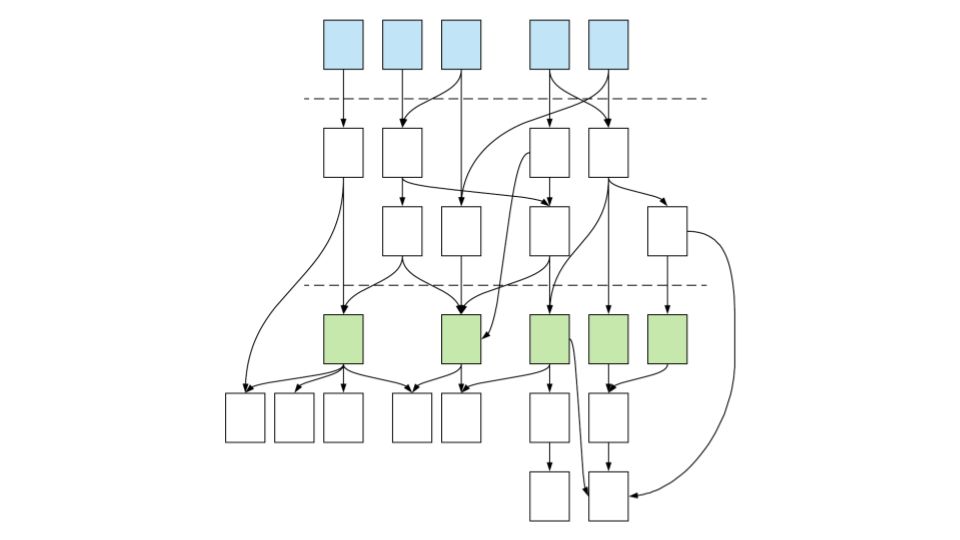 This blog post is a refresh of a talk that James and I gave at Strata back in 2017. Why recap a 3-year-old conference talk? Well, the core ideas have aged well, we’ve never actually put them into writing before, and we’ve learned some new things in the meantime. Enjoy!
This blog post is a refresh of a talk that James and I gave at Strata back in 2017. Why recap a 3-year-old conference talk? Well, the core ideas have aged well, we’ve never actually put them into writing before, and we’ve learned some new things in the meantime. Enjoy!
397. To Log Or Not To Log, Is The (Eternal) Question
 An alternative logging strategy to make loggers your friends, not enemies
An alternative logging strategy to make loggers your friends, not enemies
398. Industrial IoT and DevOps: How To Get Started
 As the Industrial IoT segment is facing many challenges, DevOps for Industrial IoT is helping companies become more efficient. Here's how.
As the Industrial IoT segment is facing many challenges, DevOps for Industrial IoT is helping companies become more efficient. Here's how.
399. The Maddening Middle — the Failure and Work Between Small Wins and Huge Wins

400. AWS Lambda with Kinesis Trigger: 6 Pitfalls and How to Fix Them
 In this article, we discuss the 6 most common pitfalls of AWS Lambda with Kinesis trigger that are usually spotted only in production.
In this article, we discuss the 6 most common pitfalls of AWS Lambda with Kinesis trigger that are usually spotted only in production.
401. 4 AWS Lambda Debug Methods To Troubleshoot Function Issues
 Experiencing issues with AWS Lambda? Explore these four popular AWS Lambda debug methods to quickly rid yourself of troublesome bugs.
Experiencing issues with AWS Lambda? Explore these four popular AWS Lambda debug methods to quickly rid yourself of troublesome bugs.
402. Microsoft, The Unit of Deployment, and Win/Win Kubernetes with Co-Founder Joe Beda
 We recently had the opportunity to interview VMware’s principal engineer, Joe Beda, one of the creators of Kubernetes, as well as the Google Compute Engine. Joe
We recently had the opportunity to interview VMware’s principal engineer, Joe Beda, one of the creators of Kubernetes, as well as the Google Compute Engine. Joe
403. Why Implementing Microservices on AWS Is Indispensable to a Modern Architecture for Business Agility
 AWS customers build microservices on 3 common patterns: API-driven, event-driven, & data streaming. The blog covers the common characterics of microservices.
AWS customers build microservices on 3 common patterns: API-driven, event-driven, & data streaming. The blog covers the common characterics of microservices.
404. How to Set Up Jenkins on Kubernetes
 This guide will walk you through the process of setting up Jenkins on Kubernetes. Jenkins is a widely-used open source CI server that provides hundreds of plugins to support building, deploying and automating your projects.
This guide will walk you through the process of setting up Jenkins on Kubernetes. Jenkins is a widely-used open source CI server that provides hundreds of plugins to support building, deploying and automating your projects.
405. Kubernetes CRDs Explained: What are They and How to Use Them to Extend Your Kubernetes APIs
 CRD is a special resource in Kubernetes. Read along if you want to expand upon the capabilities of regular Kubernetes and create your own solution.
CRD is a special resource in Kubernetes. Read along if you want to expand upon the capabilities of regular Kubernetes and create your own solution.
406. Key Aspects of Machine Learning Operations, Explained
 If you have ever worked or currently working in the IT field, then you definitely faced the common term «machine learning.
If you have ever worked or currently working in the IT field, then you definitely faced the common term «machine learning.
407. 5 Tips for Integrating Security into Development - Part 1
 In this two-part series, we’re bringing you secure coding best practices and practical tips that you can lean on when integrating security into development
In this two-part series, we’re bringing you secure coding best practices and practical tips that you can lean on when integrating security into development
408. Utilizing the Elasticsearch Snapshot Module for Databackups on Azure blob Storage
 While running a self managed elasticsearch cluster like any other database, it's important to make provisions for data backups. Data backups on Elasticsearch can't be done by simply copying elasticsearch data files from one disk to another, this tutorial guides you through making the best use of the Elasticsearch snapshot module for creating cluster snapshots and leverages the Azure blob storage for securely storing your backed up data. Also besides backing up data, the snapshot api also comes in handy for migrating data from one cluster to another.
While running a self managed elasticsearch cluster like any other database, it's important to make provisions for data backups. Data backups on Elasticsearch can't be done by simply copying elasticsearch data files from one disk to another, this tutorial guides you through making the best use of the Elasticsearch snapshot module for creating cluster snapshots and leverages the Azure blob storage for securely storing your backed up data. Also besides backing up data, the snapshot api also comes in handy for migrating data from one cluster to another.
409. Positive Behavioral Metrics: How to Identify, Implement and Share KPIs
 Data is critically important for organizational success. As IT professionals, you understand the benefits of establishing clear metrics to gain visibility into how your organization is driving value. The right metrics provide insights into what the organization needs to change and where it is winning.
Data is critically important for organizational success. As IT professionals, you understand the benefits of establishing clear metrics to gain visibility into how your organization is driving value. The right metrics provide insights into what the organization needs to change and where it is winning.
410. Kubernetes Explained Simply: #1 Kubectl Hack
 To say that Kubernetes uses a bit of YAML is like saying that a few people put some of their code on GitHub – accurate, but severely understated.
To say that Kubernetes uses a bit of YAML is like saying that a few people put some of their code on GitHub – accurate, but severely understated.
411. The Early Velocity Trap
 With much of the DevOps stack having matured and good practices becoming more mainstream, the need for quality in software has quickly become a central issue
With much of the DevOps stack having matured and good practices becoming more mainstream, the need for quality in software has quickly become a central issue
412. Infrastructure As Code: The Next Big Shift is Here
 Crossplane is the next step in the evolution of software infrastructure; provisioning, delivery and maintenance.
Crossplane is the next step in the evolution of software infrastructure; provisioning, delivery and maintenance.
413. What the future holds: 5 core QA trends to rule 2022
 Businesses continue to move forward on the digital acceleration path provoked by the pandemic, which means the demand for software testing will increase. What t
Businesses continue to move forward on the digital acceleration path provoked by the pandemic, which means the demand for software testing will increase. What t
414. Achieve High Throughput Direct File Transfers using NKN client [Decentralized FTP]
 NKN client enables free end to end data transmission in a purely decentralized way.
NKN client enables free end to end data transmission in a purely decentralized way.
415. Why Infrastructure as a Service Is Ideal For Startups
 Overview
Overview
416. What is DevOps and How Does it Influence the Digital Transformation of Companies?
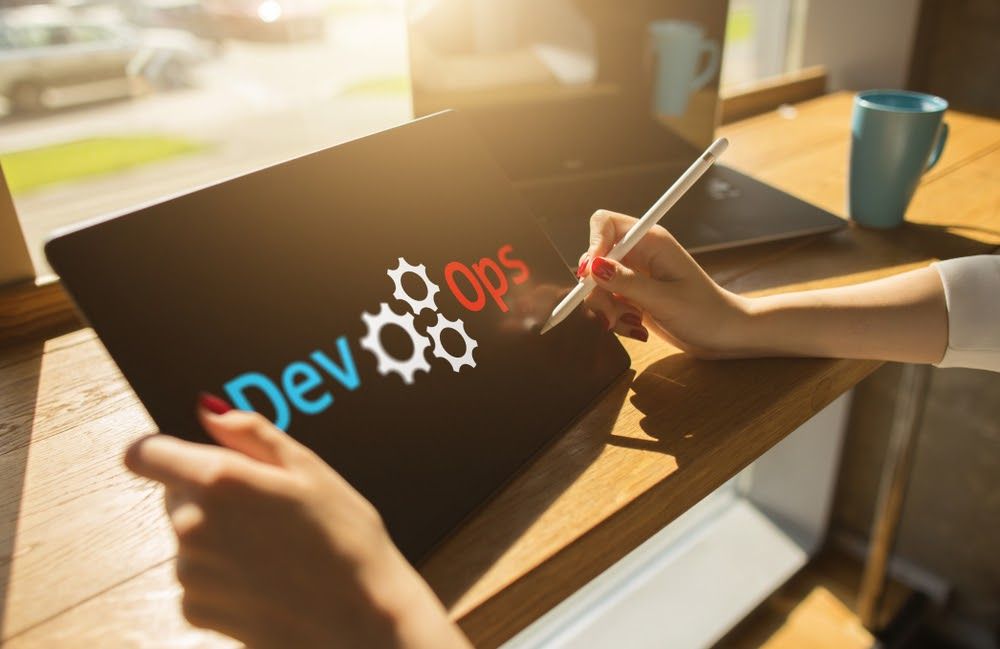 When we talk about DevOps we mean the set of process automation practices in the software and IT departments. DevOps is a movement, or work philosophy, also defined as a culture of shared responsibility or systematic thinking, whose ultimate objective is none other than to work based on collaboration between members of the software development and IT / operations teams to achieve better and more agile results.
When we talk about DevOps we mean the set of process automation practices in the software and IT departments. DevOps is a movement, or work philosophy, also defined as a culture of shared responsibility or systematic thinking, whose ultimate objective is none other than to work based on collaboration between members of the software development and IT / operations teams to achieve better and more agile results.
417. An Open-Source Tool For Security Scans Of Container Images — Vilicus
 Vilicus is an open-source tool that orchestrates security scans of container images(Docker/OCI) and centralizes all results into a database for further analysis
Vilicus is an open-source tool that orchestrates security scans of container images(Docker/OCI) and centralizes all results into a database for further analysis
418. Microservices and CQRS: Why Business Should Care
 We have created this blog post for business stakeholders managing the development of a software system or product, those looking to find ways to reduce cost and time to market. This post will be useful for those whose technical background is a bit outdated or isn’t sufficient to make that judgment call. We will look at how to approach architecture planning so that the product is scalable and the money is spent wisely. Also, we will show the example of how CQRS can help in the implementation of client applications and whether microservices is indeed the panacea.
We have created this blog post for business stakeholders managing the development of a software system or product, those looking to find ways to reduce cost and time to market. This post will be useful for those whose technical background is a bit outdated or isn’t sufficient to make that judgment call. We will look at how to approach architecture planning so that the product is scalable and the money is spent wisely. Also, we will show the example of how CQRS can help in the implementation of client applications and whether microservices is indeed the panacea.
419. CICD Pipeline Guide: How to Include Load Testing in Your Workflow
 In software engineering, CI/CD or CICD generally refers to the combined practices of continuous integration and either continuous delivery deployment.
In software engineering, CI/CD or CICD generally refers to the combined practices of continuous integration and either continuous delivery deployment.
420. How To Use The Flexibility Of Nginx To Make Your Apps More Powerful
 Open-source application diversity is both the biggest boon in the Free and Open-Source Software (FOSS) movement, and its greatest hindrance to adoption. You don’t always own the application you're consuming, and it often comes with certain opinions and limitations imposed by the software author—either intentionally or otherwise.
Open-source application diversity is both the biggest boon in the Free and Open-Source Software (FOSS) movement, and its greatest hindrance to adoption. You don’t always own the application you're consuming, and it often comes with certain opinions and limitations imposed by the software author—either intentionally or otherwise.
421. Here's How We Train Our DevOps Skills Internally
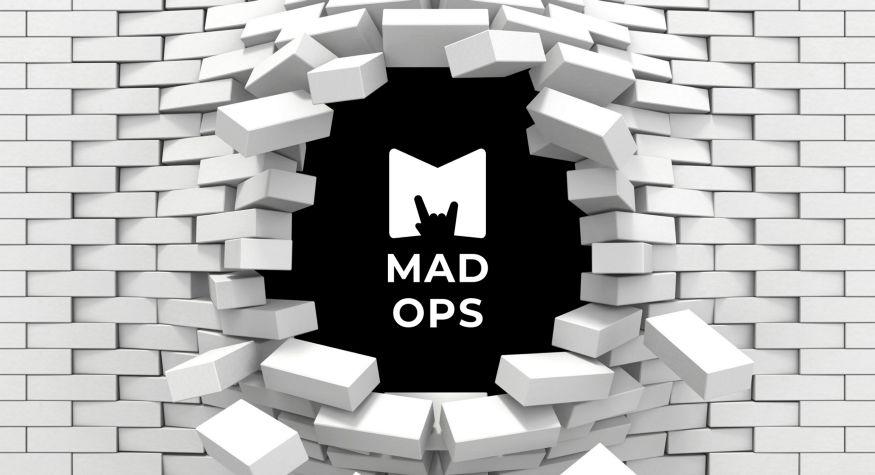 Our team started to apply DevOps practices long before we registered Mad Devs as a company. Specifically, I ran into this approach more than 10 years ago in a different company where I worked as a System Administrator.
Our team started to apply DevOps practices long before we registered Mad Devs as a company. Specifically, I ran into this approach more than 10 years ago in a different company where I worked as a System Administrator.
422. What is DevSecOps? - 7 Best Practices for Effective Automation in 2021
 DevSecOps is the theory of incorporating security activities within the process of DevOps.
DevSecOps is the theory of incorporating security activities within the process of DevOps.
423. How To Deploy A Secure Django Application on Kubernetes
 Deploy Django on Kubernetes in a few clicks without even Dockerizing your application.
Deploy Django on Kubernetes in a few clicks without even Dockerizing your application.
424. Managing a GitHub Organization With Infrastructure as Code
 This post will share our experience in adopting infrastructure as code (IaC) to manage GitHub organization resources.
This post will share our experience in adopting infrastructure as code (IaC) to manage GitHub organization resources.
425. How & Why We Built a Git Workflow to Accelerate API Testing
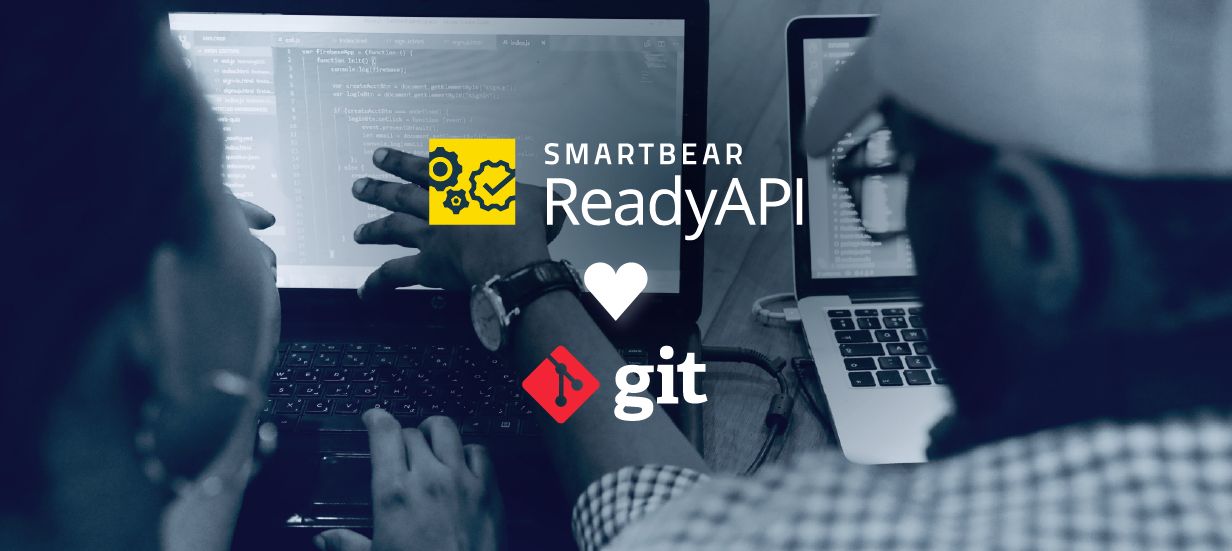 With the release of ReadyAPI v3.3.0, our all-in-one collaborative API quality platform, the team here at SmartBear completed the first round of work on a rethought Git workflow – all available directly within the tool.
With the release of ReadyAPI v3.3.0, our all-in-one collaborative API quality platform, the team here at SmartBear completed the first round of work on a rethought Git workflow – all available directly within the tool.
426. How Serverless Can Encourage Good Engineering Practices
 In this article, we list the seven reasons why and how serverless computing enables useful engineering practices.
In this article, we list the seven reasons why and how serverless computing enables useful engineering practices.
427. What is Docker and How to Get Started With It
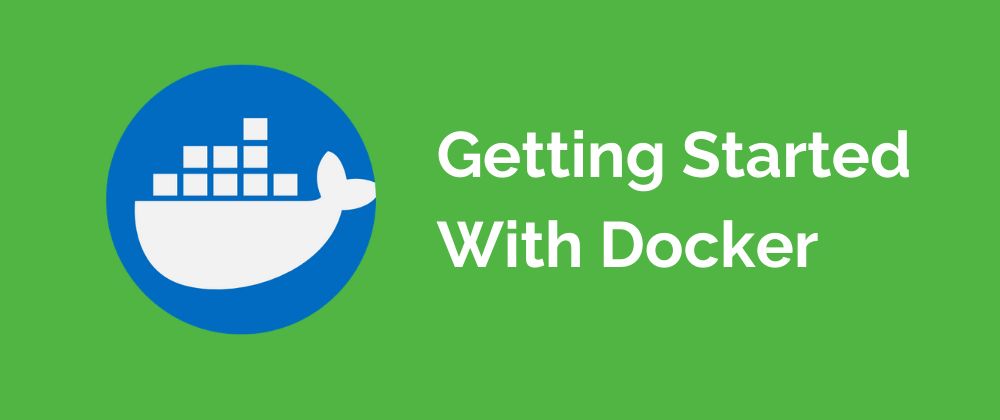 Containers have been around in Linux for years. It a concept where one or more processes are isolated from the rest of the system. The containers have all the files they need to run those processes independent of the system, which is why they have become a commonly used tool for deployments.
Containers have been around in Linux for years. It a concept where one or more processes are isolated from the rest of the system. The containers have all the files they need to run those processes independent of the system, which is why they have become a commonly used tool for deployments.
428. Your Serverless Guide is Ready
 Learn everything you need to know about Serverless, including case studies, essential concepts, guidelines, and best practices.
Learn everything you need to know about Serverless, including case studies, essential concepts, guidelines, and best practices.
429. How to Become a DevOps Engineer in 2022 (with Resources)
 Want to become a DevOps Engineer? Here is a roadmap and resources to become a DevOps engineer.
Want to become a DevOps Engineer? Here is a roadmap and resources to become a DevOps engineer.
[430. Getting Started with GitOps 2.0
Using ArgoCD & Codefresh](https://hackernoon.com/getting-started-with-gitops-20-using-argocd-and-codefresh-9cs3zl1)
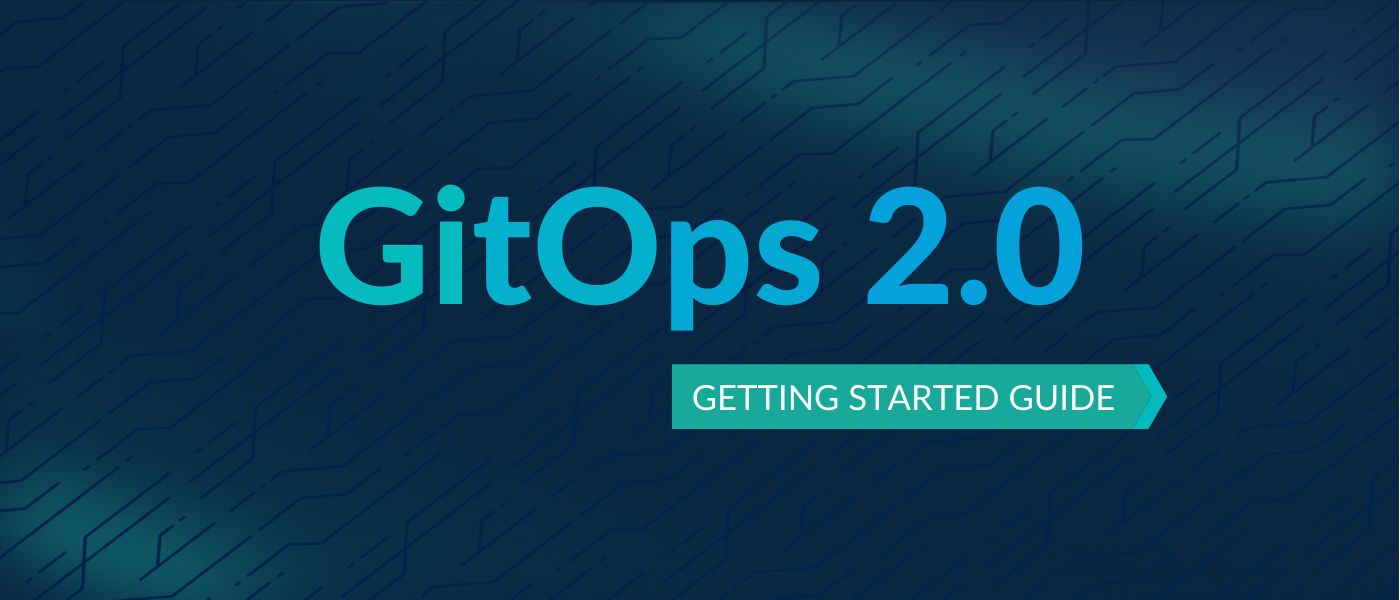 GitOps is the practice of deploying applications by using Git Operations only (and not clicking UI buttons). The paradigm already existed in one form or another but was officially named as “GitOps” in 2017 by Weaveworks and has since become very popular for Kubernetes deployments.
GitOps is the practice of deploying applications by using Git Operations only (and not clicking UI buttons). The paradigm already existed in one form or another but was officially named as “GitOps” in 2017 by Weaveworks and has since become very popular for Kubernetes deployments.
431. AWS re:Invent 2020: AWS Community Builders Program Top Highlights
 As an AWS Community Builder, I truly enjoyed attending AWS' re:Invent 2020 conference this year, diving into cloud technology, devops, databases & innovation.
As an AWS Community Builder, I truly enjoyed attending AWS' re:Invent 2020 conference this year, diving into cloud technology, devops, databases & innovation.
432. How to Improve Your CI/CD Workflow Using GitHub Actions

433. Comparing Container Pipelines
 Introduction
Introduction
434. How to Become a Blockchain Developer: How These 10 Pros Did It
 I asked 10 Web3 Blockchain Developers how they started in Web3, their core skills, the challenges they face and how they can help newbies navigate this path.
I asked 10 Web3 Blockchain Developers how they started in Web3, their core skills, the challenges they face and how they can help newbies navigate this path.
435. Access AWS Services from Google Kubernetes Engine Securely [A How-To Guide]
 It is not a rare case when an application running on Google Kubernetes Engine (GKE) needs to access Amazon Web Services (AWS) APIs. Any application has needs. Maybe it needs to run an analytics query on Amazon Redshift, access data stored in Amazon S3 bucket, convert text to speech with Amazon Polly or use any other AWS service. This multi-cloud scenario is common nowadays, as companies are working with multiple cloud providers.
It is not a rare case when an application running on Google Kubernetes Engine (GKE) needs to access Amazon Web Services (AWS) APIs. Any application has needs. Maybe it needs to run an analytics query on Amazon Redshift, access data stored in Amazon S3 bucket, convert text to speech with Amazon Polly or use any other AWS service. This multi-cloud scenario is common nowadays, as companies are working with multiple cloud providers.
436. KubeMQ Build & Deploy Test Drive: My First Impressions
 Meta: KubeMQ, makers of the eponymous Kubernetes-native message queue, has a new web-based tool that promises to make setup a breeze. Let's try it out!
Meta: KubeMQ, makers of the eponymous Kubernetes-native message queue, has a new web-based tool that promises to make setup a breeze. Let's try it out!
437. Why People Love High Availability And How To Achieve It
 Cloud Computing has emerged as a novel technology today. Every company is a software company today, and it is evident that no company can service without using the power of cloud computing. The cloud is seen as a conceptual layer on the Internet, making all available software and hardware resources transparent, rendering them accessible through a well-defined interface.
Cloud Computing has emerged as a novel technology today. Every company is a software company today, and it is evident that no company can service without using the power of cloud computing. The cloud is seen as a conceptual layer on the Internet, making all available software and hardware resources transparent, rendering them accessible through a well-defined interface.
438. Deploying an Open Source Secure Video Conference Server [A How To Guide]
 In this article, you'll create a new DigitalOcean account using a free credit link. Then, you will clone a GitHub repository, and use Terraform code to initialize, plan and apply resources to your account, using a preconfigured image from DigitalOcean and your custom domain name. Finally, you will access your account remotely via SSH and execute two scripts to configure both your video conference server and Let's Encrypt SSL to enable HTTPS.
In this article, you'll create a new DigitalOcean account using a free credit link. Then, you will clone a GitHub repository, and use Terraform code to initialize, plan and apply resources to your account, using a preconfigured image from DigitalOcean and your custom domain name. Finally, you will access your account remotely via SSH and execute two scripts to configure both your video conference server and Let's Encrypt SSL to enable HTTPS.
439. Destination Heroku: Changing My Tech Stack

440. Rethinking Programming: From Code to Cloud
 Earlier, developers simply wrote their program, built it and ran it. Today, developers need to also think of the various ways of running it whether it be as a binary on a machine (virtual most likely), by packaging it into a container, by making that container a part of a bigger deployment (K8s) or by deploying it into a serverless environment or a service mesh. However, these deployment options are not part of the programming experience for a developer. The developer has to write code in a certain way to work well in a given execution environment, and removing this from the programming problem isn’t good.
Earlier, developers simply wrote their program, built it and ran it. Today, developers need to also think of the various ways of running it whether it be as a binary on a machine (virtual most likely), by packaging it into a container, by making that container a part of a bigger deployment (K8s) or by deploying it into a serverless environment or a service mesh. However, these deployment options are not part of the programming experience for a developer. The developer has to write code in a certain way to work well in a given execution environment, and removing this from the programming problem isn’t good.
441. Kubernetes Readiness Probes Implementation in Microservices
 A great deal has already been written about readiness and liveness checks and I don’t intend to cover that ground again. Rather I want to cover, very specifically, their use in a large microservices architecture.
A great deal has already been written about readiness and liveness checks and I don’t intend to cover that ground again. Rather I want to cover, very specifically, their use in a large microservices architecture.
442. How to Use the Scientific Method to Debug Containerized Applications
 Ah yes—“It works fine on my machine!” Perhaps the most famous saying in our industry. Even with the advent of containers that provide consistent environments across the SDLC, we still hear developers fall back to this claim when a defect is found. But in the end, if the code doesn't work in test or production, it doesn't work—even if it works locally. So as a developer, being able to deep dive into your containerized application to fix the problem—regardless of the environment—is a critical skill we must all learn.
Ah yes—“It works fine on my machine!” Perhaps the most famous saying in our industry. Even with the advent of containers that provide consistent environments across the SDLC, we still hear developers fall back to this claim when a defect is found. But in the end, if the code doesn't work in test or production, it doesn't work—even if it works locally. So as a developer, being able to deep dive into your containerized application to fix the problem—regardless of the environment—is a critical skill we must all learn.
443. The Future Of DevOps: Continuous Design/Continuous Integration
 The interaction among many tools in the design & development space all point to a new emerging category: “Continuous Design / Continuous Integration" or "CD/CI"
The interaction among many tools in the design & development space all point to a new emerging category: “Continuous Design / Continuous Integration" or "CD/CI"
444. Apply These Techniques To Improve ML Model Deployment With AWS Lambda
 As builders of an MLOps platform, we often get asked whether serverless is the right compute architecture to deploy models. The cost savings touted by serverless seem extremely appealing for ML workloads as for other traditional workloads.
As builders of an MLOps platform, we often get asked whether serverless is the right compute architecture to deploy models. The cost savings touted by serverless seem extremely appealing for ML workloads as for other traditional workloads.
445. Enabling Multi-Cloud Kubernetes Communication with Skupper
 Intro
Intro
446. The Essential Guide to Pod Eviction On Kubernetes
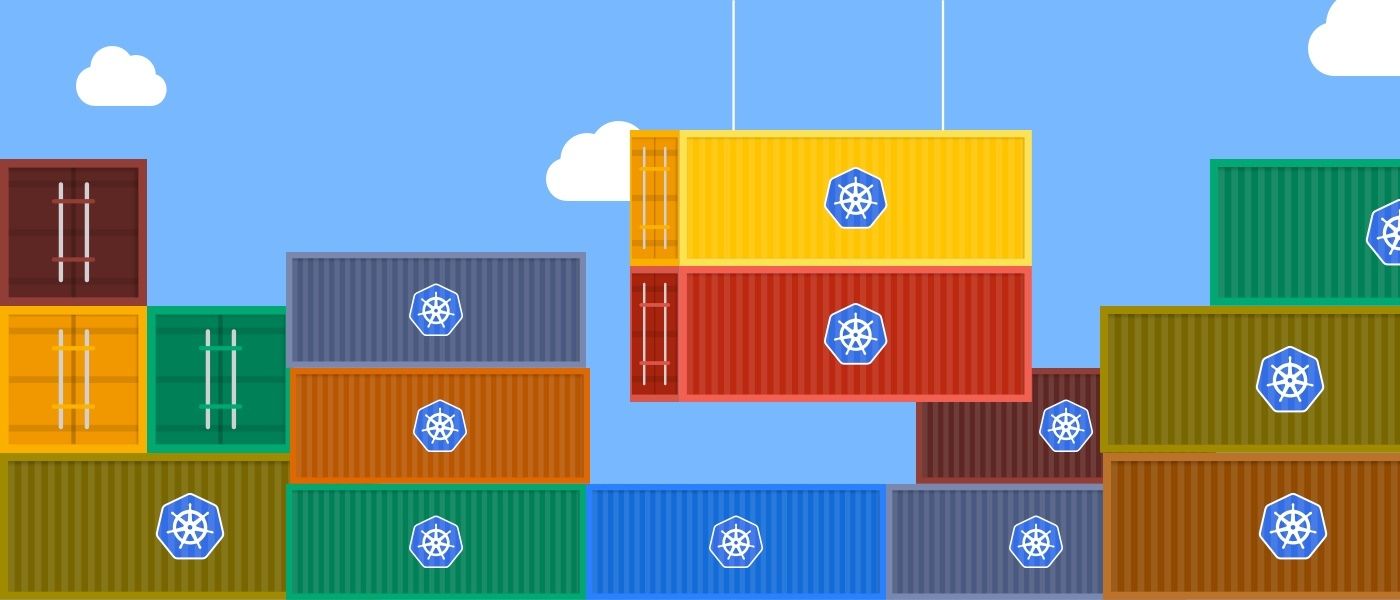 By nature, pods in Kubernetes clusters are ephemeral. They can be created, killed, and moved around by the scheduler. This may occasionally cause disruption in the microservices if pods are not configured properly.
By nature, pods in Kubernetes clusters are ephemeral. They can be created, killed, and moved around by the scheduler. This may occasionally cause disruption in the microservices if pods are not configured properly.
447. State of DevOps Cloud Solutions [Update: 2020]

448. 8 Fallacies of Continuous Delivery
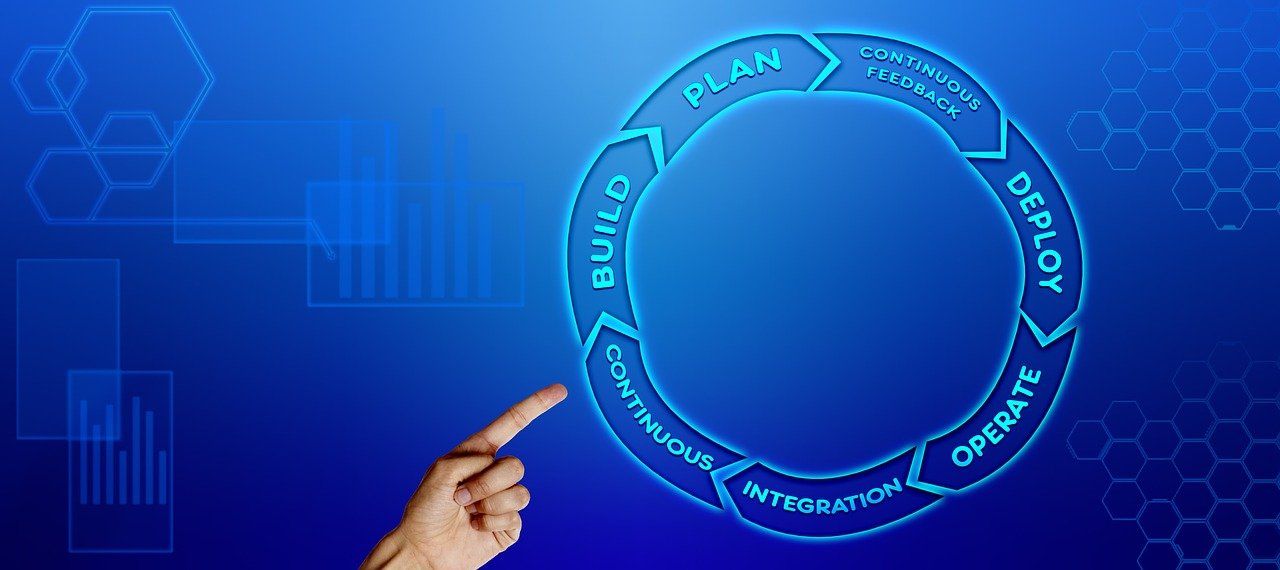 A quintessential piece for anyone working with distributed systems is the Fallacies of Distributed Computing by L Peter Deutsch. Even when working with modern platforms such as Kubernetes, the assertions made in the Fallacies of Distributed Computing prove to be very true around latency, bandwidth and system administration.
A quintessential piece for anyone working with distributed systems is the Fallacies of Distributed Computing by L Peter Deutsch. Even when working with modern platforms such as Kubernetes, the assertions made in the Fallacies of Distributed Computing prove to be very true around latency, bandwidth and system administration.
449. Creating Custom Incident Response Workflows with n8n 🚨 [A How To Guide]

450. How To Make The Kubernetes Operator Rock: Basic Principles
 This blog post demonstrates how you can use the Operator Lifecycle Manager to deploy a Kubernetes Operator to your cluster. Then, you will use the Operator to spin up an Elastic Cloud on Kubernetes (ECK) cluster.
This blog post demonstrates how you can use the Operator Lifecycle Manager to deploy a Kubernetes Operator to your cluster. Then, you will use the Operator to spin up an Elastic Cloud on Kubernetes (ECK) cluster.
451. Terraform Configuration Syntax Overview
 All you need to know to get started about Terraform Syntax.
All you need to know to get started about Terraform Syntax.
452. Kubernetes Tutorial: Using The System For Personal Projects
 Learn how to deploy a simple rest API with ExpressJS and expose it using a service and ingress. Great for Kubernetes personal projects.
Learn how to deploy a simple rest API with ExpressJS and expose it using a service and ingress. Great for Kubernetes personal projects.
453. Improving the Working Environment for Developers - In 3 Stages Only
 … and incidentally establishing DevOps.
… and incidentally establishing DevOps.
454. How To Install Kubernetes on CentOS7
 This tutorial is for the ones who want to try out the Kubernetes installation on CentOS.
This tutorial is for the ones who want to try out the Kubernetes installation on CentOS.
455. Should You Learn Kubernetes in 2022
 With the increasing popularity of containerized applications, the container orchestration platform Kubernetes has become a must in the toolset of a developer.
With the increasing popularity of containerized applications, the container orchestration platform Kubernetes has become a must in the toolset of a developer.
456. What is a Service Mesh?
 In our previous post on API Gateways we discussed how services handle external client to service (North-South) traffic.
In our previous post on API Gateways we discussed how services handle external client to service (North-South) traffic.
457. AWS Step Functions: When They Might Come In Handy
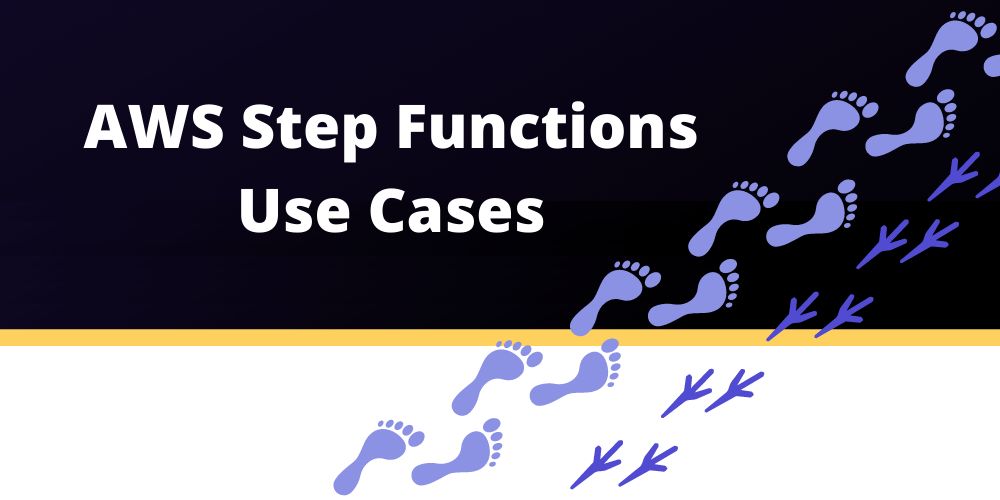 As you probably already know, Step Functions is a serverless Workflow Service provided by Amazon Web Services (AWS). There’s a lot to discuss about this service, and you’ll find plenty of vital information in our AWS Step Functions: The Ultimate Guide as well as in our series of articles that’ll dive deep into various aspects regarding this AWS service.
As you probably already know, Step Functions is a serverless Workflow Service provided by Amazon Web Services (AWS). There’s a lot to discuss about this service, and you’ll find plenty of vital information in our AWS Step Functions: The Ultimate Guide as well as in our series of articles that’ll dive deep into various aspects regarding this AWS service.
458. How to Configure And Monitor Apache Spark on Kubernetes
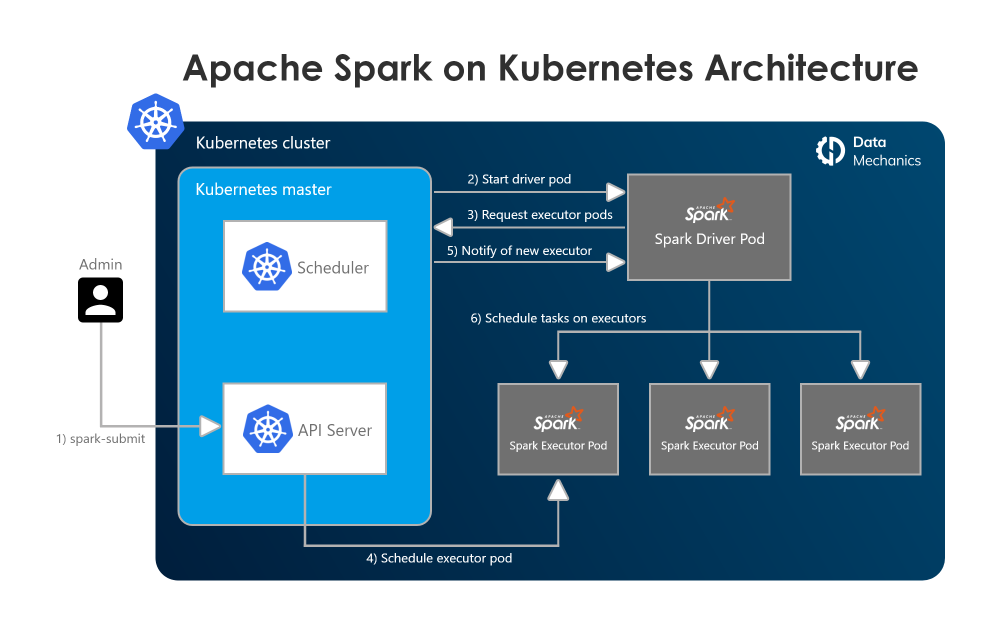 Earlier this year at Spark + AI Summit, we had the pleasure of presenting our session on the best practices and pitfalls of running Apache Spark on Kubernetes (K8s).
Earlier this year at Spark + AI Summit, we had the pleasure of presenting our session on the best practices and pitfalls of running Apache Spark on Kubernetes (K8s).
459. The Ultimate Beginners Guide To Kubernetes and Container Orchestration
 Kubernetes (AKA K8s) is a platform implementing orchestration of containers in a cluster environment. In this article, we review Kubernetes & Containers.
Kubernetes (AKA K8s) is a platform implementing orchestration of containers in a cluster environment. In this article, we review Kubernetes & Containers.
460. Which CI is Best For My Team?
 At the beginning of developing and building a new application or product, before writing any business logic, it's necessary to make some difficult decisions. These decisions can include which cloud hosting platform to use, which continuous integration (CI) tool to use, and various development configuration choices. These decisions can dictate the speed and success of your engineering efforts. Therefore, choosing the right CI tool can make or break the velocity and quality of a team's code production.
At the beginning of developing and building a new application or product, before writing any business logic, it's necessary to make some difficult decisions. These decisions can include which cloud hosting platform to use, which continuous integration (CI) tool to use, and various development configuration choices. These decisions can dictate the speed and success of your engineering efforts. Therefore, choosing the right CI tool can make or break the velocity and quality of a team's code production.
461. The Container Anatomy: A Kernel Introduction
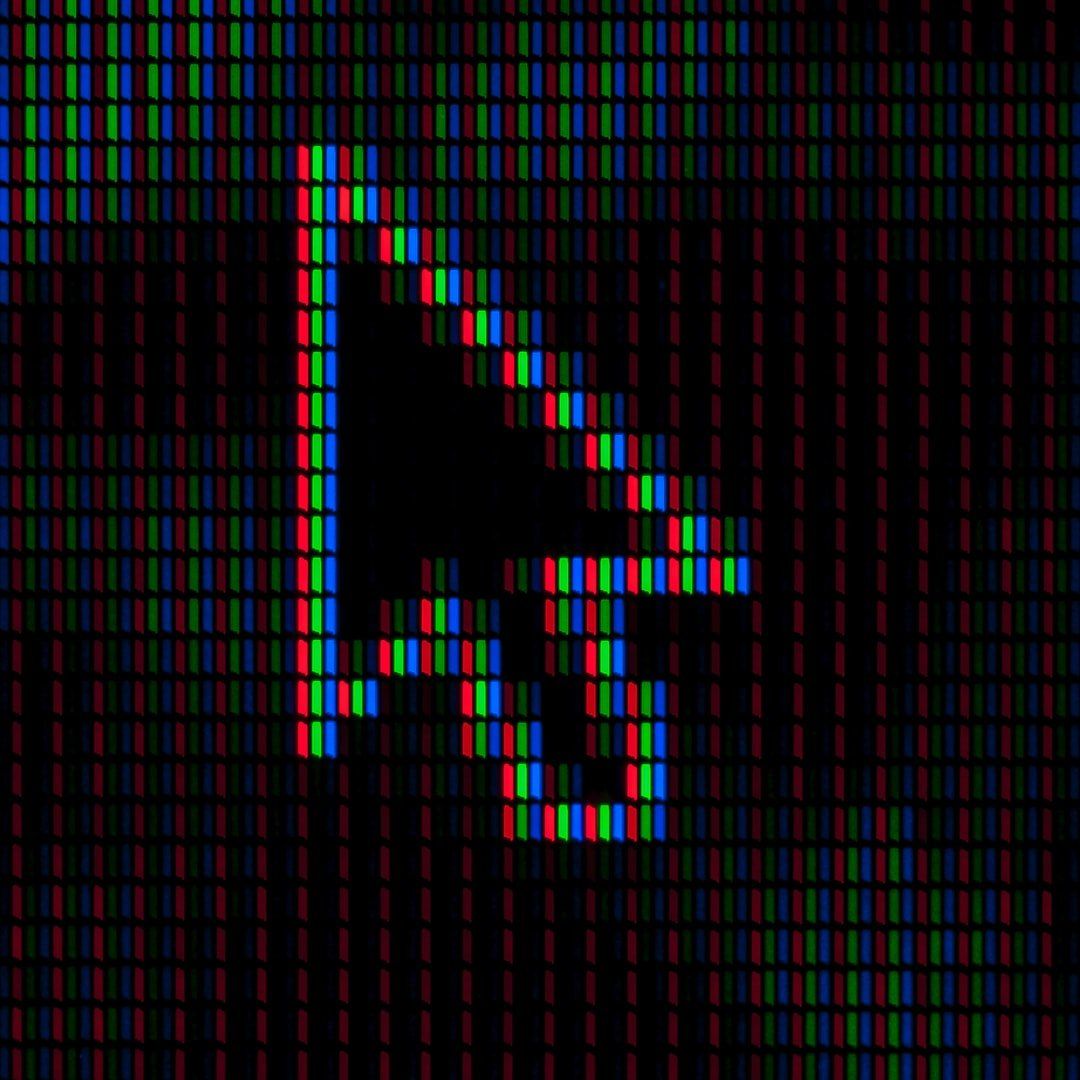 Welcome to this tutorial series, where we will evolve from the anatomy of a container inside the Linux Kernel, and will keep building pieces and evolving till the publication of a service into an Orchestration Platform. The general idea is to detail as much as possible (without being massive) how is things working under the hood.
Welcome to this tutorial series, where we will evolve from the anatomy of a container inside the Linux Kernel, and will keep building pieces and evolving till the publication of a service into an Orchestration Platform. The general idea is to detail as much as possible (without being massive) how is things working under the hood.
462. How to Automate the Creation of a Development Server
 In part one, I have shown how to create a remote development using DigitalOcean and rsync. In part two, I will show how to automate the entire process using Bash script.
In part one, I have shown how to create a remote development using DigitalOcean and rsync. In part two, I will show how to automate the entire process using Bash script.
463. How to Build an Effective and Sustainable On-Call Schedule For Your Team
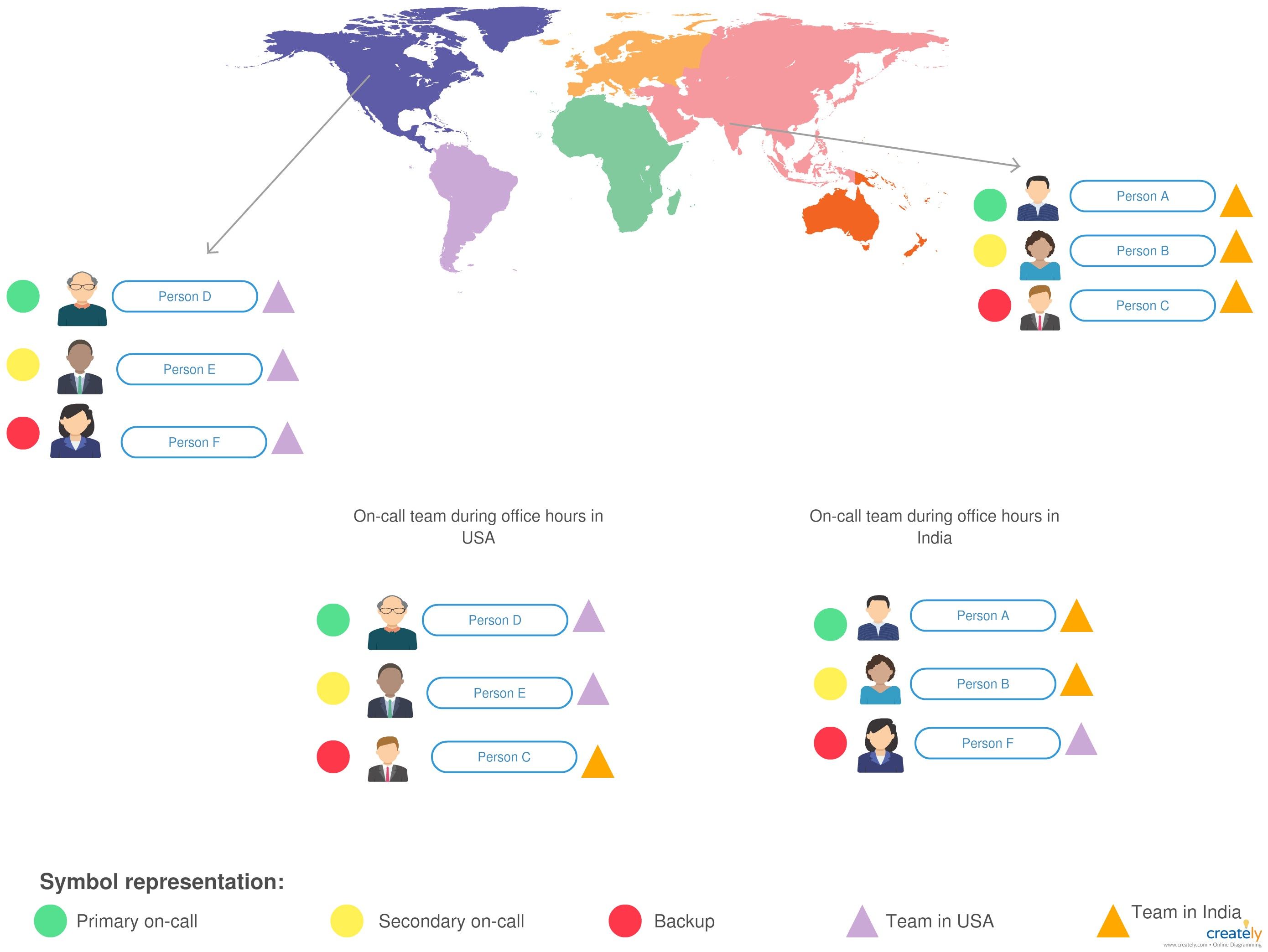
464. Ultimate Guide to Synthetic Monitoring Products
 As we look forward to 2021, Synthetic Monitoring continues to be as important as ever in understanding the performance of your app or website. But your synthetic monitoring is only as good as the tool you're using and there are a lot of product choices. Since selecting the best one for you is critical, the choice can be overwhelming. Price, setup ease, accuracy, and more play a part in the best solution.
As we look forward to 2021, Synthetic Monitoring continues to be as important as ever in understanding the performance of your app or website. But your synthetic monitoring is only as good as the tool you're using and there are a lot of product choices. Since selecting the best one for you is critical, the choice can be overwhelming. Price, setup ease, accuracy, and more play a part in the best solution.
465. How To Use Gulp And Prettier on Code Snippets and API Outputs
 Code editors come with "beautifiers" which programmers can use to make code uniformly and conventionally laid out, aka: "pretty".
Code editors come with "beautifiers" which programmers can use to make code uniformly and conventionally laid out, aka: "pretty".
466. Application Deployment: Recipe for Great Serverless Strategy
 This is true for the most part, but Serverless apps also have a certain property that can make their deployment and maintenance time consuming.
This is true for the most part, but Serverless apps also have a certain property that can make their deployment and maintenance time consuming.
467. 7 Best DevOps Security Practices: DevSecOps and Its Merits
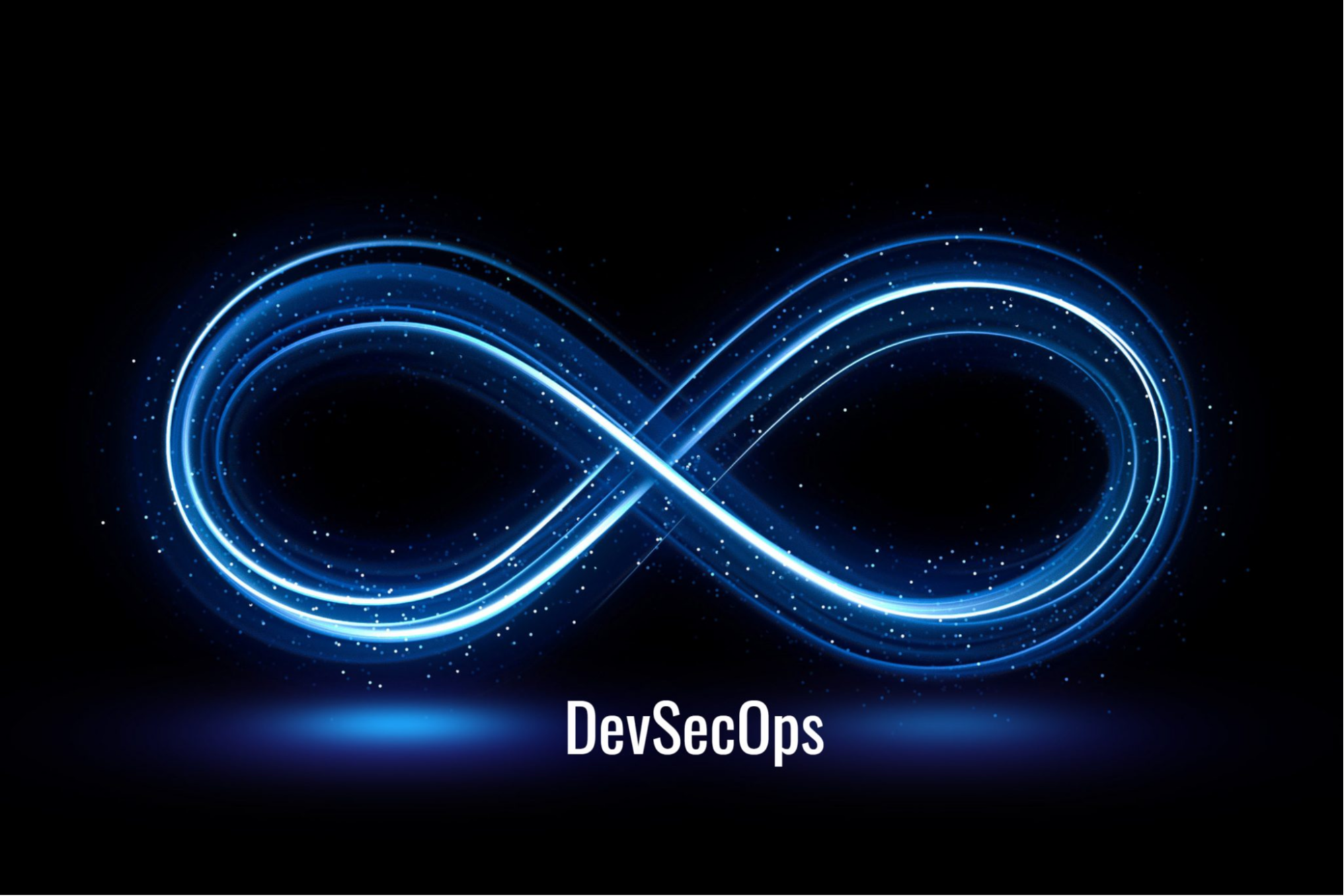 DevOps has transformed the way operational engineers and software developers reason. Gone are the days when a code was written, implemented, and managed by operations. The DevOps model has remodeled the system of product and application production. As a result, faster results have become the pinnacle of delivering at the speed which the market demands.
DevOps has transformed the way operational engineers and software developers reason. Gone are the days when a code was written, implemented, and managed by operations. The DevOps model has remodeled the system of product and application production. As a result, faster results have become the pinnacle of delivering at the speed which the market demands.
468. How To Set Up Azure DevOps CI/CD Pipelines for Android
 Learn how to enable CI CD Pipelines to automatically deploy your Android App Bundle (.aab) build to the Google Play Console.
Learn how to enable CI CD Pipelines to automatically deploy your Android App Bundle (.aab) build to the Google Play Console.
469. AppOps with Kubernetes and Devtron: The Perfect Fit
 Kubernetes needs no introduction in this cloud-native world. It was born when I was a middle-aged man. Years later, I am still as young as earlier (take with a pinch of salt) while Kubernetes grew out to be a fine tool that outperformed other platforms in enabling operational efficiency and application resilience.
Kubernetes needs no introduction in this cloud-native world. It was born when I was a middle-aged man. Years later, I am still as young as earlier (take with a pinch of salt) while Kubernetes grew out to be a fine tool that outperformed other platforms in enabling operational efficiency and application resilience.
470. The Apprentice's Guide to Kubernetes
 Let's dig into Kubernetes, a powerful orchestrator that will ease deployment and automatically manage your applications on a set of machines.
Let's dig into Kubernetes, a powerful orchestrator that will ease deployment and automatically manage your applications on a set of machines.
471. AppOps with Kubernetes and Devtron: The Perfect Fit
 Kubernetes needs no introduction in this cloud-native world. It was born when I was a middle-aged man. Years later, I am still as young as earlier (take with a pinch of salt) while Kubernetes grew out to be a fine tool that outperformed other platforms in enabling operational efficiency and application resilience.
Kubernetes needs no introduction in this cloud-native world. It was born when I was a middle-aged man. Years later, I am still as young as earlier (take with a pinch of salt) while Kubernetes grew out to be a fine tool that outperformed other platforms in enabling operational efficiency and application resilience.
472. Authentication Vs. Authorization [Infographic]
 In online protection systems, authentication and authorization play an important role. They confirm the user's identity and grant your website or application access. In order to decide which combination of web tools best fits your security needs, it is important that you notice their differences.
In online protection systems, authentication and authorization play an important role. They confirm the user's identity and grant your website or application access. In order to decide which combination of web tools best fits your security needs, it is important that you notice their differences.
473. Grasping Serverless At Scale Is A Lot Easier Than You Think
 Best Practices of Serverless at Scale
Best Practices of Serverless at Scale
474. Automating Node.js Unit Testing With DroneCI Using Jest Framework
 Unit testing is a crucial part of software development that has grown in popularity over the past few years.
Unit testing is a crucial part of software development that has grown in popularity over the past few years.
475. Kubernetes Security For Developers: A Quick Start Guide
 One of the basics of running Kubernetes in a production environment is security—how to ensure container images, pods, specific microservices, are protected.
One of the basics of running Kubernetes in a production environment is security—how to ensure container images, pods, specific microservices, are protected.
476. How to Create a Conditional Workflow With Advanced GitHub Actions
 How can I create one GitHub workflow which uses different secrets based on a triggered branch? The conditional workflow will solve this problem.
How can I create one GitHub workflow which uses different secrets based on a triggered branch? The conditional workflow will solve this problem.
477. AWS Lambda: How to Set Up Private Storage in an AWS S3 Bucket to Upload Images
 We will deploy a serverless infrastructure based on AWS Lambda for uploading images (and any other files) with private storage in an AWS S3-based bucket.
We will deploy a serverless infrastructure based on AWS Lambda for uploading images (and any other files) with private storage in an AWS S3-based bucket.
478. The Grand Cluster Hotel
 A non-technical explanation of Docker containers, Kubernetes, and clusters.
A non-technical explanation of Docker containers, Kubernetes, and clusters.
479. 7 DevOps Myths - Busted
 There are plenty of DevOps myths circulating the developers’ community. This is no surprise, considering how much excitement the DevOps concept has brought over the recent years.
There are plenty of DevOps myths circulating the developers’ community. This is no surprise, considering how much excitement the DevOps concept has brought over the recent years.
480. Watching the Requests Go By: Reconstructing an API Spec with APIClarity
 In this post, we’re going to look at what API reconstruction is and how APIClarity solves the API observability problem.
In this post, we’re going to look at what API reconstruction is and how APIClarity solves the API observability problem.
481. DevOps Principles: Culture Vs. Tooling

482. What happened After I Scanned 2.6 Million Domains for Exposed .DS_Store Files

483. What is the Best Way to Measure Developer Productivity in 2022?
 DORA Metrics are a great start, however Nicole Forsgren from Github recognises the need for Collaboration and Wellbeing to become part of developer performance.
DORA Metrics are a great start, however Nicole Forsgren from Github recognises the need for Collaboration and Wellbeing to become part of developer performance.
484. Observability vs Monitoring: What's the Difference?
 Monitoring has been a basic system to track the health of servers for years. Now it is not enough.
Monitoring has been a basic system to track the health of servers for years. Now it is not enough.
485. Kubernetes Explained Simply: Cleaning Up After Yourself [Part 10]
 If there's one thing that Kubernetes makes easy, it's creating resources – pods, deployments, volumes – before long you'll have tons of them lying around.
If there's one thing that Kubernetes makes easy, it's creating resources – pods, deployments, volumes – before long you'll have tons of them lying around.
486. A Christmas Story: Using DevOps to Streamline Gift Delivery at the North Pole
 The first breakthrough came when they switched Elf-driven production into automated pipelines.
The first breakthrough came when they switched Elf-driven production into automated pipelines.
487. Developers and Cloud IaaS: Why Devs Should Set Up Their Own Cloud Infrastructure
 Why Infrastructure as a Service (IaaS) still rules, even for developers.
Why Infrastructure as a Service (IaaS) still rules, even for developers.
488. The Path to Becoming An AWS Certified DevOps Engineer
 We are a devops consulting firm specializing in managed cloud services. We manage infrastructure, modernize apps, and migrate you to the cloud.
We are a devops consulting firm specializing in managed cloud services. We manage infrastructure, modernize apps, and migrate you to the cloud.
489. We're The DevOps Workflow You Were Promised
 host a monolith or microservice-based application; enterprises can layer the platform into their own private cloud cluster on kubernetes
host a monolith or microservice-based application; enterprises can layer the platform into their own private cloud cluster on kubernetes
490. How to Ensure DevOps Security in CI/CD Environments
 Security is a product feature, and everyone involved in the DevOps workflow is responsible for it. Here are some key measures to ensure greater security.
Security is a product feature, and everyone involved in the DevOps workflow is responsible for it. Here are some key measures to ensure greater security.
491. How Create a GUI for Remote Servers with i3 Window Manager
 This article is about providing management via a UI by installing a window manager or desktop environment for servers.
This article is about providing management via a UI by installing a window manager or desktop environment for servers.
492. Everything you need to know about Helm – Part I
 Helm is a package manager for Kubernetes. In this tutorial we will explore Helm tasks, components, charts, and installations.
Helm is a package manager for Kubernetes. In this tutorial we will explore Helm tasks, components, charts, and installations.
493. Challenges and Opportunities of Serverless in 2021
 Going serverless has many benefits, but it's not without its issues. Learn about the most common serverless challenges & how to overcome them.
Going serverless has many benefits, but it's not without its issues. Learn about the most common serverless challenges & how to overcome them.
494. Cracking the AWS Certified Solutions Architect Associate Exam
 Tips to pass AWS Solutions Architect - Associate certificate exam
Tips to pass AWS Solutions Architect - Associate certificate exam
495. Why Your Monitoring Dashboard May Be Feeding You Phantom Metrics
 We trust our metrics to show us the status of our system and where it misbehaves. But do our metrics show us what really happened?
We trust our metrics to show us the status of our system and where it misbehaves. But do our metrics show us what really happened?
496. Golang: Using systemd for Zero Downtime Restarts and Deploys
 By configuring a systemd socket, you can tell systemd to listen on the configured ports and start your service with a copy of the listening sockets.
By configuring a systemd socket, you can tell systemd to listen on the configured ports and start your service with a copy of the listening sockets.
497. The Risks Lurking in Your CI/CD Pipeline
 One key objective of any modern software product is to reach its end-user at an unprecedented speed.
One key objective of any modern software product is to reach its end-user at an unprecedented speed.
498. Using a Product-Led Growth Mindset to Improve User Experience
 How changing the development mindset to a product-led-growth one can improve the user experience by focusing the thought process for the team's members.
How changing the development mindset to a product-led-growth one can improve the user experience by focusing the thought process for the team's members.
499. Building The Koyeb Serverless Engine: Why We Moved From Kubernetes to Nomad, Firecracker, and Kuma
 We built our own serverless engine. Here is our story of moving user workloads from Kubernetes to a custom stack based on Nomad, Firecracker, and Kuma.
We built our own serverless engine. Here is our story of moving user workloads from Kubernetes to a custom stack based on Nomad, Firecracker, and Kuma.
500. Saving Up To 80% With Amazon EC2 Spot
 WE LOVE SPOT AND YOU SHOULD TOO
WE LOVE SPOT AND YOU SHOULD TOO
501. Infrastructure as Code: Almost Everything You Need to Know
 Infrastructure as Code is invaluable when it comes to automating infrastructure by defining infrastructure configurations as code.
Infrastructure as Code is invaluable when it comes to automating infrastructure by defining infrastructure configurations as code.
502. Why Developer Advocates Are on the Rise
 Working as an educator in tech is very much an exercise in branding. If you define yourself as a trainer then clients assume you don’t really know what you’re talking about. But present yourself as a nerdy developer and they will assume you can’t teach. So you learn to strike a balance between the extremes with good humour and a healthy dose of humility.
Working as an educator in tech is very much an exercise in branding. If you define yourself as a trainer then clients assume you don’t really know what you’re talking about. But present yourself as a nerdy developer and they will assume you can’t teach. So you learn to strike a balance between the extremes with good humour and a healthy dose of humility.
503. Measuring DevOps Metrics: A How-To Guide
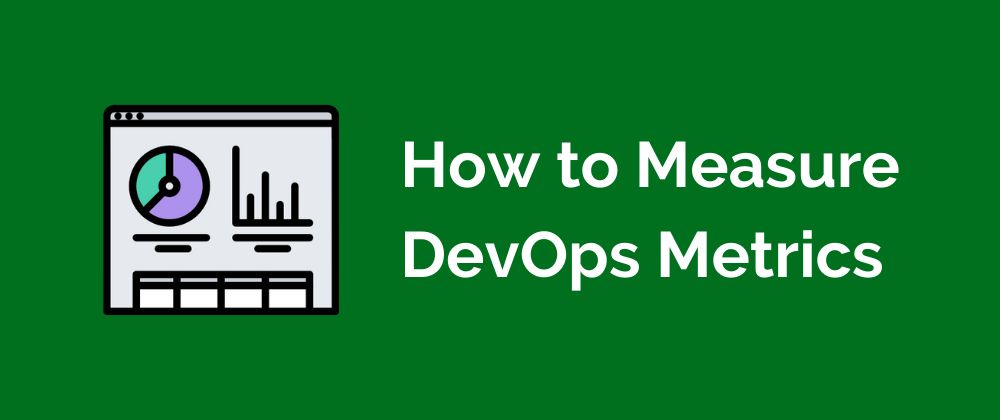 DevOps is supposed to help streamline the process of taking code changes and getting them to production for users to enjoy. But what exactly does it mean for the process to be "streamlined"? One way to answer this is to start measuring metrics.
DevOps is supposed to help streamline the process of taking code changes and getting them to production for users to enjoy. But what exactly does it mean for the process to be "streamlined"? One way to answer this is to start measuring metrics.
504. SaaS Tools For Small Business: From Project Management to Marketing
 Small businesses are in a continuous struggle to manage their workload and summing up their monetary expenses. One of the most affordable and easiest ways is to keep a check on the latest SaaS software which handles all that’s necessary to your business while reducing the manual efforts.
Small businesses are in a continuous struggle to manage their workload and summing up their monetary expenses. One of the most affordable and easiest ways is to keep a check on the latest SaaS software which handles all that’s necessary to your business while reducing the manual efforts.
505. 3 Reasons Webhooks Are Better than Regular HTTP Requests
 A guide on why Webhooks are often considered better than regular HTTP requests for a few reasons.
A guide on why Webhooks are often considered better than regular HTTP requests for a few reasons.
506. Another Reason to Use Docker

507. 15 Highly-Rated DevOps Tools for 2022
 This article looks at the top CI/CD, automation, orchestration, and other DevOps pipeline tools to give you a detailed list of our Top 15 DevOps tools in 2022.
This article looks at the top CI/CD, automation, orchestration, and other DevOps pipeline tools to give you a detailed list of our Top 15 DevOps tools in 2022.
508. A Deep Dive Into AWS Key Management Service (KMS)
 AWS KMS Security and Key Management
AWS KMS Security and Key Management
509. 6 DevOps Trends in 2022 That DevOps Engineers Should Adopt
 The role of DevOps engineers, their responsibilities, growth opportunities, a set of important soft & hard skills, and most importantly, DevOps trends in 2022.
The role of DevOps engineers, their responsibilities, growth opportunities, a set of important soft & hard skills, and most importantly, DevOps trends in 2022.
510. Should Deploying Production Infrastructure be Hard?
 Below I'll explain why I built terra_boi to deploy Clientelify, why I think it was downloaded 1,000 times in the first 10 days (despite not promoting it anywhere), and why deploying an application to production shouldn't suck.
Below I'll explain why I built terra_boi to deploy Clientelify, why I think it was downloaded 1,000 times in the first 10 days (despite not promoting it anywhere), and why deploying an application to production shouldn't suck.
511. The Four V's of Effective Cybersecurity Posture
 The risk of falling victim to a cyber-attack is growing with the Russian war in Ukraine. Combining these 4 approaches is needed to ace optimal defense.
The risk of falling victim to a cyber-attack is growing with the Russian war in Ukraine. Combining these 4 approaches is needed to ace optimal defense.
512. How Shift-Right Testing Can Build Product Resiliency
 Shift-right testing improves product resiliency by uncovering issues that surface under heavy user traffic and are difficult to simulate in test environments.
Shift-right testing improves product resiliency by uncovering issues that surface under heavy user traffic and are difficult to simulate in test environments.
513. Best Practices, Guidelines and Tools for Code Reviews
 Code reviews are a type of software quality assurance activity that involves evaluations of code in order to identify bugs, improve code quality, and...
Code reviews are a type of software quality assurance activity that involves evaluations of code in order to identify bugs, improve code quality, and...
514. Kubernetes Explained Simply: Getting At Those Logs [Part 4]
 UNIX/Linux system administrators the world over regularly use log files to get to the bottom of outages and malfunctions. An indispensable tool in that regard is tail(1), particularly its follow mode flag (-f). When we're in a Kubernetes world, we'd love to use something similar.
UNIX/Linux system administrators the world over regularly use log files to get to the bottom of outages and malfunctions. An indispensable tool in that regard is tail(1), particularly its follow mode flag (-f). When we're in a Kubernetes world, we'd love to use something similar.
515. Serverless Tekton Pipelines on AWS EKS Fargate
 Building an on-demand, server less Continuous Delivery automation solution using Tekton and AWS EKS Fargate
Building an on-demand, server less Continuous Delivery automation solution using Tekton and AWS EKS Fargate
516. CodeNotary provides a Free Open Source Timestamping Service for Developers
 CodeNotary's trusted timestamping tool securely keeps track of the creation and modification time of a document.
CodeNotary's trusted timestamping tool securely keeps track of the creation and modification time of a document.
517. TestProject 2.0 Next-Gen: Test Automation Without Limitations
 Hello Folks, I'm back with my article on TestProject but this time with their 2.0 release.
Hello Folks, I'm back with my article on TestProject but this time with their 2.0 release.
518. GitHub Actions To Bring You Consistency
 Read an article on how to use the GitHub Actions Evrone wrote to run rubocop, brakeman, reek, fasterer, hadolint, and dotenv-linter linters on your project.
Read an article on how to use the GitHub Actions Evrone wrote to run rubocop, brakeman, reek, fasterer, hadolint, and dotenv-linter linters on your project.
519. Adding Code to AWS Lambda, Lambda Layers, and Lambda Extensions Using Docker
 With Docker, we have three ways to add code to Lambda that isn’t directly part of our Lambda function. What does this mean?
With Docker, we have three ways to add code to Lambda that isn’t directly part of our Lambda function. What does this mean?
520. Managing Active Directory Objects with Azure AD Provider for Terraform
 Learn how to manage Active Directory Objects with Azure AD Provider for Terraform. See examples of how to authenticate and grant the correct permissions.
Learn how to manage Active Directory Objects with Azure AD Provider for Terraform. See examples of how to authenticate and grant the correct permissions.
521. What Is The True Cost of Using Public APIs
 How ubiquitous are APIs in today’s development processes? Try asking an engineer how many APIs their project integrates. Most teams won’t know the answer. From analytics tools to maps and cloud hosting, modern applications use a hefty collection of internal and public APIs. Developers use these to quickly assemble applications that would otherwise take much more effort to build. However, there’s a forgotten expense not typically calculated early in a project.
How ubiquitous are APIs in today’s development processes? Try asking an engineer how many APIs their project integrates. Most teams won’t know the answer. From analytics tools to maps and cloud hosting, modern applications use a hefty collection of internal and public APIs. Developers use these to quickly assemble applications that would otherwise take much more effort to build. However, there’s a forgotten expense not typically calculated early in a project.
522. DevOps 2.0: The Value of SRE
 Mixing DevOps and SRE gives a brilliant outcome. Learn more about site reliability and its principles to ensure business growth and top tech performance.
Mixing DevOps and SRE gives a brilliant outcome. Learn more about site reliability and its principles to ensure business growth and top tech performance.
523. Speed and Quality are Not Mutually Exclusive: Telemetry is the Key
 All engineering teams strive to build the best product they can as quickly as possible. Some, though, stumble into a false dichotomy of choosing between speed and quality. While that choice may have been necessary in the past, it’s not the case today.
All engineering teams strive to build the best product they can as quickly as possible. Some, though, stumble into a false dichotomy of choosing between speed and quality. While that choice may have been necessary in the past, it’s not the case today.
524. 3 Free Ways to Learn Kubernetes and Red Hat OpenShift
 I've compiled a list of three resources where you can get started with Kubernetes and Red Hat OpenShift, Red Hat's enterprise Kubernetes platform.
I've compiled a list of three resources where you can get started with Kubernetes and Red Hat OpenShift, Red Hat's enterprise Kubernetes platform.
525. How to Become a Team of Elite Developers
 The Accelerate State of DevOps report ranks performance into Low, Medium, High and Elite.
The Accelerate State of DevOps report ranks performance into Low, Medium, High and Elite.
526. Common Mistakes to Avoid When Migrating
 Licensing fees and risk are the main drivers for migrating to Open Source Cloud Foundry or Kubernetes...
Licensing fees and risk are the main drivers for migrating to Open Source Cloud Foundry or Kubernetes...
527. Three DevOps Cultural Changes You Need To Adopt
 The Three Most Important Lessons that anyone in DevOps needs to learn to get better: Set clear goals, Create Safe Environment, Structure Your Technology
The Three Most Important Lessons that anyone in DevOps needs to learn to get better: Set clear goals, Create Safe Environment, Structure Your Technology
528. Kubernetes Day-2 Operations, Part I
 Kubernetes is the de-facto standard for container clustering and orchestration. Its adoption is soaring in cloud-native applications.
Kubernetes is the de-facto standard for container clustering and orchestration. Its adoption is soaring in cloud-native applications.
529. Understanding and Extending Kubernetes with Custom Resource Definitions API
 Intro
Intro
530. 6 Virtual DevOps Conferences to Attend in 2021
 Free to distribute and use in any form
Free to distribute and use in any form
531. We Built a Modern Data Stack for Startups
 Here's how we built our data stack at incident.io. If you're a company that cares about data access for all, follow this guide and we guarantee great results.
Here's how we built our data stack at incident.io. If you're a company that cares about data access for all, follow this guide and we guarantee great results.
532. Software Intelligence: How to Take Quality Control in 6 Practical Steps
 Lead Photo by Max Duzij on Unsplash
Lead Photo by Max Duzij on Unsplash
533. How to Use G-Suite as an Identity Provider For Your AWS Account
 The idea behind SSO it’s pretty simple, you login into only one place and can use multiple applications.
The idea behind SSO it’s pretty simple, you login into only one place and can use multiple applications.
534. APIOps: Combining DevOps and GitOps to Improve API Development
 DevOps is where the rubber meets the road. In this article, understand APIOps and how the adoption of an API gateway impacts DevOps.
DevOps is where the rubber meets the road. In this article, understand APIOps and how the adoption of an API gateway impacts DevOps.
535. 15 of the Best Continuous Delivery Tools
 Continuous Delivery is one of the best practices for software development, but what are the best tools for it today? Here are my picks.
Continuous Delivery is one of the best practices for software development, but what are the best tools for it today? Here are my picks.
536. How To Get Better at Kubernetes
 Here are some operators and advanced use cases for them to help you level up your Kubernetes game and to get even better at programming with that language.
Here are some operators and advanced use cases for them to help you level up your Kubernetes game and to get even better at programming with that language.
537. How Observability and Monitoring Produces Better Software
 An article focused on deep diving into observability and its significance in software. Its history, goals, the importance of observability, and the issues that
An article focused on deep diving into observability and its significance in software. Its history, goals, the importance of observability, and the issues that
538. Kubernetes Explained Simply: Label it to Enable it [Part 6]
 The building block of almost all Kubernetes deployments is the pod – one or more containers sharing a network stack. Pods are where the magic happens, where we get our logs, and where we spend most of our time troubleshooting outages and malfunctions.
The building block of almost all Kubernetes deployments is the pod – one or more containers sharing a network stack. Pods are where the magic happens, where we get our logs, and where we spend most of our time troubleshooting outages and malfunctions.
539. Why DevOps Is Important During the COVID-19 Pandemic
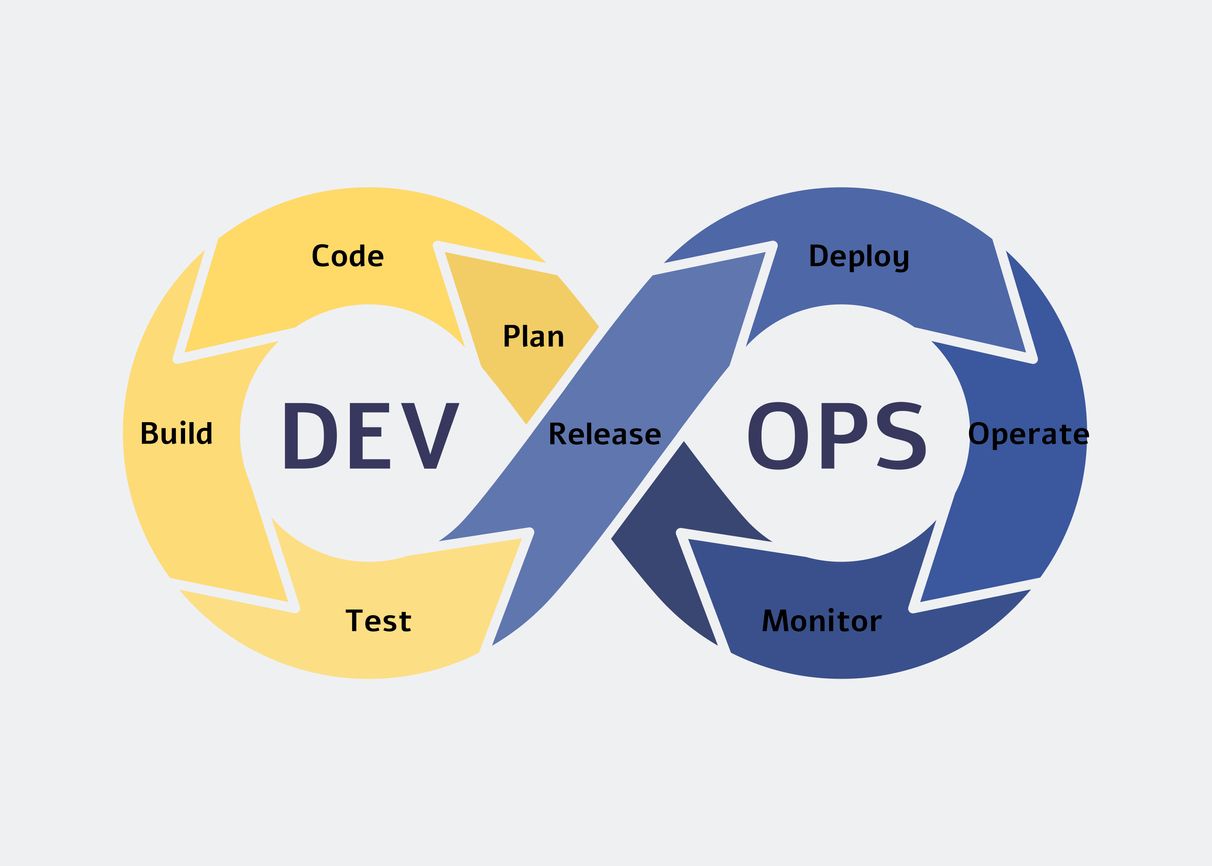 Disruption is the name of the game these days, from current remote work settings due to COVID-19 to even more normal, every-day disruptions (like the process of moving and renovating a home, which I’m currently experiencing first-hand). As a habit-driven developer myself, I have come to the realization that the stable work environment I’ve come to rely on is no more.
Disruption is the name of the game these days, from current remote work settings due to COVID-19 to even more normal, every-day disruptions (like the process of moving and renovating a home, which I’m currently experiencing first-hand). As a habit-driven developer myself, I have come to the realization that the stable work environment I’ve come to rely on is no more.
540. How to Set up a Heroku Postgres Database with Librato
 In this article, you will learn how to set up a Heroku Postgres database with Librato for automated monitoring.
In this article, you will learn how to set up a Heroku Postgres database with Librato for automated monitoring.
541. How To Manage Infrastructure With Terraform
 What is Terraform?
What is Terraform?
542. Scaling Our AWS Infrastructure

543. How To Assess And Improve Your Software Engineering Team's Performance
 How do you measure how well your engineering team is doing and how do you find the bottlenecks where you can improve things the most?
How do you measure how well your engineering team is doing and how do you find the bottlenecks where you can improve things the most?
544. How to Define Service Level Objectives as Code to Enhance SRE
 This article introduces how you can define executable Service Level Objectives in code; and why this is such a powerful technique for SRE.
This article introduces how you can define executable Service Level Objectives in code; and why this is such a powerful technique for SRE.
545. Why Hybrid Deployment Could be the Best Solution for Better DevSecOps
 DevSecOps is gaining popularity rapidly because it’s the only well-defined methodology to integrate the entire application development process while addressing security as well.
DevSecOps is gaining popularity rapidly because it’s the only well-defined methodology to integrate the entire application development process while addressing security as well.
546. Docker And JFrog Partnership: Path To Limitless DevOps in the Cloud
 This article talks about the recent partnership between Docker and JFrog and how this partnership impacts developers and enterprises positively
This article talks about the recent partnership between Docker and JFrog and how this partnership impacts developers and enterprises positively
547. How to Optimize Large Scale Serverless Applications for Operational Excellence
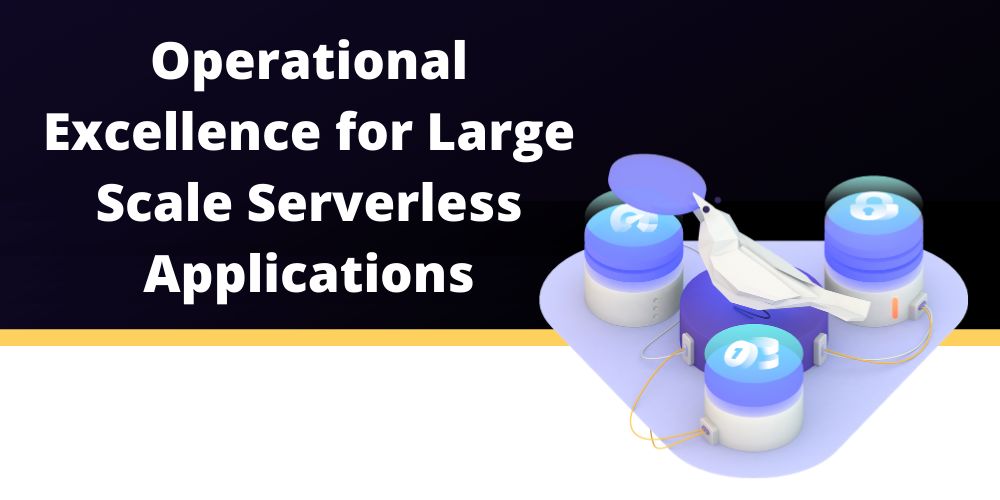 Managing applications at scale often comes up as one of the biggest concerns for businesses; How can it work smoothly? How do we monitor so many resources? How do we maintain best practices with constantly evolving infrastructure? In this article, we run through the best approach for operational excellence looking at serverless monitoring strategy, serverless alerting strategy, and security and compliance best practices.
Managing applications at scale often comes up as one of the biggest concerns for businesses; How can it work smoothly? How do we monitor so many resources? How do we maintain best practices with constantly evolving infrastructure? In this article, we run through the best approach for operational excellence looking at serverless monitoring strategy, serverless alerting strategy, and security and compliance best practices.
548. How to Use Zeet to Take Your Devops from 0 to 100
 What happens when you combine an awesome idea with a driven leader? You get an exciting product, like Zeet, which automates your DevOps tasks.
What happens when you combine an awesome idea with a driven leader? You get an exciting product, like Zeet, which automates your DevOps tasks.
549. Diary of a Wimpy DevOps Engineer: Exploring Monoliths
 Learn how we improved our ETL processing performance from 550ms to 94ms by switching to micro-service based architecture and SingleStore
Learn how we improved our ETL processing performance from 550ms to 94ms by switching to micro-service based architecture and SingleStore
550. NodeJS: Code Execution Monitoring With Inspector
 Have you ever desired to watch your code running, instead of just imagining it?
Have you ever desired to watch your code running, instead of just imagining it?
551. How to Use Docker Multi-Stage Build to Create Optimal Images for Dev And Production
 Docker has sharply risen in popularity in the past years. It has been one of the tools that have changed the way we work as software engineers and DevOps Engineers. From Docker v 17.05 multi-stage build was introduced which helped abandon the older builder pattern with use of stages and target. This post discussed how you can exploit docker multi-stage build to build optimal images suited for dev/test and production with a NodeJs example application.
Docker has sharply risen in popularity in the past years. It has been one of the tools that have changed the way we work as software engineers and DevOps Engineers. From Docker v 17.05 multi-stage build was introduced which helped abandon the older builder pattern with use of stages and target. This post discussed how you can exploit docker multi-stage build to build optimal images suited for dev/test and production with a NodeJs example application.
552. DevOps Implementation: Is it Really Worth an IT Company's Investment?
 DevOps has emerged as the future of the software delivery process. Companies are shifting their focus on optimizing software quality and time through DevOps.
DevOps has emerged as the future of the software delivery process. Companies are shifting their focus on optimizing software quality and time through DevOps.
553. 6 Tips To Scale an AppSync Project To 200+ Resolvers That Will Blow Your Mind
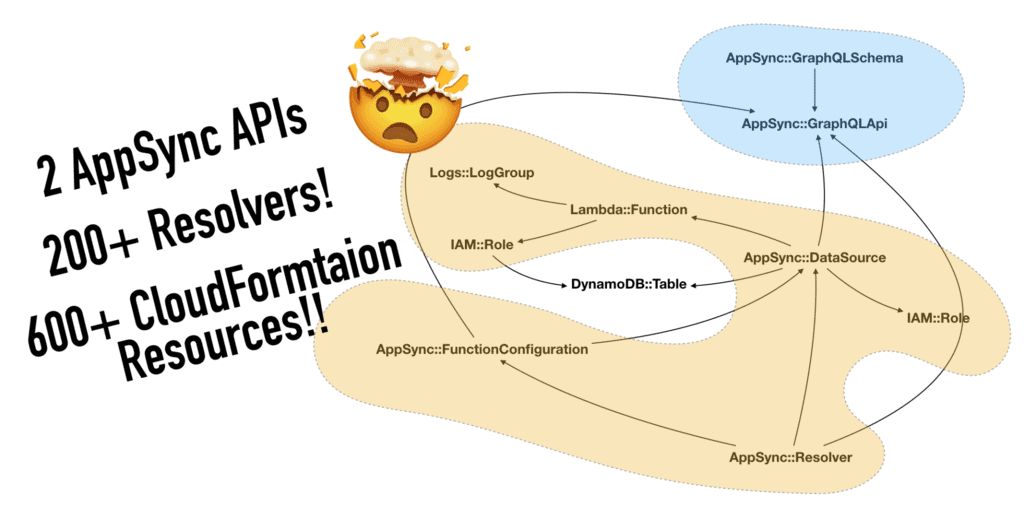 I have been working on a large AppSync project for a client these past few months. The initial version of the app was built in just a few weeks, but the client has commissioned additional features and the project has kept growing. At the time of writing, this project has over 200 AppSync resolvers and 600 CloudFormation resources.
I have been working on a large AppSync project for a client these past few months. The initial version of the app was built in just a few weeks, but the client has commissioned additional features and the project has kept growing. At the time of writing, this project has over 200 AppSync resolvers and 600 CloudFormation resources.
554. The Restrictive Pod Security Policies in Kubernetes
 Kubernetes Pod Security Policies
Kubernetes Pod Security Policies
Thank you for checking out the 554 most read stories about Devops on HackerNoon.
Visit the /Learn Repo to find the most read stories about any technology.

